Home Blog Education Presentation Skills 101: A Guide to Presentation Success

Presentation Skills 101: A Guide to Presentation Success
Getting the perfect presentation design is just a step toward a successful presentation. For the experienced user, building presentation skills is the answer to elevating the power of your message and showing expertise on any subject. Still, one can ask: is it the same set of skills, or are they dependable on the type of presentation?
In this article, we will introduce the different types of presentations accompanied by the skillset required to master them. The purpose, as always, is to retain the audience’s interest for a long-lasting and convincing message.
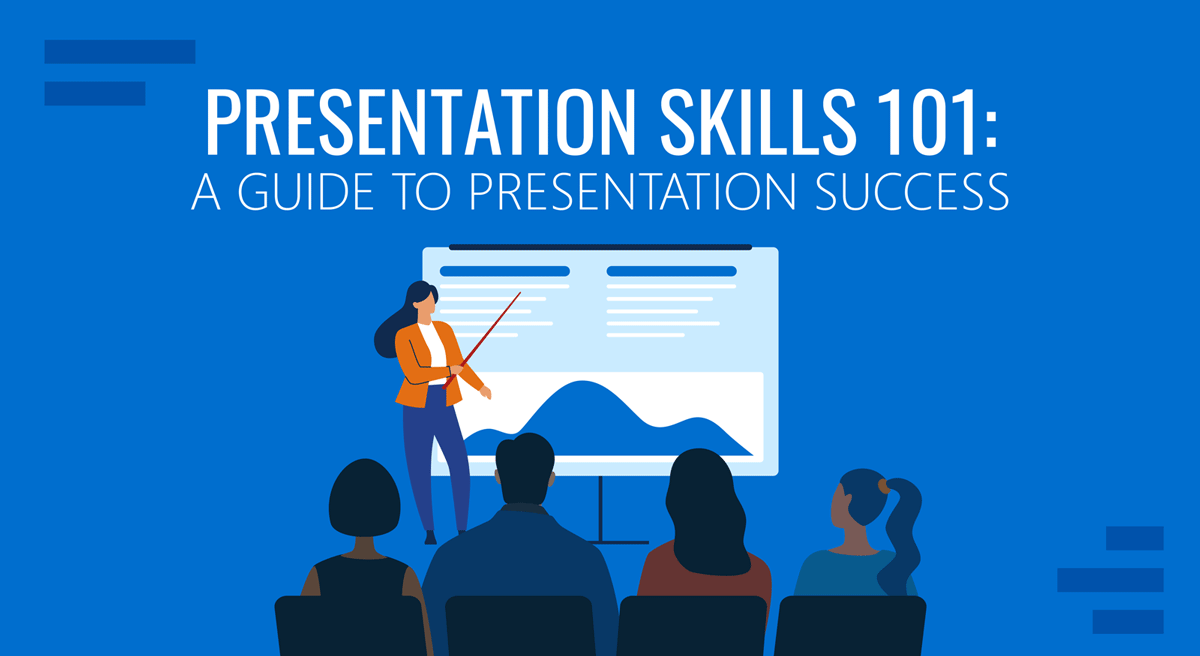
Table of Contents
The Importance of Presentation Skills
Persuasive presentations, instructional presentations, informative presentations, inspirational presentations, basic presentation skills, what are the main difficulties when giving a presentation, recommendations to improve your presentation skills, closing statement.
Effective communication is the answer to reaching business and academic goals. The scenarios in which we can be required to deliver a presentation are as diverse as one can imagine. Still, some core concepts apply to all presentations.
We define presentation skills as a compendium of soft skills that directly affect your presentation performance and contribute to creating a great presentation. These are not qualities acquired by birth but skills you ought to train and master to delve into professional environments.
You may ask: is it really that evident when a presenter is not prepared? Here are some common signs people can experience during presentations:
- Evasive body language: Not making eye contact with the audience, arms closed tightly to the body, hands in pockets all the time.
- Lack of interest in the presenter’s voice: dull tone, not putting an effort to articulate the topics.
- Doubting when asked to answer a question
- Irksome mood
The list can go on about common presenter mistakes , and most certainly, it will affect the performance of any presented data if the lack of interest by the presenter is blatantly obvious. Another element to consider is anxiety, and according to research by the National Institute of Mental Health, 73% of the population in the USA is affected by glossophobia , which is the fear of public speaking, judgment, or negative evaluation by other people.
Therefore, presentation skills training is essential for any business professional who wants to achieve effective communication . It will remove the anxiety from presentation performance and help users effectively deliver their message and connect with the audience.
Archetypes of presentations
Persuasive presentations aim to convince the audience – often in short periods – to acquire a product or service, adhere to a cause, or invest in a company. For business entrepreneurs or politicians, persuasive presentations are their tool for the trade.
Unless you aim to be perceived as an imposter, a proper persuasive presentation has the elements of facts, empathy, and logic, balanced under a well-crafted narrative. The central pillar of these presentations is to identify the single factor that gathered your audience: it could be a market need, a social cause, or a revolutionary concept for today’s society. It has to be something with enough power to gather critiques – both good and bad.
That single factor has to be backed up by facts. Research that builds your hypothesis on how to solve that problem. A deep understanding of the target audience’s needs , concerns, and social position regarding the solution your means can offer. When those elements are in place, building a pitch becomes an easy task.
Graphics can help you introduce information in a compelling format, lowering the need for lengthy presentations. Good presentation skills for persuasive presentations go by the hand of filtering relevant data and creating the visual cues that resonate with what your audience demands.
One powerful example of a persuasive presentation is the technique known as the elevator pitch . You must introduce your idea or product convincingly to the audience in a timeframe between 30 seconds and less than 2 minutes. You have to expose:
- What do you do
- What’s the problem to solve
- Why is your solution different from others
- Why should the audience care about your expertise
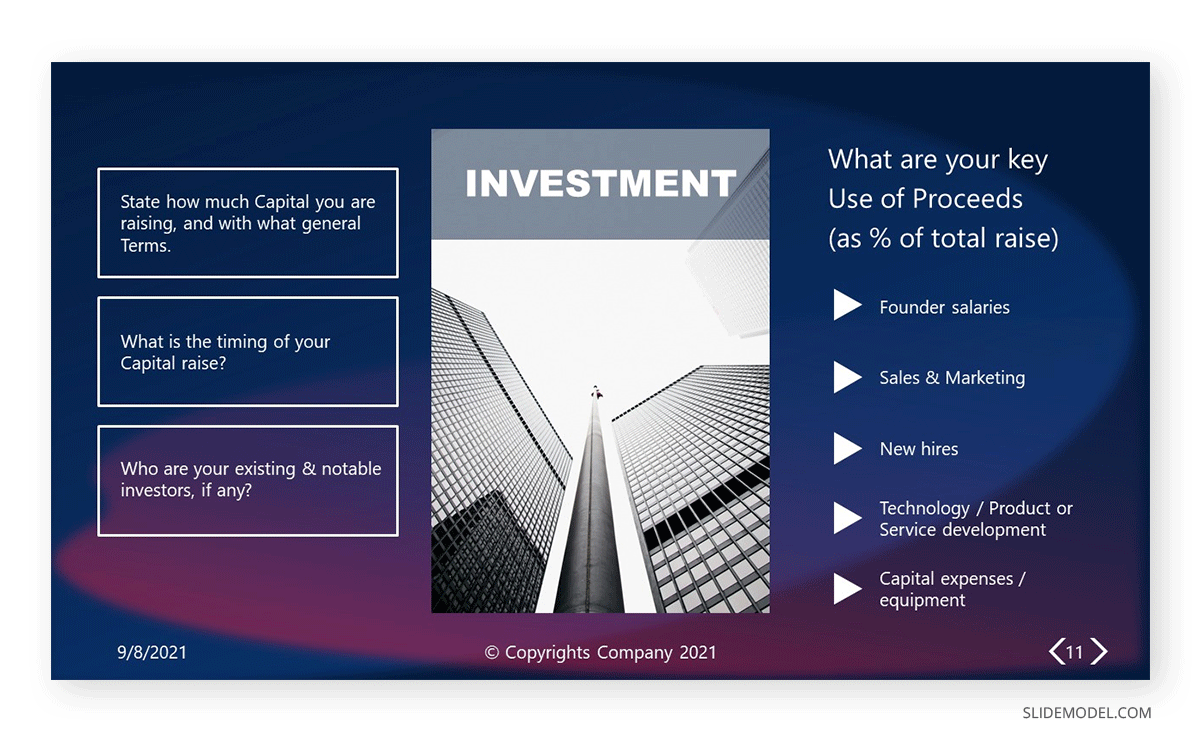
For that very purpose, using engaging graphics with contrasting colors elevates the potential power of your message. It speaks professionalism, care for details, and out-of-the-box thinking. Knowing how to end a presentation is also critical, as your CTAs should be placed with care.
Therefore, let’s resume the requirements of persuasive presentations in terms of good presentation skills:
- Identifying problems and needs
- Elaborating “the hook” (the element that grabs the audience’s attention)
- Knowing how to “tie” your audience (introducing a piece of information related to the hook that causes an emotional impact)
- Broad knowledge of body language and hand gestures to quickly convey your message
- Being prepared to argue a defense of your point of view
- Handling rejection
- Having a proactive attitude to convert opportunities into new projects
- Using humor, surprise, or personal anecdotes as elements to sympathize with the audience
- Having confidence
- Be able to summarize facts and information in visually appealing ways
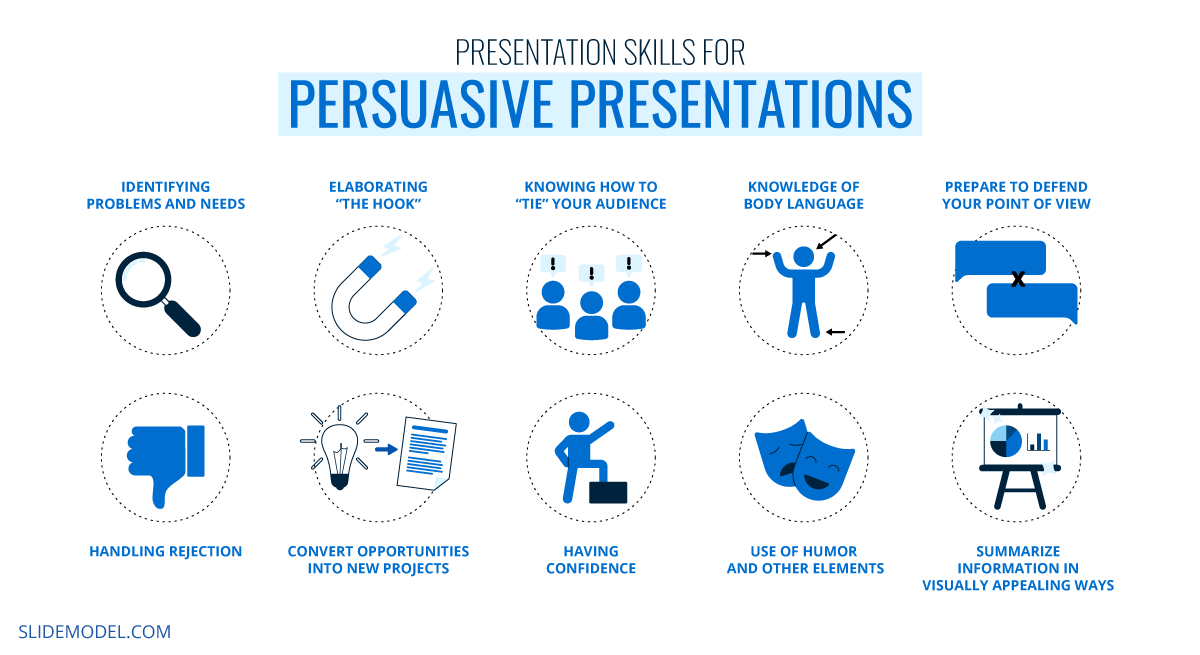
You can learn more about persuasive presentation techniques by clicking here .
In the case of instructional presentations, we ought to differentiate two distinctive types:
- Lecture Presentations : Presentations being held at universities or any other educative institution. Those presentations cover, topic by topic, and the contents of a syllabus and are created by the team of teachers in charge of the course.
- Training Presentations : These presentations take place during in-company training sessions and usually comprise a good amount of content that is resumed into easy-to-take solutions. They are aimed to coach employees over certain topics relevant to their work performance. The 70-20-10 Model is frequently used to address these training situations.
Lecture presentations appeal to the gradual introduction of complex concepts, following a structure set in the course’s syllabus. These presentations often have a similar aesthetic as a group of professors or researchers created to share their knowledge about a topic. Personal experience does tell that course presentations often rely on factual data, adequately documented, and on the theoretical side.
An example of a presentation that lies under this concept is a Syllabus Presentation, used by the teaching team to introduce the subject to new students, evaluation methods, concepts to be learned, and expectations to pass the course.
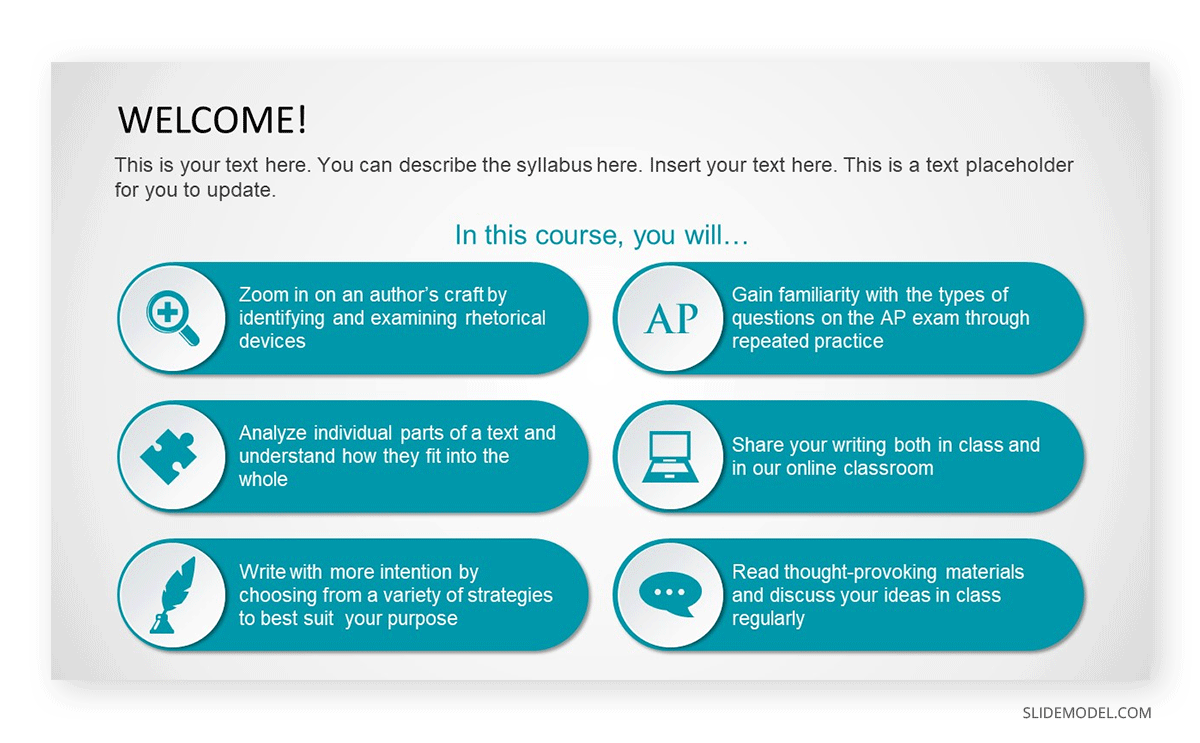
On the other hand, training presentations are slide decks designed to meet an organization’s specific needs in the formal education of their personnel. Commonly known as “continuous education,” plenty of companies invest resources in coaching their employees to achieve higher performance results. These presentations have the trademark of being concise since their idea is to introduce the concepts that shall be applied in practice sessions.
Ideally, the training presentations are introduced with little text and easy-to-recognize visual cues. Since the idea is to summarize as much as possible, these are visually appealing for the audience. They must be dynamic enough to allow the presenter to convey the message.
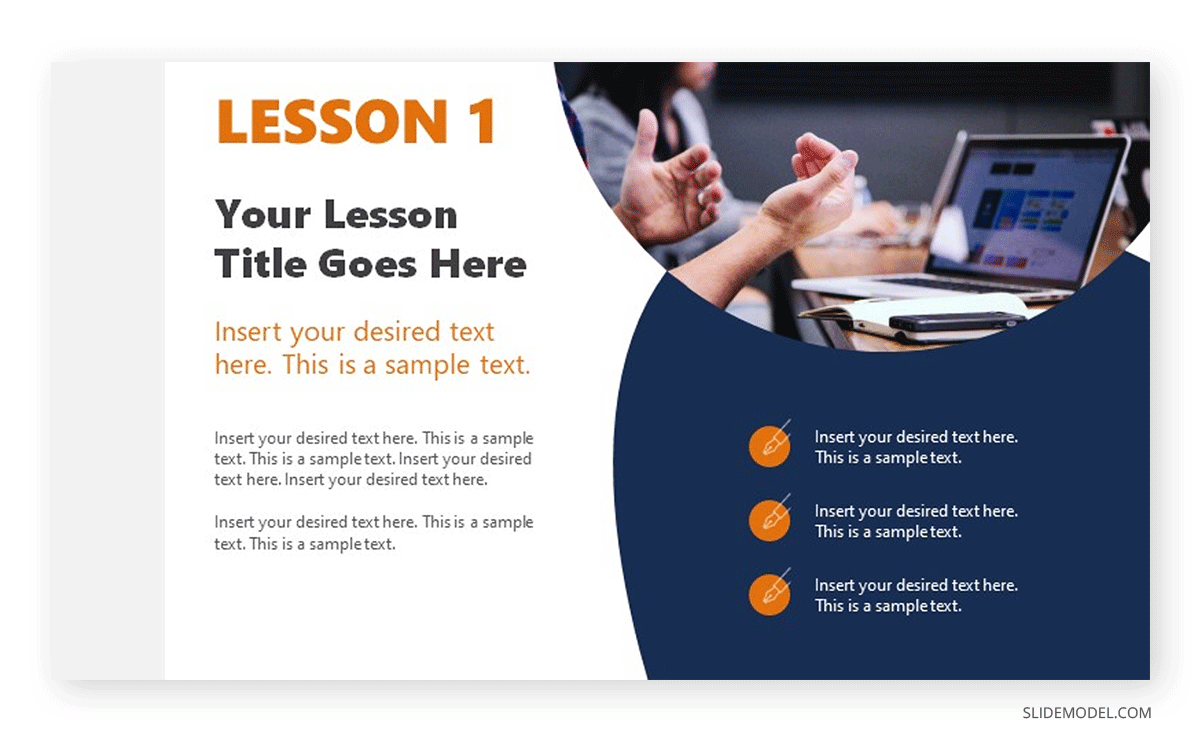
Those key takeaways remind employees when they revisit their learning resources and allow them to ruminate on questions that fellow workers raise.
To sum up this point, building presentation skills for instructional presentations requires:
- Ability to put complex concepts into simpler words
- Patience and a constant learning mindset
- Voice training to deliver lengthy speeches without being too dense
- Ability to summarize points and note the key takeaways
- Empathizing with the audience to understand their challenges in the learning process
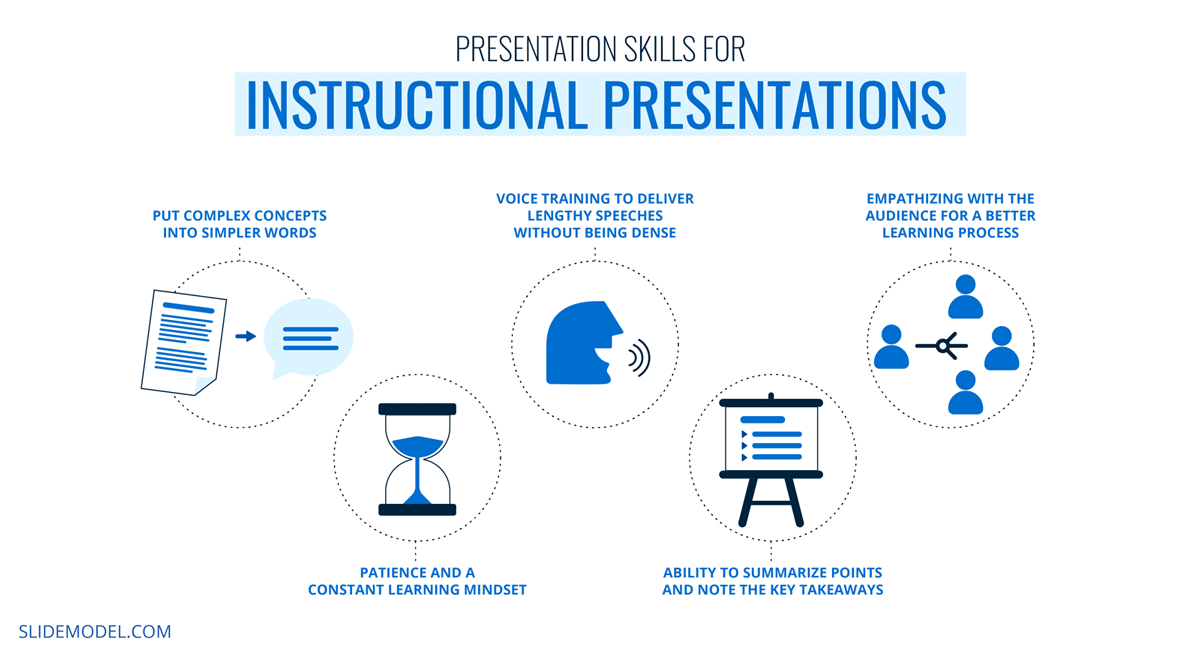
The informative presentations take place in business situations, such as when to present project reports from different departments to the management. Another potential usage of these presentations is in SCRUM or other Agile methodologies, when a sprint is completed, to discuss the advance of the project with the Product Owner.
As they are presentations heavily dependent on data insights, it’s common to see the usage of infographics and charts to express usually dense data in simpler terms and easy to remember.
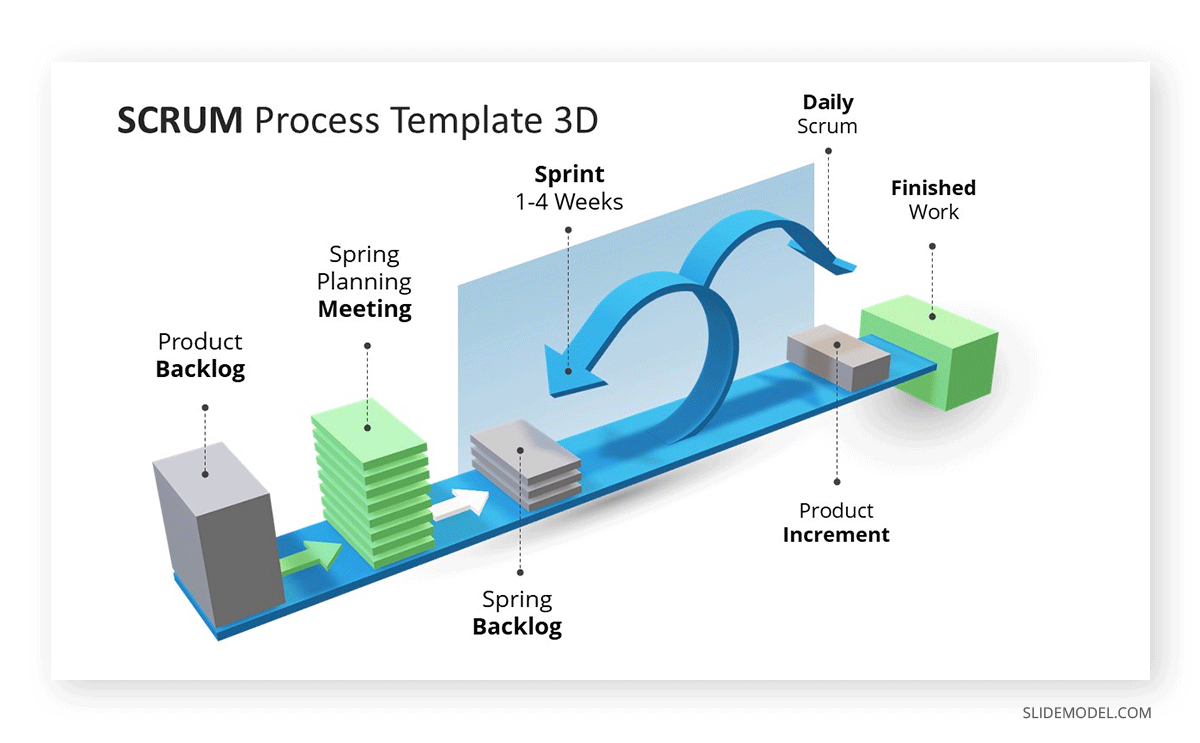
Informative presentations don’t just fall into the business category. Ph.D. Dissertation and Thesis presentations are topics that belong to the informative presentations category as they condense countless research hours into manageable reports for the academic jury.
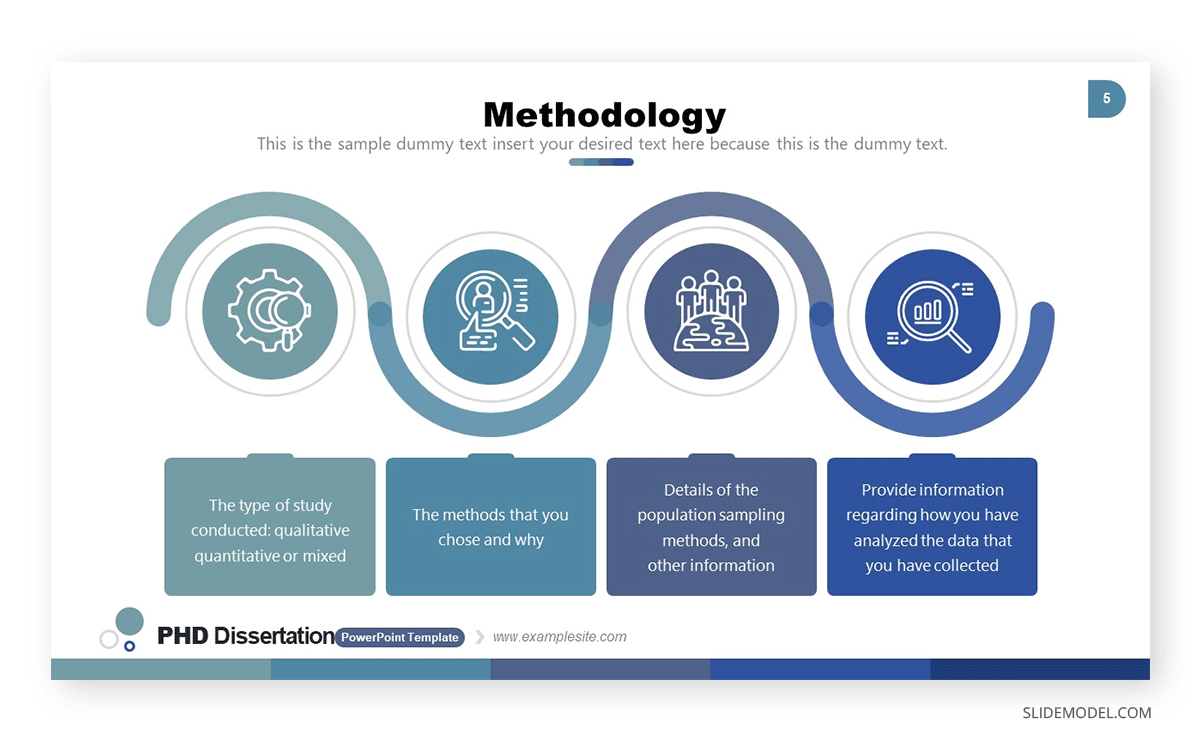
Since these informational presentations can be perceived as lengthy and data-filled, it is important to learn the following professional presentation skills:
- Attention to detail
- Be able to explain complex information in simpler terms
- Creative thinking
- Powerful diction
- Working on pauses and transitions
- Pacing the presentation, so not too much information is divulged per slide
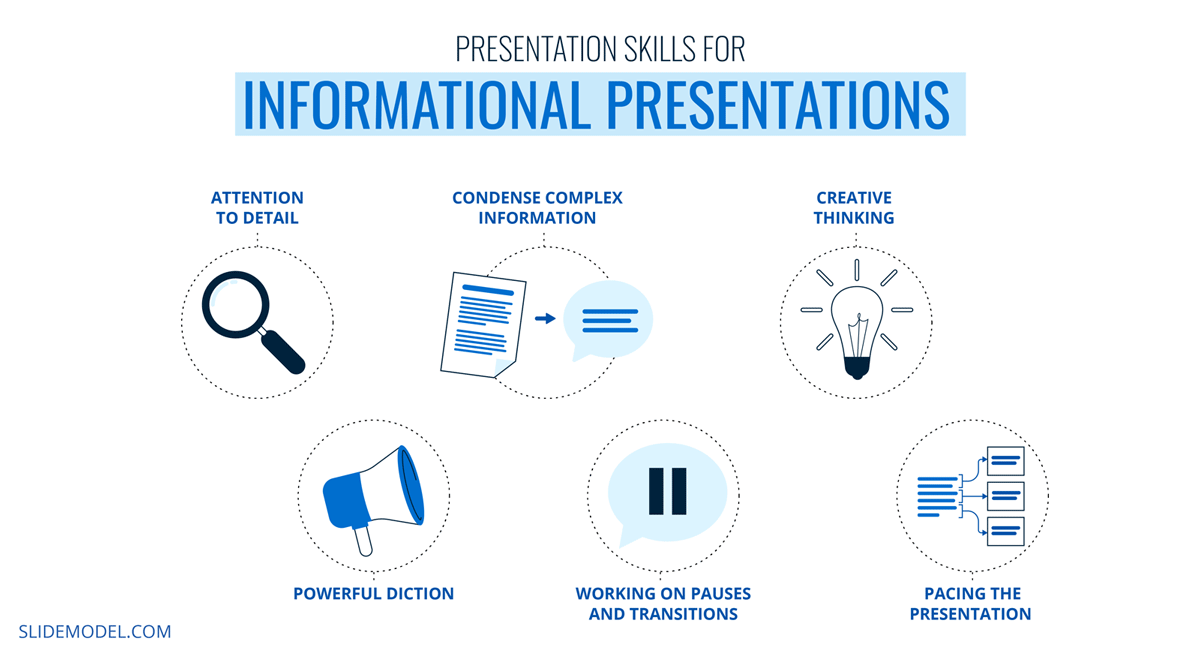
The leading inspirational platform, TEDx, comes to mind when talking about inspirational presentations. This presentation format has the peculiarity of maximizing the engagement with the audience to divulge a message, and due to that, it has specific requirements any presenter must meet.
This presentation format usually involves a speaker on a stage, either sitting or better standing, in which the presenter engages with the audience with a storytelling format about a life experience, a job done that provided a remarkable improvement for society, etc.
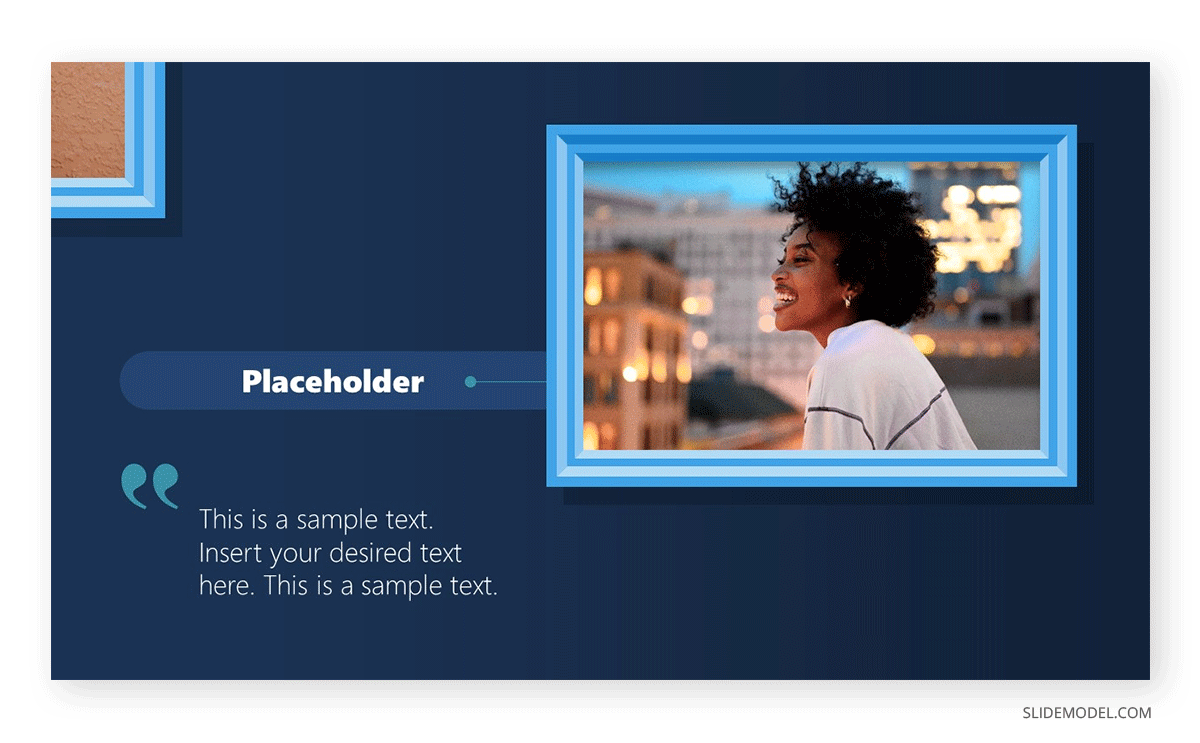
Empathizing with the audience is the key ingredient for these inspirational presentations. Still, creativity is what shapes the outcome of your performance as people are constantly looking for different experiences – not the same recipe rephrased with personal touches. The human factor is what matters here, way above data and research. What has your experience to offer to others? How can it motivate another human being to pursue a similar path or discover their true calling?
To achieve success in terms of communication skills presentation, these inspirational presentations have the following requirements:
- Focus on the audience (engage, consider their interests, and make them a part of your story)
- Putting ego aside
- Creative communication skills
- Storytelling skills
- Body language knowledge to apply the correct gestures to accompany your story
- Voice training
- Using powerful words
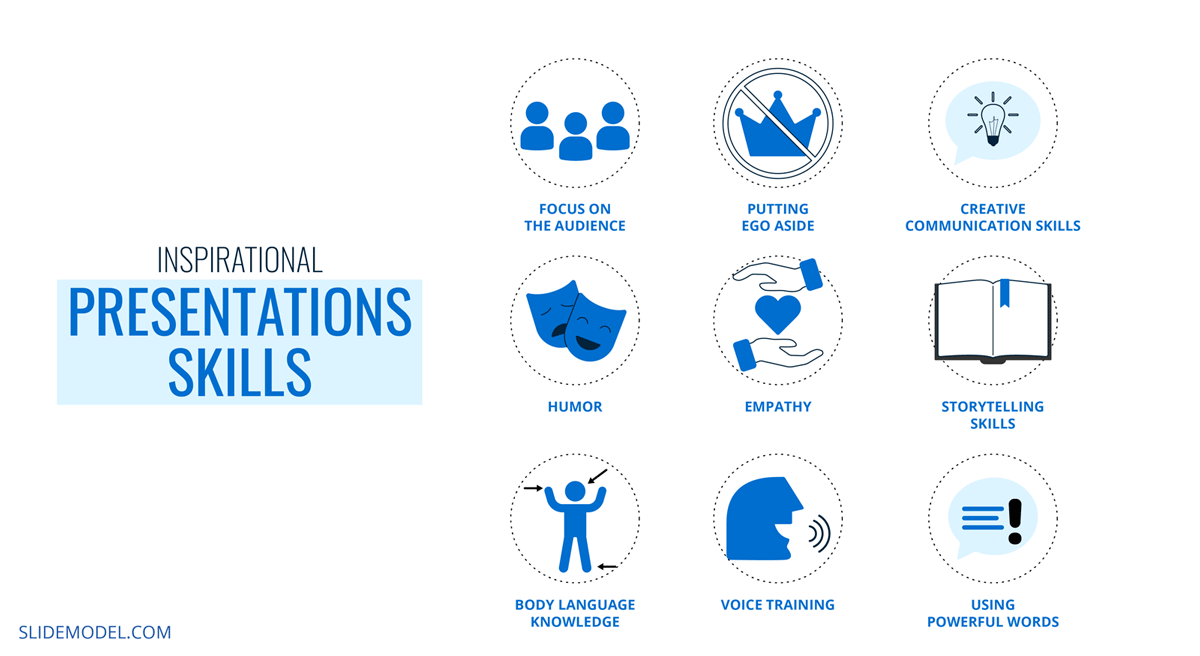
After discussing the different kinds of presentations we can come across at any stage of our lives, a group of presentation skills is standard in any type of presentation. See below what makes a good presentation and which skills you must count on to succeed as a presenter.
Punctuality
Punctuality is a crucial aspect of giving an effective presentation. Nothing says more about respect for your audience and the organization you represent than delivering the presentation on time . Arriving last minute puts pressure on the tech team behind audiovisuals, as they don’t have enough preparation to test microphones, stage lights, and projector settings, which can lead to a less powerful presentation Even when discussing presentations hosted in small rooms for a reduced audience, testing the equipment becomes essential for an effective presentation.
A solution for this is to arrive at least 30 minutes early. Ideally, one hour is a sweet spot since the AV crew has time to check the gear and requirements for your presentation. Another benefit of this, for example, in inspirational presentations, is measuring the previous presenter’s impact on the audience. This gives insights about how to resonate with the public, and their interest, and how to accommodate your presentation for maximum impact.
Body Language
Our bodies can make emotions transparent for others, even when we are unaware of such a fact. Proper training for body language skills reduces performance anxiety, giving the audience a sense of expertise about the presented topic.
Give your presentation and the audience the respect they deserve by watching over these potential mistakes:
- Turning your back to the audience for extended periods : It’s okay to do so when introducing an important piece of information or explaining a graph, but it is considered rude to give your back to the audience constantly.
- Fidgeting : We are all nervous in the presence of strangers, even more, if we are the center of attention for that moment. Instead of playing with your hair or making weird hand gestures, take a deep breath to center yourself before the presentation and remember that everything you could do to prepare is already done. Trust your instincts and give your best.
- Intense eye contact : Have you watched a video where the presenter stared at the camera the entire time? That’s the feeling you transmit to spectators through intense eye contact. It’s a practice often used by politicians to persuade.
- Swearing : This is a no-brainer. Even when you see influencers swearing on camera or in podcasts or live presentations, it is considered an informal and lousy practice for business and academic situations. If you have a habit to break when it comes to this point, find the humor in these situations and replace your swear words with funny alternatives (if the presentation allows for it).
Voice Tone plays a crucial role in delivering effective presentations and knowing how to give a good presentation. Your voice is a powerful tool for exposing your ideas and feelings . Your voice can articulate the message you are telling, briefing the audience if you feel excited about what you are sharing or, in contrast, if you feel the presentation is a burden you ought to complete.
Remember, passion is a primary ingredient in convincing people. Therefore, transmitting such passion with a vibrant voice may help gather potential business partners’ interest.
But what if you feel sick prior to the presentation? If, by chance, your throat is sore minutes before setting foot on the stage, try this: when introducing yourself, mention that you are feeling a bit under the weather. This resonates with the audience to pay more attention to your efforts. In case you don’t feel comfortable about that, ask the organizers for a cup of tea, as it will settle your throat and relax your nerves.
Tech Skills
Believe it or not, people still feel challenged by technology these days. Maybe that’s the reason why presentation giants like Tony Robbins opt not to use PowerPoint presentations . The reality is that there are plenty of elements involved in a presentation that can go wrong from the tech side:
- A PDF not opening
- Saving your presentation in a too-recent PowerPoint version
- A computer not booting up
- Mac laptops and their never-ending compatibility nightmare
- Not knowing how to change between slides
- Not knowing how to use a laser pointer
- Internet not working
- Audio not working
We can come up with a pretty long list of potential tech pitfalls, and yet more than half of them fall in presenters not being knowledgeable about technology.
If computers aren’t your thing, let the organization know about this beforehand. There is always a crew member available to help presenters switch between slides or configure the presentation for streaming. This takes the pressure off your shoulders, allowing you to concentrate on the content to present. Remember, even Bill Gates can get a BSOD during a presentation .
Presentations, while valuable for conveying information and ideas, can be daunting for many individuals. Here are some common difficulties people encounter when giving presentations:
Public Speaking Anxiety
Glossophobia, the fear of public speaking, affects a significant portion of the population. This anxiety can lead to nervousness, trembling, and forgetfulness during a presentation.
Lack of Confidence
Many presenters struggle with self-doubt, fearing that they may not be knowledgeable or skilled enough to engage their audience effectively.
Content Organization
Organizing information in a coherent and engaging manner can be challenging. Presenters often grapple with how to structure their content to make it easily digestible for the audience. Artificial Intelligence can help us significantly reduce the content arrangement time when you work with tools like our AI Presentation Maker (made for presenters by experts in presentation design).
Audience Engagement
Keeping the audience’s attention and interest throughout the presentation can be difficult. Distractions, disengaged attendees, or lack of interaction can pose challenges.
Technical Issues
Technology glitches, such as malfunctioning equipment, incompatible file formats, or poor internet connectivity, can disrupt presentations and increase stress.
Time Management
Striking the right balance between providing enough information and staying within time limits is a common challenge. Going over or under the allotted time can affect the effectiveness of the presentation.
Handling Questions and Challenges
Responding to unexpected questions, criticism, or challenges from the audience can be difficult, especially when presenters are unprepared or lack confidence in their subject matter.
Visual Aids and Technology
Creating and effectively using visual aids like slides or multimedia can be a struggle for some presenters. Technical competence is essential in this aspect.
Language and Articulation
Poor language skills or unclear articulation can hinder effective communication. Presenters may worry about stumbling over words or failing to convey their message clearly.
Maintaining appropriate and confident body language can be challenging. Avoiding nervous habits, maintaining eye contact, and using gestures effectively requires practice.
Overcoming Impersonal Delivery
In virtual presentations, maintaining a personal connection with the audience can be difficult. The absence of face-to-face interaction can make it challenging to engage and read the audience.
Cultural and Diversity Awareness
Presenting to diverse audiences requires sensitivity to cultural differences and varying levels of familiarity with the topic.
In this section, we gathered some tips on how to improve presentation skills that can certainly make an impact if applied to your presentation skills. We believe these skills can be cultivated to transform into habits for your work routine.
Tip #1: Build a narrative
One memorable way to guarantee presentation success is by writing a story of all the points you desire to cover. This statement is based on the logic behind storytelling and its power to connect with people .
Don’t waste time memorizing slides or reading your presentation to the audience. It feels unnatural, and any question that diverts from the topic in discussion certainly puts you in jeopardy or, worse, exposes you as a fraud in the eyes of the audience. And before you ask, it is really evident when a presenter has a memorized speech.
Build and rehearse the presentation as if telling a story to a group of interested people. Lower the language barrier by avoiding complex terms that maybe even you aren’t fully aware of their meaning. Consider the ramifications of that story, what it could lead to, and which are the opportunities to explore. Then, visualize yourself giving the presentation in a natural way.
Applying this technique makes the presentation feel like second nature to you. It broadens the spectrum in which you can show expertise over a topic or even build the basis for new interesting points of view about the project.
Tip #2: Don’t talk for more than 3 minutes per slide
It is a common practice of presenters to bombard the audience with facts and information whilst retaining the same slide on the screen. Why can this happen? It could be because the presenter condensed the talk into very few slides and preferred to talk. The reality is that your spectators won’t retain the information you are giving unless you give visual cues to help that process.
Opt to prepare more slides and pace your speech to match the topics shown on each slide. Don’t spend more than 3 minutes per slide unless you have to introduce a complex piece of data. Use visual cues to direct the spectators about what you talk about, and summarize the principal concepts discussed at the end of each section.
Tip #3: Practice meditation daily
Anxiety is the number one enemy of professional presenters. It slowly builds without you being aware of your doubts and can hinder your performance in multiple ways: making you feel paralyzed, fidgeting, making you forget language skills or concepts, affecting your health, etc.
Meditation is an ancient practice taken from Buddhist teachings that train your mind to be here in the present. We often see the concepts of meditation and mindfulness as synonyms, whereas you should be aware that meditation is a practice that sets the blocks to reach a state of mindfulness. For presenters, being in the here and now is essential to retain focus, but meditation techniques also teach us to control our breathing and be in touch with our body signals when stress builds up.
The customary practice of meditation has an impact on imagination and creativity but also helps to build patience – a skill much needed for connecting with your audience in instructional presentations.
Having the proper set of presentation skills can be quite subjective. It goes beyond presentation tips and deepens into how flexible we can be in our ability to communicate ideas.
Different presentations and different audiences shape the outcome of our efforts. Therefore, having a basic understanding of how to connect, raise awareness, and empathize with people can be key ingredients for your career as a presenter. A word of advice: success doesn’t happen overnight. It takes dedication and patience to build communication skills . Don’t condition your work to believe you will be ready “someday”; it’s best to practice and experience failure as part of the learning process.
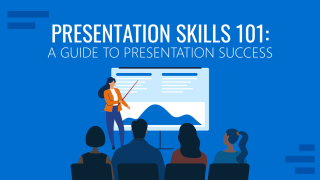
Like this article? Please share
Business Presentations, Presentation Approaches, Presentation Skills Filed under Education
Related Articles

Filed under Design • May 22nd, 2024
Exploring the 12 Different Types of Slides in PowerPoint
Become a better presenter by harnessing the power of the 12 different types of slides in presentation design.
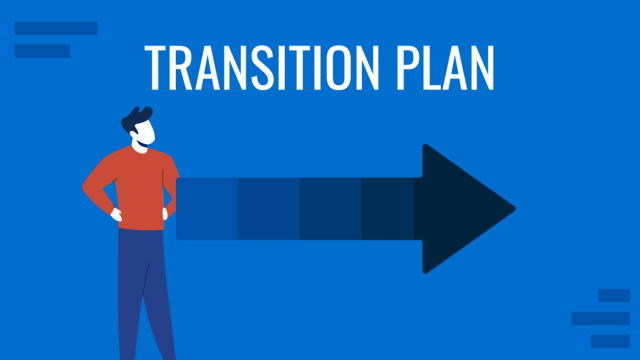
Filed under Business • May 17th, 2024
How to Make a Transition Plan Presentation
Make change procedures in your company a successful experience by implementing transition plan presentations. A detailed guide with PPT templates.
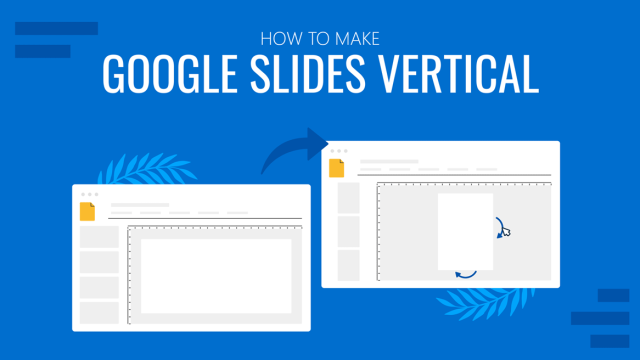
Filed under Google Slides Tutorials • May 17th, 2024
How to Make Google Slides Vertical
Power up your presentation skills by learning how to make google slides go vertical. Step-by-step instructions with examples.
Leave a Reply
How to make a great presentation
Stressed about an upcoming presentation? These talks are full of helpful tips on how to get up in front of an audience and make a lasting impression.
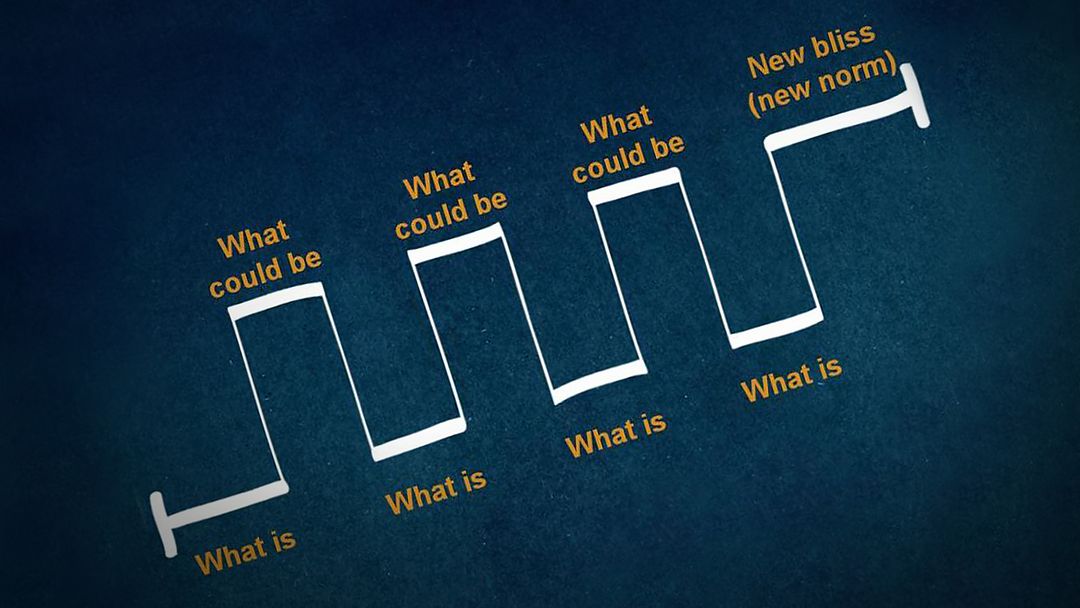
The secret structure of great talks

The beauty of data visualization

TED's secret to great public speaking

How to speak so that people want to listen
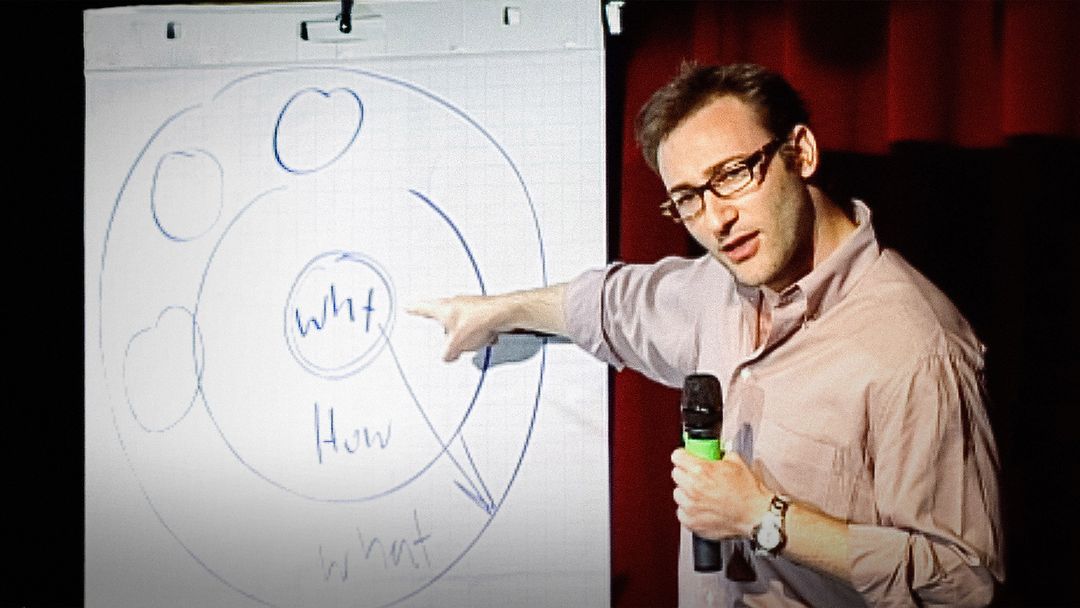
How great leaders inspire action
Ideas and insights from Harvard Business Publishing Corporate Learning

Powerful and Effective Presentation Skills: More in Demand Now Than Ever

When we talk with our L&D colleagues from around the globe, we often hear that presentation skills training is one of the top opportunities they’re looking to provide their learners. And this holds true whether their learners are individual contributors, people managers, or senior leaders. This is not surprising.
Effective communications skills are a powerful career activator, and most of us are called upon to communicate in some type of formal presentation mode at some point along the way.
For instance, you might be asked to brief management on market research results, walk your team through a new process, lay out the new budget, or explain a new product to a client or prospect. Or you may want to build support for a new idea, bring a new employee into the fold, or even just present your achievements to your manager during your performance review.
And now, with so many employees working from home or in hybrid mode, and business travel in decline, there’s a growing need to find new ways to make effective presentations when the audience may be fully virtual or a combination of in person and remote attendees.
Whether you’re making a standup presentation to a large live audience, or a sit-down one-on-one, whether you’re delivering your presentation face to face or virtually, solid presentation skills matter.
Even the most seasoned and accomplished presenters may need to fine-tune or update their skills. Expectations have changed over the last decade or so. Yesterday’s PowerPoint which primarily relied on bulleted points, broken up by the occasional clip-art image, won’t cut it with today’s audience.
The digital revolution has revolutionized the way people want to receive information. People expect presentations that are more visually interesting. They expect to see data, metrics that support assertions. And now, with so many previously in-person meetings occurring virtually, there’s an entirely new level of technical preparedness required.
The leadership development tools and the individual learning opportunities you’re providing should include presentation skills training that covers both the evergreen fundamentals and the up-to-date capabilities that can make or break a presentation.
So, just what should be included in solid presentation skills training? Here’s what I think.
The fundamentals will always apply When it comes to making a powerful and effective presentation, the fundamentals will always apply. You need to understand your objective. Is it strictly to convey information, so that your audience’s knowledge is increased? Is it to persuade your audience to take some action? Is it to convince people to support your idea? Once you understand what your objective is, you need to define your central message. There may be a lot of things you want to share with your audience during your presentation, but find – and stick with – the core, the most important point you want them to walk away with. And make sure that your message is clear and compelling.
You also need to tailor your presentation to your audience. Who are they and what might they be expecting? Say you’re giving a product pitch to a client. A technical team may be interested in a lot of nitty-gritty product detail. The business side will no doubt be more interested in what returns they can expect on their investment.
Another consideration is the setting: is this a formal presentation to a large audience with questions reserved for the end, or a presentation in a smaller setting where there’s the possibility for conversation throughout? Is your presentation virtual or in-person? To be delivered individually or as a group? What time of the day will you be speaking? Will there be others speaking before you and might that impact how your message will be received?
Once these fundamentals are established, you’re in building mode. What are the specific points you want to share that will help you best meet your objective and get across your core message? Now figure out how to convey those points in the clearest, most straightforward, and succinct way. This doesn’t mean that your presentation has to be a series of clipped bullet points. No one wants to sit through a presentation in which the presenter reads through what’s on the slide. You can get your points across using stories, fact, diagrams, videos, props, and other types of media.
Visual design matters While you don’t want to clutter up your presentation with too many visual elements that don’t serve your objective and can be distracting, using a variety of visual formats to convey your core message will make your presentation more memorable than slides filled with text. A couple of tips: avoid images that are cliched and overdone. Be careful not to mix up too many different types of images. If you’re using photos, stick with photos. If you’re using drawn images, keep the style consistent. When data are presented, stay consistent with colors and fonts from one type of chart to the next. Keep things clear and simple, using data to support key points without overwhelming your audience with too much information. And don’t assume that your audience is composed of statisticians (unless, of course, it is).
When presenting qualitative data, brief videos provide a way to engage your audience and create emotional connection and impact. Word clouds are another way to get qualitative data across.
Practice makes perfect You’ve pulled together a perfect presentation. But it likely won’t be perfect unless it’s well delivered. So don’t forget to practice your presentation ahead of time. Pro tip: record yourself as you practice out loud. This will force you to think through what you’re going to say for each element of your presentation. And watching your recording will help you identify your mistakes—such as fidgeting, using too many fillers (such as “umm,” or “like”), or speaking too fast.
A key element of your preparation should involve anticipating any technical difficulties. If you’ve embedded videos, make sure they work. If you’re presenting virtually, make sure that the lighting is good, and that your speaker and camera are working. Whether presenting in person or virtually, get there early enough to work out any technical glitches before your presentation is scheduled to begin. Few things are a bigger audience turn-off than sitting there watching the presenter struggle with the delivery mechanisms!
Finally, be kind to yourself. Despite thorough preparation and practice, sometimes, things go wrong, and you need to recover in the moment, adapt, and carry on. It’s unlikely that you’ll have caused any lasting damage and the important thing is to learn from your experience, so your next presentation is stronger.
How are you providing presentation skills training for your learners?
Manika Gandhi is Senior Learning Design Manager at Harvard Business Publishing Corporate Learning. Email her at [email protected] .
Let’s talk
Change isn’t easy, but we can help. Together we’ll create informed and inspired leaders ready to shape the future of your business.
© 2024 Harvard Business School Publishing. All rights reserved. Harvard Business Publishing is an affiliate of Harvard Business School.
- Privacy Policy
- Copyright Information
- Terms of Use
- About Harvard Business Publishing
- Higher Education
- Harvard Business Review
- Harvard Business School
We use cookies to understand how you use our site and to improve your experience. By continuing to use our site, you accept our use of cookies and revised Privacy Policy .
Cookie and Privacy Settings
We may request cookies to be set on your device. We use cookies to let us know when you visit our websites, how you interact with us, to enrich your user experience, and to customize your relationship with our website.
Click on the different category headings to find out more. You can also change some of your preferences. Note that blocking some types of cookies may impact your experience on our websites and the services we are able to offer.
These cookies are strictly necessary to provide you with services available through our website and to use some of its features.
Because these cookies are strictly necessary to deliver the website, refusing them will have impact how our site functions. You always can block or delete cookies by changing your browser settings and force blocking all cookies on this website. But this will always prompt you to accept/refuse cookies when revisiting our site.
We fully respect if you want to refuse cookies but to avoid asking you again and again kindly allow us to store a cookie for that. You are free to opt out any time or opt in for other cookies to get a better experience. If you refuse cookies we will remove all set cookies in our domain.
We provide you with a list of stored cookies on your computer in our domain so you can check what we stored. Due to security reasons we are not able to show or modify cookies from other domains. You can check these in your browser security settings.
We also use different external services like Google Webfonts, Google Maps, and external Video providers. Since these providers may collect personal data like your IP address we allow you to block them here. Please be aware that this might heavily reduce the functionality and appearance of our site. Changes will take effect once you reload the page.
Google Webfont Settings:
Google Map Settings:
Google reCaptcha Settings:
Vimeo and Youtube video embeds:
You can read about our cookies and privacy settings in detail on our Privacy Policy Page.
A Conference Speaker Toolbox: Essential Skills for Presentations
Hrideep barot.
- Presentation

Embarking on the exploration of A Conference Speaker Toolbox: Essential Skills for Presentations , we delve into the intricate world of conference speaking skills. From unravelling the essence of a conference speaker to navigating the journey of becoming one and dissecting the vital skills necessary for impactful presentations, this toolbox aims to empower both seasoned speakers and those aspiring to take the stage. Let’s embark on a journey through expertise, networking strategies, and dynamic skills crucial for creating engaging and informative conference presentations.
Who Is A Conference Speaker?
10 essential conference speaker skills for presentations , how to become a conference speaker, benefits of speaking at a conference, conclusion..
A conference speaker serves as the knowledgeable and engaging voice at conferences or similar events. These individuals are often experts or seasoned professionals within a specific field, invited to share their insights, experiences, and perspectives with the audience. The topics covered by conference speakers can be diverse, spanning academic, technical, business, leadership, motivational, and personal development subjects.
The role of a conference speaker is pivotal in enriching the overall conference experience. They contribute by delivering valuable information, dynamic presentations, and opportunities for attendees to connect and learn. Selection criteria for speakers may include their expertise, reputation, and alignment with the conference’s theme or focus. Keynote speakers, in particular, are prominent figures in their fields, invited to deliver impactful addresses that set the tone for the entire event.
Beyond traditional in-person conferences, speakers may also participate in virtual or online events, such as webinars, adapting to the evolving landscape of digital communication.

Effective conference speakers possess a combination of skills that contribute to engaging and impactful presentations. Here are some essential conference speaker skills:
1. Communication Skills:
Clarity: Clearly articulate ideas and concepts, avoiding jargon that might be confusing to the audience.
Example: When explaining the benefits of sustainable energy practices at a green technology conference, avoid technical jargon and use clear, simple language to ensure everyone in the audience understands the concepts.
Confidence: Project confidence in your voice and body language to establish credibility.
Example: Stand tall, make eye contact, and speak with a steady voice while presenting research findings on artificial intelligence at a technology summit, projecting confidence to establish authority.
Active Listening: Pay attention to audience reactions and adjust your presentation based on their engagement.
Example: During a marketing strategies presentation, pay attention to audience reactions. If you notice confusion, pause and ask for questions to clarify any misunderstood points.
2. Subject Matter Expertise:
In-depth Knowledge: Demonstrate a deep understanding of your topic, providing valuable insights and practical information.
Example: Present on advancements in cancer research with a focus on personalized medicine, showcasing a deep understanding of the topic and its potential impact on healthcare at a medical conference.
Relevance: Ensure that your content is relevant to the conference theme and the interests of the audience.
Example: Deliver a keynote speech on cybersecurity trends at a technology conference, ensuring that the content aligns with the current challenges and interests of the audience.
3. Engagement Techniques:
Interactive Elements: Incorporate interactive elements like Q&A sessions, polls, or discussions to keep the audience engaged.
Example: Conduct a live poll during a social media marketing presentation, encouraging audience participation and providing real-time insights into current industry practices.
Visuals: Use compelling visuals, such as slides, videos, or infographics, to enhance your message and maintain audience interest.
Example: Use visually appealing infographics and case study videos to illustrate the success stories of sustainable development projects during an environmental conservation conference.
4. Adaptability:
Flexibility: Be adaptable to changes, such as adjusting your presentation based on the audience’s level of understanding or unexpected technical issues.
Example: Adjust the level of technical detail in a blockchain technology presentation based on the audience’s familiarity with the subject matter at a financial technology seminar.
Customization: Tailor your presentation to the specific needs and interests of the audience.
Example: Tailor a leadership development presentation to address the specific challenges faced by the audience in the healthcare industry, showcasing adaptability to diverse professional contexts.
5. Storytelling Skills:
Narrative Structure: Craft a compelling narrative structure that helps convey your message effectively.
Example: Craft a narrative structure for a presentation on the evolution of artificial intelligence, guiding the audience through historical milestones and future possibilities.
Emotional Connection: Use storytelling to create an emotional connection with the audience, making your message memorable.
Example: Share personal anecdotes about overcoming challenges in the field of entrepreneurship during a business leadership conference, creating an emotional connection with the audience.
6. Time Management:
Pacing: Manage your time effectively to cover all key points without rushing or exceeding the allotted time.
Example: Deliver a concise overview of data analytics applications within the allotted time at a big data conference, allowing for a balanced exploration of key points.
Prioritization: Focus on the most important and impactful aspects of your presentation to avoid information overload.
Example: Focus on the most impactful aspects of a project management methodology presentation, avoiding information overload and ensuring a clear understanding of core principles.
7. Audience Awareness:
Understanding the Audience: Know your audience’s background, interests, and expectations to tailor your presentation accordingly.
Example: Tailor a presentation on innovative teaching methods to the background and expectations of an education-focused audience at an academic conference.
Adapting Tone: Adjust your tone and language to resonate with the audience, whether they are experts or newcomers in the field.
Example: Adjust the tone and language of a cybersecurity presentation to resonate with both experts and non-experts attending a mixed-proficiency audience event.
8. Visual and Verbal Delivery:
Body Language: Utilize positive body language , such as gestures and facial expressions, to convey enthusiasm and engagement.
Example: Use positive body language, such as open gestures and a friendly smile, to convey enthusiasm while presenting a new product launch strategy at a marketing conference.
Vocal Variety: Modulate your voice to maintain interest, emphasize key points, and avoid a monotonous delivery.
Example: Modulate your voice to emphasize key points and maintain interest during a climate change awareness presentation, ensuring a dynamic and engaging delivery.
9. Networking Skills:
Approachability: Be approachable and open to networking opportunities before and after your presentation.
Example: Be approachable at a business networking event, initiating conversations with attendees and expressing genuine interest in their professional experiences.
Availability: Allocate time for discussions and questions, allowing attendees to connect with you personally.
Example: Allocate time after a workshop for one-on-one discussions, allowing participants to connect with you personally and seek additional insights.
10. Technological Proficiency:
Tech Savvy: Familiarize yourself with any audiovisual equipment or presentation tools you’ll be using.
Example: Familiarize yourself with the latest data visualization tools before presenting research findings at a data science conference, showcasing your tech-savvy skills.
Troubleshooting: Be prepared to troubleshoot technical issues swiftly to minimize disruptions.
Example: Quickly address and resolve any issues with presentation slides or audiovisual equipment during a technology summit, demonstrating efficient troubleshooting skills.
These skills, when honed and combined, contribute to a successful conference presentation that informs, engages, and leaves a lasting impact on the audience.
Becoming a conference speaker involves a combination of expertise, networking, and effective communication skills. Here are the steps you can take to become a conference speaker:
Develop Expertise:
Focus on a specific area of expertise that aligns with the themes of conferences you’re interested in. Gain in-depth knowledge and practical experience in your chosen field.
Build a Strong Profile:
Establish a strong online presence through a professional website, blog, and active participation in relevant social media platforms. Share your insights, experiences, and achievements to showcase your expertise.
Attend Conferences:
Attend industry conferences regularly to understand the dynamics of conference presentations. Network with organizers, speakers, and attendees to build connections within your industry.
Submit Proposals:
Many conferences invite speakers to submit proposals for presentations. Keep an eye on calls for speakers and submit compelling proposals that highlight the value and relevance of your topic.
Join Speaker Directories:
Register with speaker directories and platforms where event organizers look for potential speakers. Platforms like SpeakerHub, SpeakerMatch, or even LinkedIn can help you get noticed by conference organizers.
Create a Speaker Bio and Introduction Video:
Craft a professional speaker bio that highlights your expertise and experience. Additionally, consider creating a short introduction video that showcases your speaking style and the value you bring to an audience.
Offer Workshops or Webinars:
Start by offering workshops, webinars, or seminars within your local community or online. This allows you to gain speaking experience and build a portfolio that you can showcase to conference organizers.
Seek Recommendations and Testimonials:
Request recommendations or testimonials from colleagues, clients, or participants in your workshops. Positive feedback adds credibility to your speaking abilities.
Engage with Event Organizers:
Network with conference organizers and express your interest in speaking at their events. Building relationships with organizers increases your chances of being considered for future conferences.
Be Persistent and Patient:
Becoming a conference speaker may take time, so be persistent and patient . Continue refining your speaking skills, expanding your network, and actively seeking speaking opportunities.
Diversify Your Topics:
Offer a range of topics related to your expertise. Being flexible and adaptable to different conference themes increases your chances of being selected.
Remember that becoming a conference speaker is often a gradual process. By consistently showcasing your expertise, networking within your industry, and actively seeking opportunities, you can increase your chances of being invited to speak at conferences.
Speaking at a conference can offer a range of benefits, both personally and professionally. Here are some key advantages:
Increased Visibility and Credibility:
By presenting at a conference, you position yourself as an expert in your field, enhancing your professional credibility.
Your visibility increases as you showcase your knowledge and insights to a wider audience, including peers, industry professionals, and potential collaborators.
Networking Opportunities:
Conferences provide a platform to connect with other speakers, attendees, and industry leaders, fostering valuable relationships.
Networking can lead to collaboration, partnerships, job opportunities , and the exchange of ideas and experiences.
Professional Development:
Preparing and delivering a conference presentation helps you refine your communication and public speaking skills.
The process of staying updated on your topic and addressing questions from the audience contributes to continuous learning and professional development.
Showcasing Innovations:
If your presentation involves showcasing innovative ideas, projects, or research, a conference provides a platform to gain recognition and feedback.
Presenting innovations can attract the attention of potential investors, employers, or collaborators.
Career Advancement:
Speaking at conferences can enhance your resume and contribute to your professional advancement.
The exposure gained from presenting at reputable conferences may lead to new career opportunities, promotions, or invitations to speak at other events.
Knowledge Exchange:
Conferences are forums for the exchange of knowledge and ideas . Presenting allows you to contribute to this knowledge-sharing process.
Engaging in discussions with attendees during and after your presentation can lead to valuable insights and perspectives.
Market Yourself or Your Organization:
If you represent an organization, presenting at conferences is an effective way to market its products, services, or achievements .
Individuals can also use presentations to showcase their skills and expertise , attracting attention from potential clients or employers.
Personal Branding:
Speaking at conferences helps build your personal brand. It establishes you as a thought leader and influencer in your field.
A strong personal brand can lead to increased opportunities for media coverage, interviews, and guest appearances.
Contributing to the Community:
Presenting at conferences is a way to give back to your professional community by sharing your knowledge and experiences.
Your contributions can inspire and educate others , contributing to the overall growth and development of your industry.
In summary, speaking at a conference offers a multifaceted set of benefits, ranging from professional recognition and networking opportunities to personal growth and the chance to contribute meaningfully to your field.
In the ever-evolving realm of professional growth and knowledge sharing, the role of a conference speaker stands as a powerful force. This toolbox has peeled back the layers, from understanding the core of a conference speaker to honing the skills that breathe life into presentations. Recognizing the value of enhanced visibility, networking opportunities, and personal development, it becomes clear that speaking at conferences is not merely a personal endeavor but a contribution to the collective progress of the professional community. Armed with a diverse skill set, conference speakers become catalysts for innovation, fostering continuous learning and evolution in their respective fields. As we conclude this exploration, we extend an invitation to embrace the art of conference speaking, recognizing it as more than a mere skill set—it’s a transformative influence in the dynamic landscape of professional discourse.
Dive into a wealth of information and discoveries by checking out the source provided. Click this link and let the exploration begin!
Enroll in our transformative 1:1 Coaching Program
Schedule a call with our expert communication coach to know if this program would be the right fit for you

Lost Voice? Here’s How to Recover Sore Throat and Speak Again

7 Keys to Emcee Like a Pro: Unlock Your Hosting Potential

8 Ways to Rise Above the Noise to Communicate Better

- [email protected]
- +91 98203 57888
Get our latest tips and tricks in your inbox always
Copyright © 2023 Frantically Speaking All rights reserved
Kindly drop your contact details so that we can arrange call back
Select Country Afghanistan Albania Algeria AmericanSamoa Andorra Angola Anguilla Antigua and Barbuda Argentina Armenia Aruba Australia Austria Azerbaijan Bahamas Bahrain Bangladesh Barbados Belarus Belgium Belize Benin Bermuda Bhutan Bosnia and Herzegovina Botswana Brazil British Indian Ocean Territory Bulgaria Burkina Faso Burundi Cambodia Cameroon Canada Cape Verde Cayman Islands Central African Republic Chad Chile China Christmas Island Colombia Comoros Congo Cook Islands Costa Rica Croatia Cuba Cyprus Czech Republic Denmark Djibouti Dominica Dominican Republic Ecuador Egypt El Salvador Equatorial Guinea Eritrea Estonia Ethiopia Faroe Islands Fiji Finland France French Guiana French Polynesia Gabon Gambia Georgia Germany Ghana Gibraltar Greece Greenland Grenada Guadeloupe Guam Guatemala Guinea Guinea-Bissau Guyana Haiti Honduras Hungary Iceland India Indonesia Iraq Ireland Israel Italy Jamaica Japan Jordan Kazakhstan Kenya Kiribati Kuwait Kyrgyzstan Latvia Lebanon Lesotho Liberia Liechtenstein Lithuania Luxembourg Madagascar Malawi Malaysia Maldives Mali Malta Marshall Islands Martinique Mauritania Mauritius Mayotte Mexico Monaco Mongolia Montenegro Montserrat Morocco Myanmar Namibia Nauru Nepal Netherlands Netherlands Antilles New Caledonia New Zealand Nicaragua Niger Nigeria Niue Norfolk Island Northern Mariana Islands Norway Oman Pakistan Palau Panama Papua New Guinea Paraguay Peru Philippines Poland Portugal Puerto Rico Qatar Romania Rwanda Samoa San Marino Saudi Arabia Senegal Serbia Seychelles Sierra Leone Singapore Slovakia Slovenia Solomon Islands South Africa South Georgia and the South Sandwich Islands Spain Sri Lanka Sudan Suriname Swaziland Sweden Switzerland Tajikistan Thailand Togo Tokelau Tonga Trinidad and Tobago Tunisia Turkey Turkmenistan Turks and Caicos Islands Tuvalu Uganda Ukraine United Arab Emirates United Kingdom United States Uruguay Uzbekistan Vanuatu Wallis and Futuna Yemen Zambia Zimbabwe land Islands Antarctica Bolivia, Plurinational State of Brunei Darussalam Cocos (Keeling) Islands Congo, The Democratic Republic of the Cote d'Ivoire Falkland Islands (Malvinas) Guernsey Holy See (Vatican City State) Hong Kong Iran, Islamic Republic of Isle of Man Jersey Korea, Democratic People's Republic of Korea, Republic of Lao People's Democratic Republic Libyan Arab Jamahiriya Macao Macedonia, The Former Yugoslav Republic of Micronesia, Federated States of Moldova, Republic of Mozambique Palestinian Territory, Occupied Pitcairn Réunion Russia Saint Barthélemy Saint Helena, Ascension and Tristan Da Cunha Saint Kitts and Nevis Saint Lucia Saint Martin Saint Pierre and Miquelon Saint Vincent and the Grenadines Sao Tome and Principe Somalia Svalbard and Jan Mayen Syrian Arab Republic Taiwan, Province of China Tanzania, United Republic of Timor-Leste Venezuela, Bolivarian Republic of Viet Nam Virgin Islands, British Virgin Islands, U.S.


- SUGGESTED TOPICS
- The Magazine
- Newsletters
- Managing Yourself
- Managing Teams
- Work-life Balance
- The Big Idea
- Data & Visuals
- Reading Lists
- Case Selections
- HBR Learning
- Topic Feeds
- Account Settings
- Email Preferences
How to Make a “Good” Presentation “Great”
- Guy Kawasaki

Remember: Less is more.
A strong presentation is so much more than information pasted onto a series of slides with fancy backgrounds. Whether you’re pitching an idea, reporting market research, or sharing something else, a great presentation can give you a competitive advantage, and be a powerful tool when aiming to persuade, educate, or inspire others. Here are some unique elements that make a presentation stand out.
- Fonts: Sans Serif fonts such as Helvetica or Arial are preferred for their clean lines, which make them easy to digest at various sizes and distances. Limit the number of font styles to two: one for headings and another for body text, to avoid visual confusion or distractions.
- Colors: Colors can evoke emotions and highlight critical points, but their overuse can lead to a cluttered and confusing presentation. A limited palette of two to three main colors, complemented by a simple background, can help you draw attention to key elements without overwhelming the audience.
- Pictures: Pictures can communicate complex ideas quickly and memorably but choosing the right images is key. Images or pictures should be big (perhaps 20-25% of the page), bold, and have a clear purpose that complements the slide’s text.
- Layout: Don’t overcrowd your slides with too much information. When in doubt, adhere to the principle of simplicity, and aim for a clean and uncluttered layout with plenty of white space around text and images. Think phrases and bullets, not sentences.
As an intern or early career professional, chances are that you’ll be tasked with making or giving a presentation in the near future. Whether you’re pitching an idea, reporting market research, or sharing something else, a great presentation can give you a competitive advantage, and be a powerful tool when aiming to persuade, educate, or inspire others.
- Guy Kawasaki is the chief evangelist at Canva and was the former chief evangelist at Apple. Guy is the author of 16 books including Think Remarkable : 9 Paths to Transform Your Life and Make a Difference.
Partner Center

THE PRESENTATION SKILLS EVENT FOR TECH TEAMS
Upcoming events, sofia,bulgaria, hybrid event, 4th edition.

See what's coming
For the last three years we delivered a conference very few believed we will. This year, we are making the next step. But this time only for you – the tech teams. Get ready to join and experience event like no other.
Teaching you exactly what you need to know
The topics are carefully selected from our experience as tech people and company that delivers courses to many of the top tech brands in the world. We have one track only and yes, the order of the sessions will be intentional.
Mastering Cross-Cultural Presentations
Bug Fixes for Presentations: The Checklist
What Can We Learn From Google When Creating Data Visualizations
AI Innovations Within Presentations: Mid-2024 Snapshot
PowerPoint Copilot: Current and the Future
Learn How to Use Effective Body Language Like Actors Do
Speaking at Conferences and the Secret to Becoming a Top-Rated Speaker
Setting up for and Delivering Successful Technical Demos
IN-PERSON ATTENDEES
ONLINE ATTENDEES
Most trending topics

PAULA JANUSZKIEWICZ
Security Expert, Top-Rated Speaker at RSA 2022, Microsoft Ignite and Black Hat Asia

Founder of StageHeroes, trainer and presentation coach
The people you want to learn from
See all speakers.

Database expert, Microsoft Certified Master (MCM), Top-Rated Speaker at PASS Summit

Founder & Creative Director at Slides presentation agency

IDA HOLTEN WORSØE
Actor & Trainer at Ergo;ego
Choose your ticket type
In-person tickets 18/850.
Prices with VAT incl. Company invoices possible. Full refund 30 days after purchase. The whole event and the recordings will be in English only.
Access to all sessions & panels
Network, chat and meet all speakers and sponsors
Create connections and meet 850+ attendees from different business areas
Win great prizes from our sponsors
🥗 Coffee breaks and lunch break during the day
🥳 Cocktail party with Pernod Ricard after the event's end
😮 Lifetime access to the lessons learned document full of insights from each session
🎉 Lifetime access to all session recordings
🔥 Lifetime access to all 30+ sessions from Present to Succeed 2023
(Granted after the event, worth €120)
🎉 Lifetime access to all session recordings
🔥 Lifetime access to the full archive of recordings from Present to Succeed
(50+ hours of presentation content worth €300 granted after the event)
🤩 VIP consulting with 356labs after the event (30 mins worth €250)
GROUP DISCOUNTS
Save up to 60%.
Only Premium and VIP tickets available
Use them to join live, online or as an e-Learning opportunity
People claim their access themselves through a custom promo code we provide to you
😮 Tickets in the package - from 3 to 25+
🔥 Recordings from previous events included and granted immediately after the event
⭐ VIP group tickets include private consulting
SPECIAL PRICES FOR GROUPS AND TEAMS
🕒 30-day access to all session recordings

Really impressed with the Present to Succeed Conference 2022! Great content, amazing speakers, and a really rich and well-delivered attendee experience. Kudos to the organizers!

RADINA RASHEVA
Social Engagement Manager

Wow! You rocked not only the conference but with this interactive survey approach, you nailed the customer satisfaction research process as well! Impressive and remarkable!

DESSISLAVA DILOVSKA
Continuous Improvement Lead

Today was a great day! Thank you 356labs for this amazing work and organizing Present to Succeed Conference.

KRASIMIR KOVACHKI
Infrastructure Architect

Present to Succeed was a world event! Bravo, bravo, bravo 356labs! Excellence is never an accident!

STEFANI MANCHEVA
Web Content Writer
Many people already experienced it
Online tickets.
Prices with VAT incl. Company invoices possible. Full refund 30 days after purchase. The whole event and the recordings will be in English only.
Access to all sessions & panels
Network with hundreds of online attendees
Connect with in-person attendees between sessions
Participate in all sessions’ QA
Access from any device
Browse the expo booths and chat with the sponsors
👋 Meet the speakers during the breaks (exclusive online-only opportunity)
🔥 Lifetime access to 30+ sessions from Present to Succeed 2023
Network with hundreds of online attendees
👋 Meet the speakers during the breaks (exclusive online-only opportunity)
(50+ hours of presentation content worth €300 granted after the event)
SAVE UP TO 70%
Use them to join live, online or as an
e-Learning opportunity
😮 Tickets in the package - from 5 to 250+
SPECIAL PRICES
For groups and teams.
Access from any device

At an awesome venue or from home
At 356labs we don’t do anything if it’s not world class. That’s why, we will again host the event in the most premium location in the country. And the streaming – as flawless as the last 3 years with the help of Hopin.

Who's this event for?
Previous event.

How it works
Transform your enterprise with the scalable mindsets, skills, & behavior change that drive performance.
Explore how BetterUp connects to your core business systems.
We pair AI with the latest in human-centered coaching to drive powerful, lasting learning and behavior change.
Build leaders that accelerate team performance and engagement.
Unlock performance potential at scale with AI-powered curated growth journeys.
Build resilience, well-being and agility to drive performance across your entire enterprise.
Transform your business, starting with your sales leaders.
Unlock business impact from the top with executive coaching.
Foster a culture of inclusion and belonging.
Accelerate the performance and potential of your agencies and employees.
See how innovative organizations use BetterUp to build a thriving workforce.
Discover how BetterUp measurably impacts key business outcomes for organizations like yours.
A demo is the first step to transforming your business. Meet with us to develop a plan for attaining your goals.

- What is coaching?
Learn how 1:1 coaching works, who its for, and if it's right for you.
Accelerate your personal and professional growth with the expert guidance of a BetterUp Coach.
Types of Coaching
Navigate career transitions, accelerate your professional growth, and achieve your career goals with expert coaching.
Enhance your communication skills for better personal and professional relationships, with tailored coaching that focuses on your needs.
Find balance, resilience, and well-being in all areas of your life with holistic coaching designed to empower you.
Discover your perfect match : Take our 5-minute assessment and let us pair you with one of our top Coaches tailored just for you.

Research, expert insights, and resources to develop courageous leaders within your organization.
Best practices, research, and tools to fuel individual and business growth.
View on-demand BetterUp events and learn about upcoming live discussions.
The latest insights and ideas for building a high-performing workplace.
- BetterUp Briefing
The online magazine that helps you understand tomorrow's workforce trends, today.
Innovative research featured in peer-reviewed journals, press, and more.
Founded in 2022 to deepen the understanding of the intersection of well-being, purpose, and performance
We're on a mission to help everyone live with clarity, purpose, and passion.
Join us and create impactful change.
Read the buzz about BetterUp.
Meet the leadership that's passionate about empowering your workforce.

For Business
For Individuals
6 presentation skills and how to improve them

Jump to section
What are presentation skills?
The importance of presentation skills, 6 presentation skills examples, how to improve presentation skills.
Tips for dealing with presentation anxiety
Learn how to captivate an audience with ease
Capturing an audience’s attention takes practice.
Over time, great presenters learn how to organize their speeches and captivate an audience from start to finish. They spark curiosity, know how to read a room , and understand what their audience needs to walk away feeling like they learned something valuable.
Regardless of your profession, you most likely use presentation skills on a monthly or even weekly basis. Maybe you lead brainstorming sessions or host client calls.
Developing effective presentation skills makes it easier to contribute ideas with confidence and show others you’re someone to trust. Although speaking in front of a crowd sometimes brings nerves and anxiety , it also sparks new opportunities.
Presentation skills are the qualities and abilities you need to communicate ideas effectively and deliver a compelling speech. They influence how you structure a presentation and how an audience receives it. Understanding body language , creating impactful visual aids, and projecting your voice all fall under this umbrella.
A great presentation depends on more than what you say. It’s about how you say it. Storytelling , stage presence, and voice projection all shape how well you express your ideas and connect with the audience. These skills do take practice, but they’re worth developing — especially if public speaking makes you nervous.
Engaging a crowd isn’t easy. You may feel anxious to step in front of an audience and have all eyes and ears on you.
But feeling that anxiety doesn’t mean your ideas aren’t worth sharing. Whether you’re giving an inspiring speech or delivering a monthly recap at work, your audience is there to listen to you. Harness that nervous energy and turn it into progress.
Strong presentation skills make it easier to convey your thoughts to audiences of all sizes. They can help you tell a compelling story, convince people of a pitch , or teach a group something entirely new to them. And when it comes to the workplace, the strength of your presentation skills could play a part in getting a promotion or contributing to a new initiative.
To fully understand the impact these skills have on creating a successful presentation, it’s helpful to look at each one individually. Here are six valuable skills you can develop:
1. Active listening
Active listening is an excellent communication skill for any professional to hone. When you have strong active listening skills, you can listen to others effectively and observe their nonverbal cues . This helps you assess whether or not your audience members are engaged in and understand what you’re sharing.
Great public speakers use active listening to assess the audience’s reactions and adjust their speech if they find it lacks impact. Signs like slouching, negative facial expressions, and roaming eye contact are all signs to watch out for when giving a presentation.
2. Body language
If you’re researching presentation skills, chances are you’ve already watched a few notable speeches like TED Talks or industry seminars. And one thing you probably noticed is that speakers can capture attention with their body language.
A mixture of eye contact, hand gestures , and purposeful pacing makes a presentation more interesting and engaging. If you stand in one spot and don’t move your body, the audience might zone out.

3. Stage presence
A great stage presence looks different for everyone. A comedian might aim for more movement and excitement, and a conference speaker might focus their energy on the content of their speech. Although neither is better than the other, both understand their strengths and their audience’s needs.
Developing a stage presence involves finding your own unique communication style . Lean into your strengths, whether that’s adding an injection of humor or asking questions to make it interactive . To give a great presentation, you might even incorporate relevant props or presentation slides.
4. Storytelling
According to Forbes, audiences typically pay attention for about 10 minutes before tuning out . But you can lengthen their attention span by offering a presentation that interests them for longer. Include a narrative they’ll want to listen to, and tell a story as you go along.
Shaping your content to follow a clear narrative can spark your audience’s curiosity and entice them to pay careful attention. You can use anecdotes from your personal or professional life that take your audience along through relevant moments. If you’re pitching a product, you can start with a problem and lead your audience through the stages of how your product provides a solution.
5. Voice projection
Although this skill may be obvious, you need your audience to hear what you’re saying. This can be challenging if you’re naturally soft-spoken and struggle to project your voice.
Remember to straighten your posture and take deep breaths before speaking, which will help you speak louder and fill the room. If you’re talking into a microphone or participating in a virtual meeting, you can use your regular conversational voice, but you still want to sound confident and self-assured with a strong tone.
If you’re unsure whether everyone can hear you, you can always ask the audience at the beginning of your speech and wait for confirmation. That way, they won’t have to potentially interrupt you later.
Ensuring everyone can hear you also includes your speed and annunciation. It’s easy to speak quickly when nervous, but try to slow down and pronounce every word. Mumbling can make your presentation difficult to understand and pay attention to.

6. Verbal communication
Although verbal communication involves your projection and tone, it also covers the language and pacing you use to get your point across. This includes where you choose to place pauses in your speech or the tone you use to emphasize important ideas.
If you’re giving a presentation on collaboration in the workplace , you might start your speech by saying, “There’s something every workplace needs to succeed: teamwork.” By placing emphasis on the word “ teamwork ,” you give your audience a hint on what ideas will follow.
To further connect with your audience through diction, pay careful attention to who you’re speaking to. The way you talk to your colleagues might be different from how you speak to a group of superiors, even if you’re discussing the same subject. You might use more humor and a conversational tone for the former and more serious, formal diction for the latter.
Everyone has strengths and weaknesses when it comes to presenting. Maybe you’re confident in your use of body language, but your voice projection needs work. Maybe you’re a great storyteller in small group settings, but need to work on your stage presence in front of larger crowds.
The first step to improving presentation skills is pinpointing your gaps and determining which qualities to build upon first. Here are four tips for enhancing your presentation skills:
1. Build self-confidence
Confident people know how to speak with authority and share their ideas. Although feeling good about your presentation skills is easier said than done, building confidence is key to helping your audience believe in what you’re saying. Try practicing positive self-talk and continuously researching your topic's ins and outs.
If you don’t feel confident on the inside, fake it until you make it. Stand up straight, project your voice, and try your best to appear engaged and excited. Chances are, the audience doesn’t know you’re unsure of your skills — and they don’t need to.
Another tip is to lean into your slideshow, if you’re using one. Create something colorful and interesting so the audience’s eyes fall there instead of on you. And when you feel proud of your slideshow, you’ll be more eager to share it with others, bringing more energy to your presentation.
2. Watch other presentations
Developing the soft skills necessary for a good presentation can be challenging without seeing them in action. Watch as many as possible to become more familiar with public speaking skills and what makes a great presentation. You could attend events with keynote speakers or view past speeches on similar topics online.
Take a close look at how those presenters use verbal communication and body language to engage their audiences. Grab a notebook and jot down what you enjoyed and your main takeaways. Try to recall the techniques they used to emphasize their main points, whether they used pauses effectively, had interesting visual aids, or told a fascinating story.

3. Get in front of a crowd
You don’t need a large auditorium to practice public speaking. There are dozens of other ways to feel confident and develop good presentation skills.
If you’re a natural comedian, consider joining a small stand-up comedy club. If you’re an avid writer, participate in a public poetry reading. Even music and acting can help you feel more comfortable in front of a crowd.
If you’d rather keep it professional, you can still work on your presentation skills in the office. Challenge yourself to participate at least once in every team meeting, or plan and present a project to become more comfortable vocalizing your ideas. You could also speak to your manager about opportunities that flex your public speaking abilities.
4. Overcome fear
Many people experience feelings of fear before presenting in front of an audience, whether those feelings appear as a few butterflies or more severe anxiety. Try grounding yourself to shift your focus to the present moment. If you’re stuck dwelling on previous experiences that didn’t go well, use those mistakes as learning experiences and focus on what you can improve to do better in the future.
Tips for dealing with presentation anxiety
It’s normal to feel nervous when sharing your ideas. In fact, according to a report from the Journal of Graduate Medical Education, public speaking anxiety is prevalent in 15–30% of the general population .
Even though having a fear of public speaking is common, it doesn’t make it easier. You might feel overwhelmed, become stiff, and forget what you were going to say. But although the moment might scare you, there are ways to overcome the fear and put mind over matter.
Use these tactics to reduce your stress when you have to make a presentation:
1. Practice breathing techniques
If you experience anxiety often, you’re probably familiar with breathing techniques for stress relief . Incorporating these exercises into your daily routine can help you stop worrying and regulate anxious feelings.
Before a big presentation, take a moment alone to practice breathing techniques, ground yourself, and reduce tension. It’s also a good idea to take breaths throughout the presentation to speak slower and calm yourself down .
2. Get organized
The more organized you are, the more prepared you’ll feel. Carefully outline all of the critical information you want to use in your presentation, including your main talking points and visual aids, so you don’t forget anything. Use bullet points and visuals on each slide to remind you of what you want to talk about, and create handheld notes to help you stay on track.
3. Embrace moments of silence
It’s okay to lose your train of thought. It happens to even the most experienced public speakers once in a while. If your mind goes blank, don’t panic. Take a moment to breathe, gather your thoughts, and refer to your notes to see where you left off. You can drink some water or make a quick joke to ease the silence or regain your footing. And it’s okay to say, “Give me a moment while I find my notes.” Chances are, people understand the position you’re in.

4. Practice makes progress
Before presenting, rehearse in front of friends and family members you trust. This gives you the chance to work out any weak spots in your speech and become comfortable communicating out loud. If you want to go the extra mile, ask your makeshift audience to ask a surprise question. This tests your on-the-spot thinking and will prove that you can keep cool when things come up.
Whether you’re new to public speaking or are a seasoned presenter, you’re bound to make a few slip-ups. It happens to everyone. The most important thing is that you try your best, brush things off, and work on improving your skills to do better in your next presentation.
Although your job may require a different level of public speaking than your favorite TED Talk , developing presentation skills is handy in any profession. You can use presentation skills in a wide range of tasks in the workplace, whether you’re sharing your ideas with colleagues, expressing concerns to higher-ups, or pitching strategies to potential clients.
Remember to use active listening to read the room and engage your audience with an interesting narrative. Don’t forget to step outside your comfort zone once in a while and put your skills to practice in front of a crowd. After facing your fears, you’ll feel confident enough to put presentation skills on your resume.
If you’re trying to build your skills and become a better employee overall, try a communications coach with BetterUp.
Elevate your communication skills
Unlock the power of clear and persuasive communication. Our coaches can guide you to build strong relationships and succeed in both personal and professional life.
Elizabeth Perry, ACC
Elizabeth Perry is a Coach Community Manager at BetterUp. She uses strategic engagement strategies to cultivate a learning community across a global network of Coaches through in-person and virtual experiences, technology-enabled platforms, and strategic coaching industry partnerships. With over 3 years of coaching experience and a certification in transformative leadership and life coaching from Sofia University, Elizabeth leverages transpersonal psychology expertise to help coaches and clients gain awareness of their behavioral and thought patterns, discover their purpose and passions, and elevate their potential. She is a lifelong student of psychology, personal growth, and human potential as well as an ICF-certified ACC transpersonal life and leadership Coach.
The 11 tips that will improve your public speaking skills
The importance of good speech: 5 tips to be more articulate, learn types of gestures and their meanings to improve your communication, why it's good to have a bff at work and how to find one, why we need to reframe potential into readiness, what’s my earning potential determining the right salary, show gratitude with “thank you for your leadership and vision” message examples, discover how to get noticed by upper management at work, love them or hate them, meetings promote social learning and growth, similar articles, how to write a speech that your audience remembers, 8 tip to improve your public speaking skills, 30 presentation feedback examples, your guide to what storytelling is and how to be a good storyteller, how to give a good presentation that captivates any audience, 8 clever hooks for presentations (with tips), how to make a presentation interactive and exciting, stay connected with betterup, get our newsletter, event invites, plus product insights and research..
3100 E 5th Street, Suite 350 Austin, TX 78702
- Platform Overview
- Integrations
- Powered by AI
- BetterUp Lead™
- BetterUp Manage™
- BetterUp Care®
- Sales Performance
- Diversity & Inclusion
- Case Studies
- Why BetterUp?
- About Coaching
- Find your Coach
- Career Coaching
- Communication Coaching
- Life Coaching
- News and Press
- Leadership Team
- Become a BetterUp Coach
- BetterUp Labs
- Center for Purpose & Performance
- Leadership Training
- Business Coaching
- Contact Support
- Contact Sales
- Privacy Policy
- Acceptable Use Policy
- Trust & Security
- Cookie Preferences
About Stanford GSB
- The Leadership
- Dean’s Updates
- School News & History
- Commencement
- Business, Government & Society
- Centers & Institutes
- Center for Entrepreneurial Studies
- Center for Social Innovation
- Stanford Seed
About the Experience
- Learning at Stanford GSB
- Experiential Learning
- Guest Speakers
- Entrepreneurship
- Social Innovation
- Communication
- Life at Stanford GSB
- Collaborative Environment
- Activities & Organizations
- Student Services
- Housing Options
- International Students
Full-Time Degree Programs
- Why Stanford MBA
- Academic Experience
- Financial Aid
- Why Stanford MSx
- Research Fellows Program
- See All Programs
Non-Degree & Certificate Programs
- Executive Education
- Stanford Executive Program
- Programs for Organizations
- The Difference
- Online Programs
- Stanford LEAD
- Seed Transformation Program
- Aspire Program
- Seed Spark Program
- Faculty Profiles
- Academic Areas
- Awards & Honors
- Conferences
Faculty Research
- Publications
- Working Papers
- Case Studies
Research Hub
- Research Labs & Initiatives
- Business Library
- Data, Analytics & Research Computing
- Behavioral Lab
Research Labs
- Cities, Housing & Society Lab
- Golub Capital Social Impact Lab
Research Initiatives
- Corporate Governance Research Initiative
- Corporations and Society Initiative
- Policy and Innovation Initiative
- Rapid Decarbonization Initiative
- Stanford Latino Entrepreneurship Initiative
- Value Chain Innovation Initiative
- Venture Capital Initiative
- Career & Success
- Climate & Sustainability
- Corporate Governance
- Culture & Society
- Finance & Investing
- Government & Politics
- Leadership & Management
- Markets and Trade
- Operations & Logistics
- Opportunity & Access
- Technology & AI
- Opinion & Analysis
- Email Newsletter
Welcome, Alumni
- Communities
- Digital Communities & Tools
- Regional Chapters
- Women’s Programs
- Identity Chapters
- Find Your Reunion
- Career Resources
- Job Search Resources
- Career & Life Transitions
- Programs & Services
- Career Video Library
- Alumni Education
- Research Resources
- Volunteering
- Alumni News
- Class Notes
- Alumni Voices
- Contact Alumni Relations
- Upcoming Events
Admission Events & Information Sessions
- MBA Program
- MSx Program
- PhD Program
- Alumni Events
- All Other Events
10 Tips For Giving Effective Virtual Presentations
What to know before you go live.
September 26, 2016
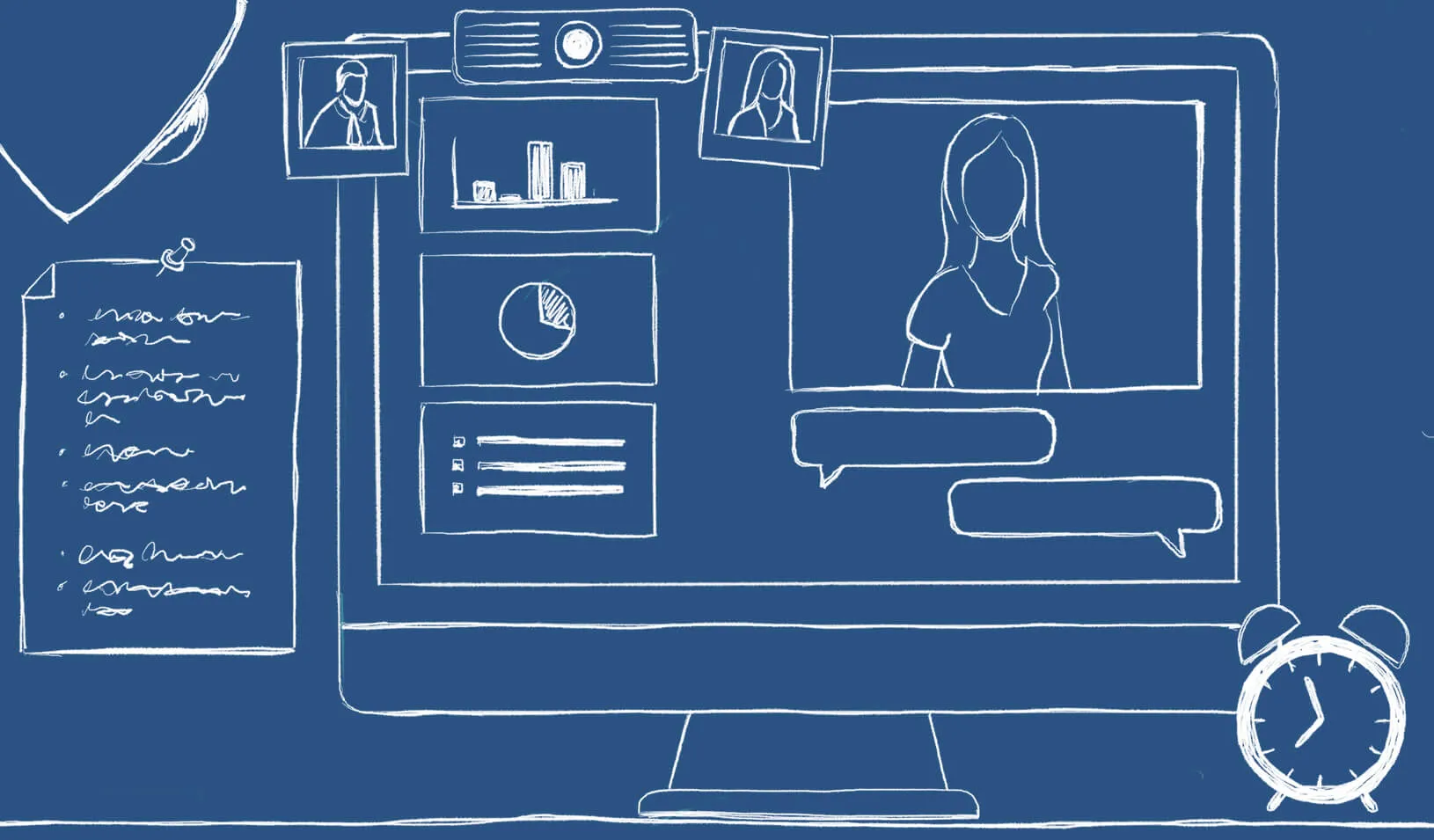
Presenting online? Try these suggestions to improve your results. | Illustration by Tricia Seibold
As audiences go global and you need to reach more people through technology (including webinars, conference calls and teleconference), you must consider the challenges to connecting with a virtual audience. Here I pinpoint 10 valuable best practices to ensure you communicate successfully.
1. Be Brief
Audiences begin to lose attention after roughly 10 minutes of hearing from the same presenter. If you have more than 10 minutes of content, use interactive activities to keep your audience engaged (for example, take a poll, give quizzes, or ask audience members for their opinions via chat).
2. Be Simple
Keep slides simple — avoid too many words, graphics and animation features. Less is definitely more!

Light yourself well | Illustration by Tricia Seibold
3. Be a TV Personality
Look straight into your camera, not the screen. Wear clothing that is neutral in color (no plaids or stripes). Light yourself well and from above. Be mindful of what appears behind you in the background. Invest in a good microphone.
4. Be Standing
Even though your audience cannot see you, stand when you present. This allows you to stay focused and use good presentation delivery skills such as belly breathing, vocal variety, and pausing.
5. Be Prepared
Practice delivering your presentation with your technology in advance of your talk. Make sure all of the features of the technology work. Record your practice using the recording feature of your tool. Watch and listen to learn what works and what you can improve.
6. Be Assisted
Have someone available to deal with technical issues and to field email/text questions. Also, if you have multiple remote audience members in one location, be sure to pick one of them to be your “eyes and ears.” Ask them to queue up questions and facilitate discussion on your behalf.
7. Be Specific
Ask pointed questions to avoid too many people answering at once. For example, rather than ask, “Are there any questions?” try “Who has a question about the solution I provided?” Set a ground rule that people state their names prior to speaking.

Imagine your audience | Illustration by Tricia Seibold
8. Be Synchronized
Transitions are critical. You must connect what you just said to what is coming next when you move from point to point. Transitions between topics and slides are good opportunities to get people reengaged to your talk.
9. Be Connected
Imagine your audience even though you can’t see them. You can place pictures of audience members behind your camera so you can look at people as you present.
10. Be Early
Encourage your audience to access your call or webinar in advance of the start time so you can iron out any technical issues in advance and get them familiar with the technology.
Matt Abrahams is a Stanford GSB organizational behavior lecturer, author, and communications coach.
For media inquiries, visit the Newsroom .
Explore More
Power, culture, persuasion, and the self: communication insights from stanford gsb faculty, lose yourself: the secret to finding flow and being fully present, speak your truth: why authenticity leads to better communication, editor’s picks.

April 04, 2016 A Big Data Approach to Public Speaking Key takeaways from analyzing 100,000 presentations.
November 19, 2014 Matt Abrahams: The Power of the Paraphrase An expert on public speaking shows how paraphrasing can help you navigate tricky communication situations.
- Priorities for the GSB's Future
- See the Current DEI Report
- Supporting Data
- Research & Insights
- Share Your Thoughts
- Search Fund Primer
- Teaching & Curriculum
- Affiliated Faculty
- Faculty Advisors
- Louis W. Foster Resource Center
- Defining Social Innovation
- Impact Compass
- Global Health Innovation Insights
- Faculty Affiliates
- Student Awards & Certificates
- Changemakers
- Dean Jonathan Levin
- Dean Garth Saloner
- Dean Robert Joss
- Dean Michael Spence
- Dean Robert Jaedicke
- Dean Rene McPherson
- Dean Arjay Miller
- Dean Ernest Arbuckle
- Dean Jacob Hugh Jackson
- Dean Willard Hotchkiss
- Faculty in Memoriam
- Stanford GSB Firsts
- Certificate & Award Recipients
- Teaching Approach
- Analysis and Measurement of Impact
- The Corporate Entrepreneur: Startup in a Grown-Up Enterprise
- Data-Driven Impact
- Designing Experiments for Impact
- Digital Business Transformation
- The Founder’s Right Hand
- Marketing for Measurable Change
- Product Management
- Public Policy Lab: Financial Challenges Facing US Cities
- Public Policy Lab: Homelessness in California
- Lab Features
- Curricular Integration
- View From The Top
- Formation of New Ventures
- Managing Growing Enterprises
- Startup Garage
- Explore Beyond the Classroom
- Stanford Venture Studio
- Summer Program
- Workshops & Events
- The Five Lenses of Entrepreneurship
- Leadership Labs
- Executive Challenge
- Arbuckle Leadership Fellows Program
- Selection Process
- Training Schedule
- Time Commitment
- Learning Expectations
- Post-Training Opportunities
- Who Should Apply
- Introductory T-Groups
- Leadership for Society Program
- Certificate
- 2023 Awardees
- 2022 Awardees
- 2021 Awardees
- 2020 Awardees
- 2019 Awardees
- 2018 Awardees
- Social Management Immersion Fund
- Stanford Impact Founder Fellowships and Prizes
- Stanford Impact Leader Prizes
- Social Entrepreneurship
- Stanford GSB Impact Fund
- Economic Development
- Energy & Environment
- Stanford GSB Residences
- Environmental Leadership
- Stanford GSB Artwork
- A Closer Look
- California & the Bay Area
- Voices of Stanford GSB
- Business & Beneficial Technology
- Business & Sustainability
- Business & Free Markets
- Business, Government, and Society Forum
- Get Involved
- Second Year
- Global Experiences
- JD/MBA Joint Degree
- MA Education/MBA Joint Degree
- MD/MBA Dual Degree
- MPP/MBA Joint Degree
- MS Computer Science/MBA Joint Degree
- MS Electrical Engineering/MBA Joint Degree
- MS Environment and Resources (E-IPER)/MBA Joint Degree
- Academic Calendar
- Clubs & Activities
- LGBTQ+ Students
- Military Veterans
- Minorities & People of Color
- Partners & Families
- Students with Disabilities
- Student Support
- Residential Life
- Student Voices
- MBA Alumni Voices
- A Week in the Life
- Career Support
- Employment Outcomes
- Cost of Attendance
- Knight-Hennessy Scholars Program
- Yellow Ribbon Program
- BOLD Fellows Fund
- Application Process
- Loan Forgiveness
- Contact the Financial Aid Office
- Evaluation Criteria
- GMAT & GRE
- English Language Proficiency
- Personal Information, Activities & Awards
- Professional Experience
- Letters of Recommendation
- Optional Short Answer Questions
- Application Fee
- Reapplication
- Deferred Enrollment
- Joint & Dual Degrees
- Entering Class Profile
- Event Schedule
- Ambassadors
- New & Noteworthy
- Ask a Question
- See Why Stanford MSx
- Is MSx Right for You?
- MSx Stories
- Leadership Development
- Career Advancement
- Career Change
- How You Will Learn
- Admission Events
- Personal Information
- Information for Recommenders
- GMAT, GRE & EA
- English Proficiency Tests
- After You’re Admitted
- Daycare, Schools & Camps
- U.S. Citizens and Permanent Residents
- Requirements
- Requirements: Behavioral
- Requirements: Quantitative
- Requirements: Macro
- Requirements: Micro
- Annual Evaluations
- Field Examination
- Research Activities
- Research Papers
- Dissertation
- Oral Examination
- Current Students
- Education & CV
- International Applicants
- Statement of Purpose
- Reapplicants
- Application Fee Waiver
- Deadline & Decisions
- Job Market Candidates
- Academic Placements
- Stay in Touch
- Faculty Mentors
- Current Fellows
- Standard Track
- Fellowship & Benefits
- Group Enrollment
- Program Formats
- Developing a Program
- Diversity & Inclusion
- Strategic Transformation
- Program Experience
- Contact Client Services
- Campus Experience
- Live Online Experience
- Silicon Valley & Bay Area
- Digital Credentials
- Faculty Spotlights
- Participant Spotlights
- Eligibility
- International Participants
- Stanford Ignite
- Frequently Asked Questions
- Operations, Information & Technology
- Organizational Behavior
- Political Economy
- Classical Liberalism
- The Eddie Lunch
- Accounting Summer Camp
- Videos, Code & Data
- California Econometrics Conference
- California Quantitative Marketing PhD Conference
- California School Conference
- China India Insights Conference
- Homo economicus, Evolving
- Political Economics (2023–24)
- Scaling Geologic Storage of CO2 (2023–24)
- A Resilient Pacific: Building Connections, Envisioning Solutions
- Adaptation and Innovation
- Changing Climate
- Civil Society
- Climate Impact Summit
- Climate Science
- Corporate Carbon Disclosures
- Earth’s Seafloor
- Environmental Justice
- Operations and Information Technology
- Organizations
- Sustainability Reporting and Control
- Taking the Pulse of the Planet
- Urban Infrastructure
- Watershed Restoration
- Junior Faculty Workshop on Financial Regulation and Banking
- Ken Singleton Celebration
- Marketing Camp
- Quantitative Marketing PhD Alumni Conference
- Presentations
- Theory and Inference in Accounting Research
- Stanford Closer Look Series
- Quick Guides
- Core Concepts
- Journal Articles
- Glossary of Terms
- Faculty & Staff
- Researchers & Students
- Research Approach
- Charitable Giving
- Financial Health
- Government Services
- Workers & Careers
- Short Course
- Adaptive & Iterative Experimentation
- Incentive Design
- Social Sciences & Behavioral Nudges
- Bandit Experiment Application
- Conferences & Events
- Reading Materials
- Energy Entrepreneurship
- Faculty & Affiliates
- SOLE Report
- Responsible Supply Chains
- Current Study Usage
- Pre-Registration Information
- Participate in a Study
- Founding Donors
- Location Information
- Participant Profile
- Network Membership
- Program Impact
- Collaborators
- Entrepreneur Profiles
- Company Spotlights
- Seed Transformation Network
- Responsibilities
- Current Coaches
- How to Apply
- Meet the Consultants
- Meet the Interns
- Intern Profiles
- Collaborate
- Research Library
- News & Insights
- Program Contacts
- Databases & Datasets
- Research Guides
- Consultations
- Research Workshops
- Career Research
- Research Data Services
- Course Reserves
- Course Research Guides
- Material Loan Periods
- Fines & Other Charges
- Document Delivery
- Interlibrary Loan
- Equipment Checkout
- Print & Scan
- MBA & MSx Students
- PhD Students
- Other Stanford Students
- Faculty Assistants
- Research Assistants
- Stanford GSB Alumni
- Telling Our Story
- Staff Directory
- Site Registration
- Alumni Directory
- Alumni Email
- Privacy Settings & My Profile
- Success Stories
- The Story of Circles
- Support Women’s Circles
- Stanford Women on Boards Initiative
- Alumnae Spotlights
- Insights & Research
- Industry & Professional
- Entrepreneurial Commitment Group
- Recent Alumni
- Half-Century Club
- Fall Reunions
- Spring Reunions
- MBA 25th Reunion
- Half-Century Club Reunion
- Faculty Lectures
- Ernest C. Arbuckle Award
- Alison Elliott Exceptional Achievement Award
- ENCORE Award
- Excellence in Leadership Award
- John W. Gardner Volunteer Leadership Award
- Robert K. Jaedicke Faculty Award
- Jack McDonald Military Service Appreciation Award
- Jerry I. Porras Latino Leadership Award
- Tapestry Award
- Student & Alumni Events
- Executive Recruiters
- Interviewing
- Land the Perfect Job with LinkedIn
- Negotiating
- Elevator Pitch
- Email Best Practices
- Resumes & Cover Letters
- Self-Assessment
- Whitney Birdwell Ball
- Margaret Brooks
- Bryn Panee Burkhart
- Margaret Chan
- Ricki Frankel
- Peter Gandolfo
- Cindy W. Greig
- Natalie Guillen
- Carly Janson
- Sloan Klein
- Sherri Appel Lassila
- Stuart Meyer
- Tanisha Parrish
- Virginia Roberson
- Philippe Taieb
- Michael Takagawa
- Terra Winston
- Johanna Wise
- Debbie Wolter
- Rebecca Zucker
- Complimentary Coaching
- Changing Careers
- Work-Life Integration
- Career Breaks
- Flexible Work
- Encore Careers
- Join a Board
- D&B Hoovers
- Data Axle (ReferenceUSA)
- EBSCO Business Source
- Global Newsstream
- Market Share Reporter
- ProQuest One Business
- Student Clubs
- Entrepreneurial Students
- Stanford GSB Trust
- Alumni Community
- How to Volunteer
- Springboard Sessions
- Consulting Projects
- 2020 – 2029
- 2010 – 2019
- 2000 – 2009
- 1990 – 1999
- 1980 – 1989
- 1970 – 1979
- 1960 – 1969
- 1950 – 1959
- 1940 – 1949
- Service Areas
- ACT History
- ACT Awards Celebration
- ACT Governance Structure
- Building Leadership for ACT
- Individual Leadership Positions
- Leadership Role Overview
- Purpose of the ACT Management Board
- Contact ACT
- Business & Nonprofit Communities
- Reunion Volunteers
- Ways to Give
- Fiscal Year Report
- Business School Fund Leadership Council
- Planned Giving Options
- Planned Giving Benefits
- Planned Gifts and Reunions
- Legacy Partners
- Giving News & Stories
- Giving Deadlines
- Development Staff
- Submit Class Notes
- Class Secretaries
- Board of Directors
- Health Care
- Social Impact
- Sustainability
- Class Takeaways
- All Else Equal: Making Better Decisions
- If/Then: Business, Leadership, Society
- Grit & Growth
- Think Fast, Talk Smart
- Spring 2022
- Spring 2021
- Autumn 2020
- Summer 2020
- Winter 2020
- In the Media
- For Journalists
- DCI Fellows
- Other Auditors
- Academic Calendar & Deadlines
- Course Materials
- Entrepreneurial Resources
- Campus Drive Grove
- Campus Drive Lawn
- CEMEX Auditorium
- King Community Court
- Seawell Family Boardroom
- Stanford GSB Bowl
- Stanford Investors Common
- Town Square
- Vidalakis Courtyard
- Vidalakis Dining Hall
- Catering Services
- Policies & Guidelines
- Reservations
- Contact Faculty Recruiting
- Lecturer Positions
- Postdoctoral Positions
- Accommodations
- CMC-Managed Interviews
- Recruiter-Managed Interviews
- Virtual Interviews
- Campus & Virtual
- Search for Candidates
- Think Globally
- Recruiting Calendar
- Recruiting Policies
- Full-Time Employment
- Summer Employment
- Entrepreneurial Summer Program
- Global Management Immersion Experience
- Social-Purpose Summer Internships
- Process Overview
- Project Types
- Client Eligibility Criteria
- Client Screening
- ACT Leadership
- Social Innovation & Nonprofit Management Resources
- Develop Your Organization’s Talent
- Centers & Initiatives
- Student Fellowships
We use essential cookies to make Venngage work. By clicking “Accept All Cookies”, you agree to the storing of cookies on your device to enhance site navigation, analyze site usage, and assist in our marketing efforts.
Manage Cookies
Cookies and similar technologies collect certain information about how you’re using our website. Some of them are essential, and without them you wouldn’t be able to use Venngage. But others are optional, and you get to choose whether we use them or not.
Strictly Necessary Cookies
These cookies are always on, as they’re essential for making Venngage work, and making it safe. Without these cookies, services you’ve asked for can’t be provided.
Show cookie providers
- Google Login
Functionality Cookies
These cookies help us provide enhanced functionality and personalisation, and remember your settings. They may be set by us or by third party providers.
Performance Cookies
These cookies help us analyze how many people are using Venngage, where they come from and how they're using it. If you opt out of these cookies, we can’t get feedback to make Venngage better for you and all our users.
- Google Analytics
Targeting Cookies
These cookies are set by our advertising partners to track your activity and show you relevant Venngage ads on other sites as you browse the internet.
- Google Tag Manager
- Infographics
- Daily Infographics
- Popular Templates
- Accessibility
- Graphic Design
- Graphs and Charts
- Data Visualization
- Human Resources
- Beginner Guides
Blog Beginner Guides 9 Tips for Improving Your Presentation Skills For Your Next Meeting
9 Tips for Improving Your Presentation Skills For Your Next Meeting
Written by: Hannah Tow Feb 03, 2020

Presenting to an audience is one thing, but presenting ideas in a persuasive manner to the key stakeholders of your business is a whole other ball game.
The fact of the matter is that successfully presenting to a room full of people is a skill that’s mastered by very few. It takes practice, practice, and even more practice to start feeling comfortable with everyone’s eyes focused on you so you can effectively get your point across.
The reality of presenting is that you can’t escape it. Especially as you start to move up in your career. If you’re yearning to improve, this article will walk you through the top nine tips to use to enhance your presentation skills for your next big meeting as well as throughout your life. Let’s get started.

9 top tips for improving your presentation skills:
- Practice speaking in front of others
- Use less text and more visuals in your presentation
- Leverage your personality
- Welcome questions and comments during
- Be passionate and engaging
- Maintain eye contact with your audience
- Obsess over your listeners
- Focus on confident body language
- Keep it as short as possible
Constantly practicing, refining and improving upon your presentation skills will not only make you a more confident individual, but you will find that you rise quicker to success in your career. However, having great presentation skills does not just affect your work-life. Great presentation skills are truly life skills that you should integrate into more areas than just the conference room.
1. Practice speaking in front of others

Practice always makes perfect.
It doesn’t matter how well you know what you’re talking about, the moment you have to persuade, engage, or teach in front of an audience, you will probably stumble a bit. This is a natural reaction that affects pretty much everyone when all eyes are pointed in one direction and the anxiety sets in.
It’s important to remember that the overwhelming feeling of stress you probably feel is the result of your unfamiliarity with the situation, not from your lack of preparedness. The more comfortable you are with taking the stage and having everyone’s attention on you, the less nervous you’ll get.
The greater confidence you have in your presentation skills will allow you to focus on what actually matters–which is the material that you’re presenting.
The best way to implement this practice is by starting off small. Prepare a presentation to give to your friends, family, or closest co-workers. This sounds easy, but you will learn that it’s not necessarily who is listening to you that causes nerves, but it’s the fact that all of the attention is on you.
You’ll become more comfortable with the attention when you begin practicing in front of others more often, which will allow you to effectively present your ideas next time it’s your turn to speak in the conference room.
RELATED: Learn the top ten public speaking tips to better prepare you for your practice sessions.
2. Use less text and more visuals in your presentation

We’ve all been there before: sitting at the conference table trying our very best to stay interested and engaged with the presentation before us. The presentation lacks color, images, and all sense of creativity while containing an over-abundance of text and long-form paragraphs.
These types of presentations are horrible for two reasons:
The first reason being that the minute you have words on the screen, your audience will direct their attention away from you to begin reading and completely tune you out.
The second reason is if your presentation skills are poor, not only will your presentation be dull to listen to, but it will be unbelievably boring to look at as well. You’ll quickly find out how easy it is to lose most of the room’s attention when you create a lackluster presentation.
If you feel lost attempting to design your slides into an exciting work of art, try using creative presentation templates . PowerPoint templates make it simple to produce something beautiful, and they can also make you feel like an accomplished designer after seeing the outcome, such as this business presentation example .

In addition to nicely designed slides, you should always try to use infographics and charts to help you better summarize the complex information you’re relaying to your audience. It will be much easier for your listeners to understand what you’re explaining when they have something to visualize it with. Plus, there are plenty of resources out there to help you craft these visuals.
Learn how to make an infographic in five easy steps or produce an impressive graph .
If you feel worried that your presentation doesn’t hold enough content, you must remember the main reason for visual aids:
They are to enhance what you’re speaking about, not lead it!
If you’ve done enough practicing, you should feel confident in your presentation skills to thoroughly explain your main ideas and you won’t need to rely on the screen anyhow.
TIP: If you’re looking for even more ways to engage your audience with your visuals, check out 120+ presentation ideas that are sure to wow and delight!
3. Leverage your personality

As cliche as it sounds, you should always be true to who you are, especially if when you’re presenting.
It’s incredibly easy to tell if someone is faking it for the sake of their audience, so you should never pretend to act in a way that you don’t typically do. Not only will you feel unnatural and uncomfortable doing it, but you can also risk embarrassment when you try to tell a forced joke and no one laughs or your new-found trait of sarcasm doesn’t sit well with your boss.
It should bring you comfort knowing that most everyone in your meeting knows who you are. Use this to your advantage and start the presentation by playing up your best personality traits. Use your humor if you’re known to crack jokes or throw in your typical mannerisms.

These little additions will make your presentation feel much more relaxed for everyone involved. In addition to your own unique quirks, you should also bring a level of personability to your meeting.
Be empathetic, smile more, and look around the room. Doing so will improve your presentation skills, make you more likable, and allow your audience to be more receptive to you.
In many cases, you may be presenting virtually, rather than in person. You can still allow your personality to shine through and energize your virtual presentation. Lisa Schneider, Chief Growth Officer at Merriam-Webster, wrote for Venngage on how to adapt an in-person presentation into a virtual presentation . Check it out.
4. Welcome questions and comments during your presentation

Be flexible throughout your presentation. Answer questions and respond to any comments your audience may have either through hand raising or an audience response tool . Don’t worry if it veers you off your script. Chances are if one person has a question or comment, the others in the room are thinking it too.
Use this as an opportunity to prove how well you understand the material you’re presenting–your audience will take notice.
Also, take some time out at the start or your presentation to ask your audience some icebreaker questions and slowly transition into the more important stuff.
Taking this minute to talk through anything that your audience is thinking of is a good thing because it means they are engaged with you and really paying attention to the words coming out of your mouth. Doing so will also relax the format of your presentation, allowing you to feel more confident and relaxed as well.
5. Be passionate and engaging
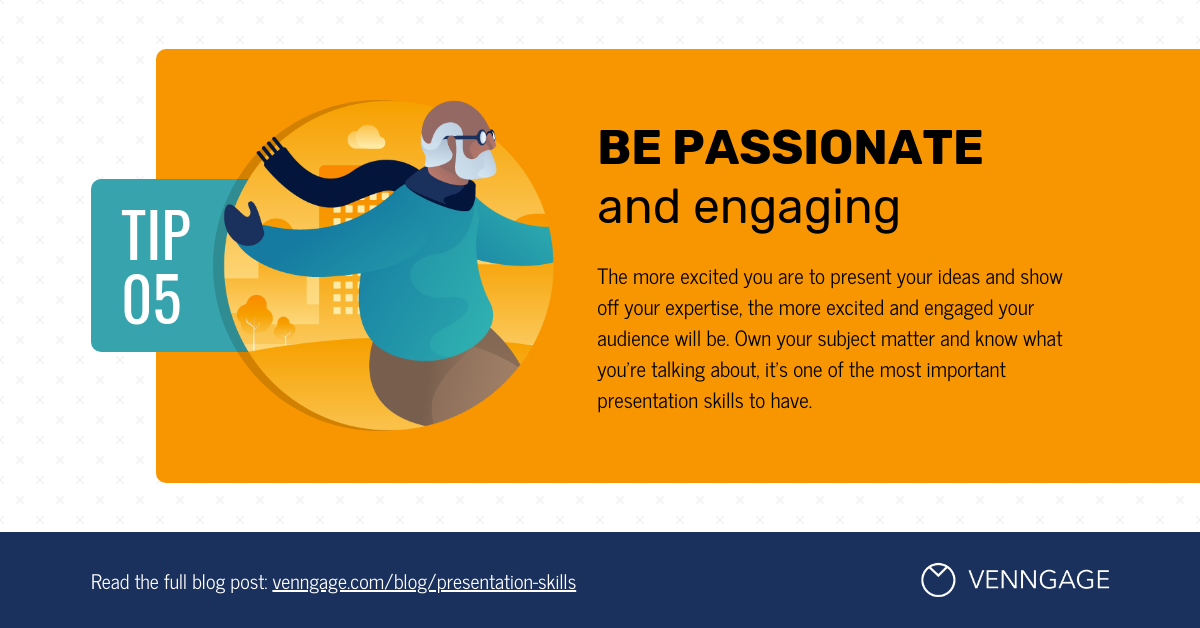
When creating your presentation, craft it in such a way that makes your audience curious and makes them have questions for you. A persuasive presentation is the best way to get the positive reactions you are looking for, so be as passionate as you can be about your subject matter to seal the deal.
Remember that questions and comments during your presentation are a good thing, especially if you’re the one prompting them!
The more excited you are to present your ideas and show off your expertise, the more excited and engaged your audience will be. Own your subject matter and know what you’re talking about, it’s one of the most important presentation skills to have.
6. Maintain eye contact with your audience

This is a very obvious tip that will go a long way with your audience.
When the people you’re speaking to feel like you’re taking notice of them, they are much more likely to take notice of you and pay better attention to everything that you’re saying.
It’s important to remember that losing eye contact and looking everywhere but at the people that you’re presenting to is a common nervous behavior. Pay extra close attention to whether or not you’re guilty of that, and work to ensure you have your eyes on at least one person.
7. Obsess over your listeners

Be receptive to your listeners. You can’t forget that what you’re presenting is for the audience, and it has nothing to do about you!
Focus on the value you can provide to the people in the room. The more serving you are to them, the greater chance you have at driving your point home and nailing your presentation.
It’s also important not to forget about those listening to you remotely over video conferencing . Make sure they know you’re aware of them and engage them as well!
8. Focus on confident body language
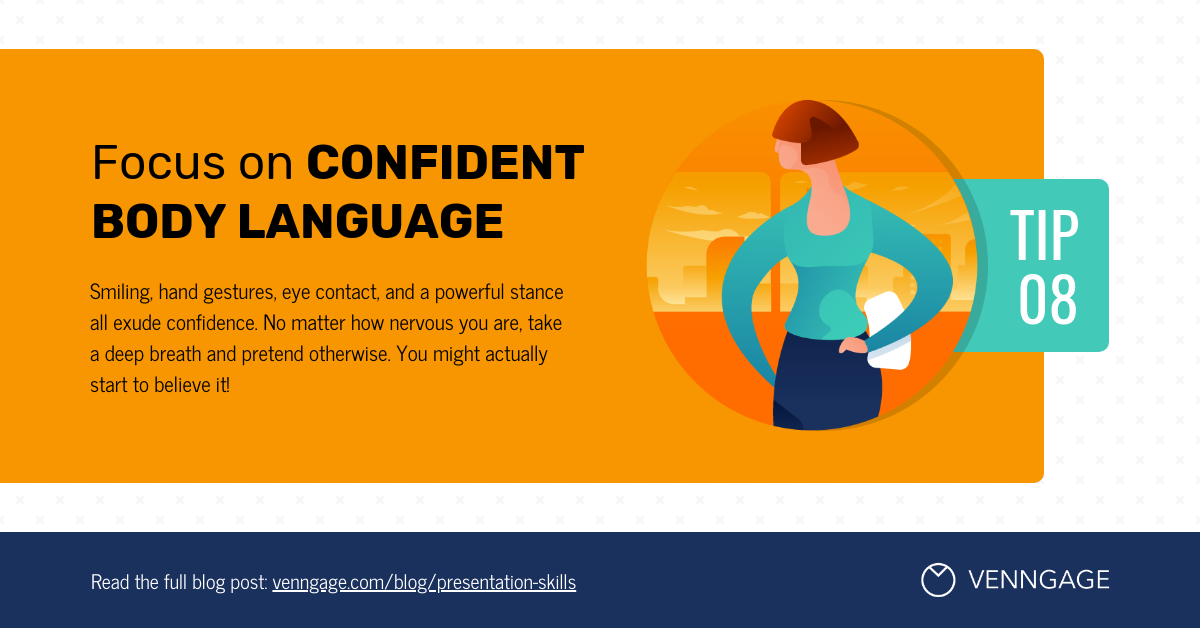
Smiling, hand gestures, eye contact, and a powerful stance all exude confidence.
If you don’t have strong body language and are showing physical signs of nervousness (ie. tapping, bouncing, shaking, darting eyes, and more) your audience will have a hard time focusing on the material you’re presenting and hone in on the fact that you’re nervous and probably don’t know what you’re talking about as much as you say you do.
No matter how nervous you are, take a deep breath and pretend otherwise. You might actually start to believe it!
9. Keep it as short as possible

Every single person’s time is valuable ( especially at work), so don’t waste precious meeting time. If you can say everything you need to in half of the time that is allotted, you should do so.
Ensure that you’re only sharing the most important information. All of the extra fluff will bore your audience and you will lose their attention very quickly.
It’s a great idea to wrap up your presentation with key takeaways and action items. Doing so will ensure that no matter how quickly your meeting ended, your team understands their next steps. You can send out a quick, summarizing slide deck or an easy to read one-pager for their reference later. These visuals will make sure all of your bases are covered and that everyone is on the same page upon leaving the meeting.
A good presentation makes all the difference. Check out the top qualities of awesome presentations and learn all about how to make a good presentation to help you nail that captivating delivery.

Never stop refining your presentation skills
Possessing great presentation skills doesn’t come naturally to most people–it’s something that’s learned and practiced over time. As with most things in life, you must continuously work on refining your skills to get better and better.
Use these nine proven presentation tips that we covered in this article to improve your presentation skills and ace different presentation styles . By doing so, you will find that presenting at your key meetings becomes easier and easier and you’ll begin to nail it every single time.
More presentation guides:
How to Make a Persuasive Presentation
120+ Best Presentation Ideas, Design Tips & Examples
33 Presentation Templates and Design Tips to Hold Your Audience’s Attention
Presentation Design Guide: How to Summarize Information for Presentations
Discover popular designs
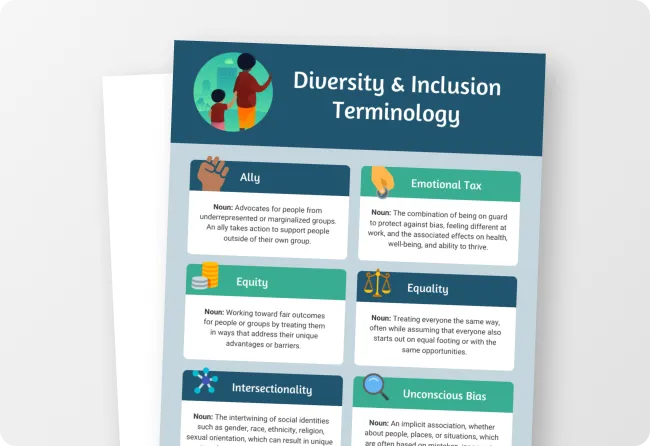
Infographic maker
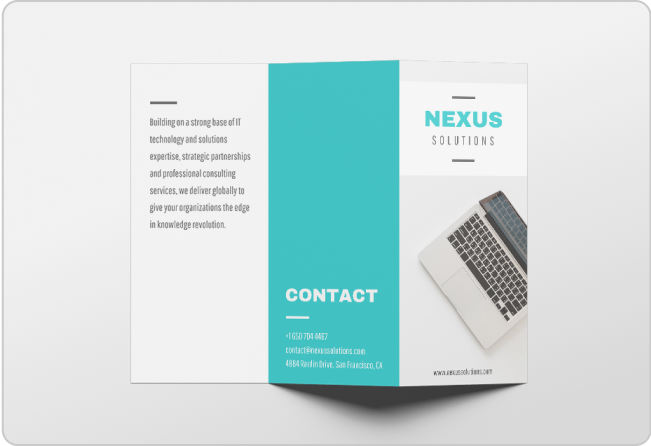
Brochure maker
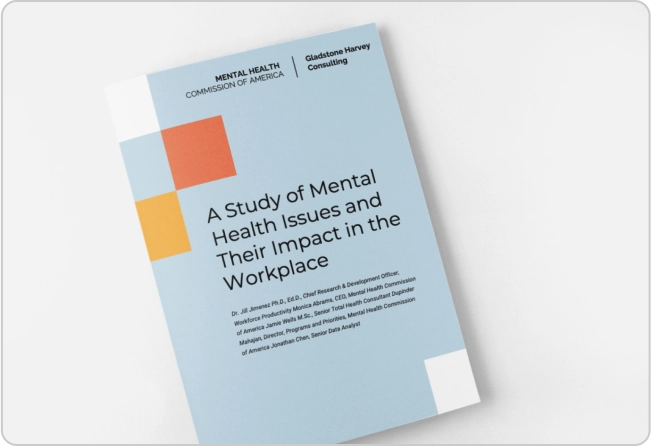
White paper online
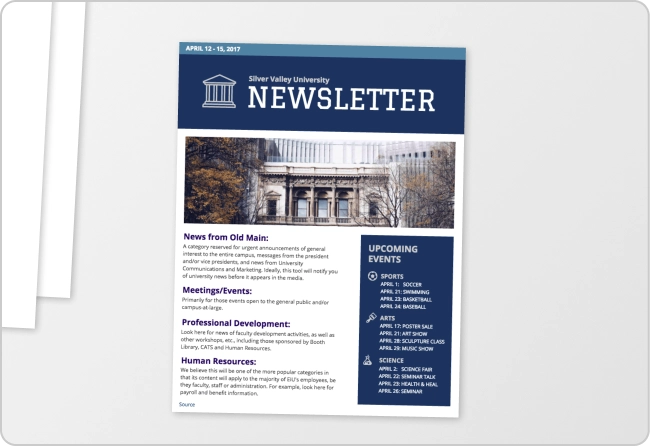
Newsletter creator
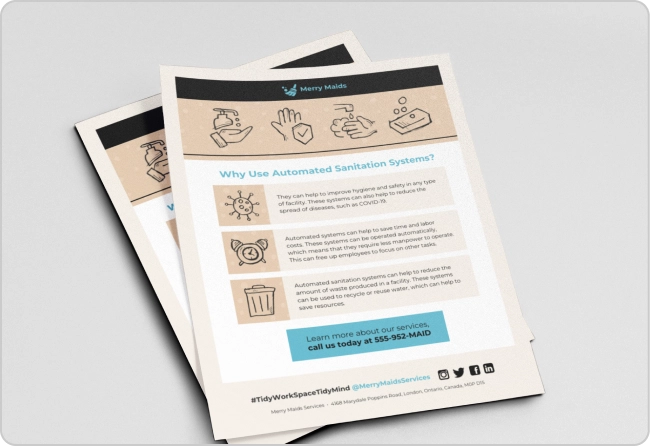
Flyer maker
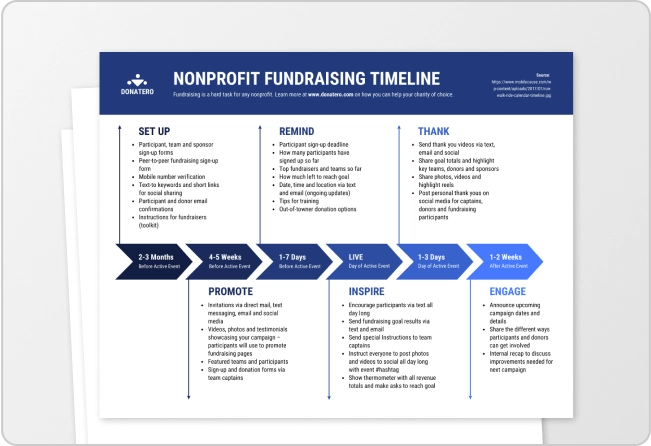
Timeline maker
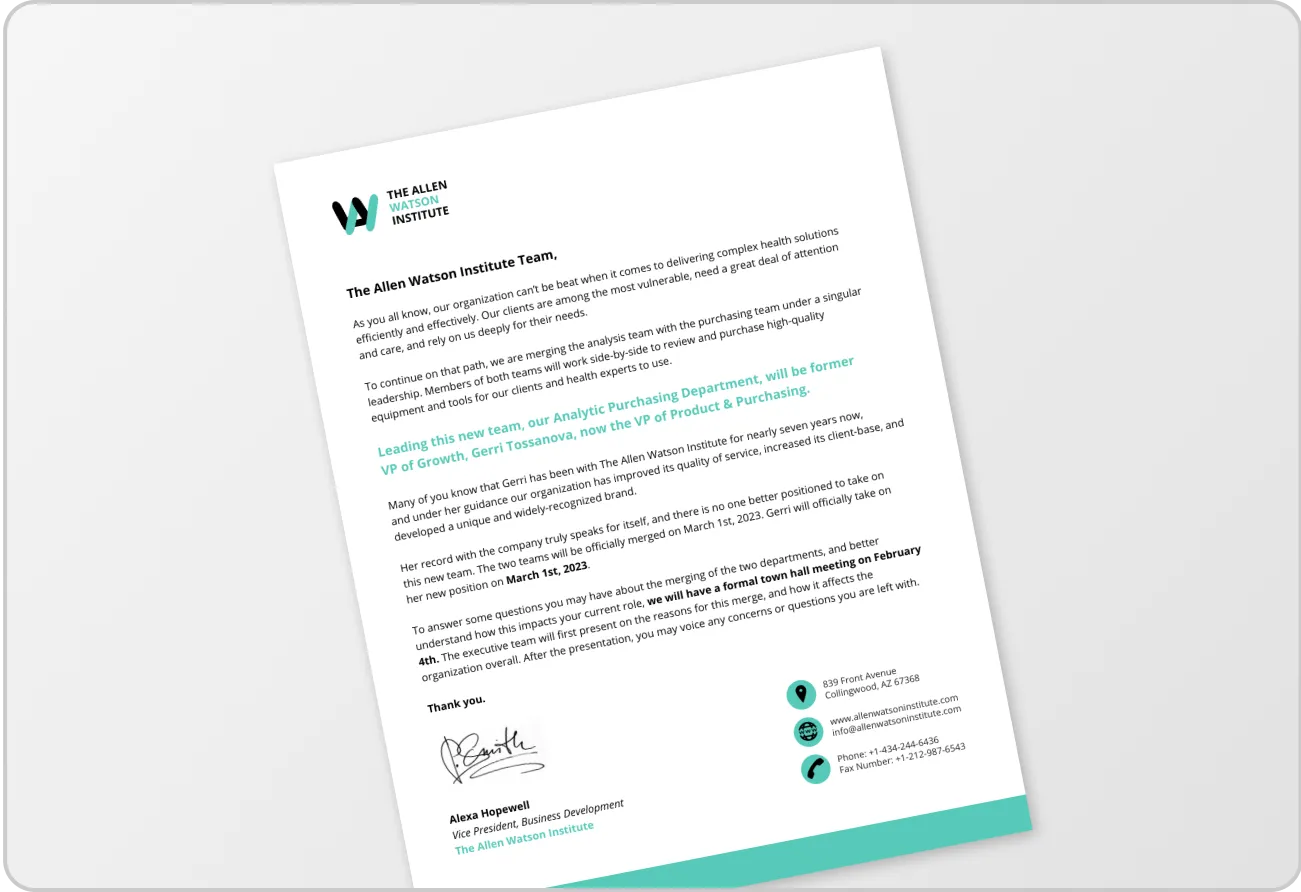
Letterhead maker
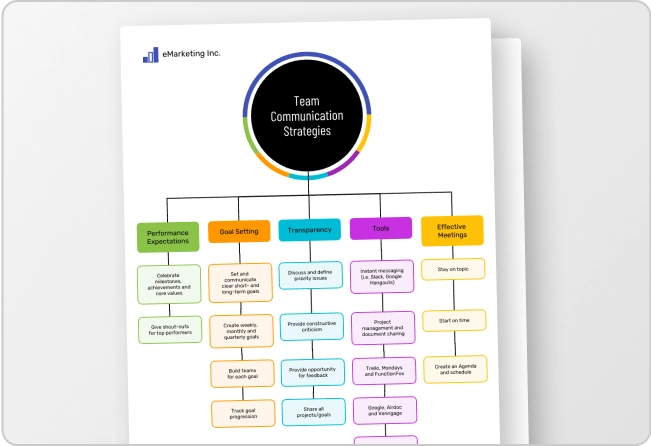
Mind map maker
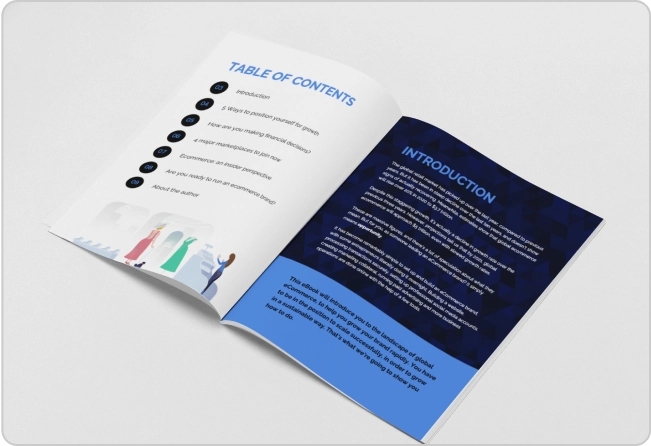
Ebook maker

- PRESENTATION SKILLS
Search SkillsYouNeed:
Presentation Skills:
- A - Z List of Presentation Skills
- Top Tips for Effective Presentations
- General Presentation Skills
- What is a Presentation?
- Preparing for a Presentation
- Organising the Material
- Writing Your Presentation
- Deciding the Presentation Method
- Managing your Presentation Notes
- Working with Visual Aids
- Presenting Data
- Managing the Event
- Coping with Presentation Nerves
- Dealing with Questions
- How to Build Presentations Like a Consultant
- Self-Presentation in Presentations
- Specific Presentation Events
- Remote Meetings and Presentations
- Giving a Speech
- Presentations in Interviews
- Presenting to Large Groups and Conferences
- Giving Lectures and Seminars
- Managing a Press Conference
- Attending Public Consultation Meetings
- Managing a Public Consultation Meeting
- Crisis Communications
- Elsewhere on Skills You Need:
- Communication Skills
- Facilitation Skills
- Teams, Groups and Meetings
- Effective Speaking
- Question Types
Subscribe to our FREE newsletter and start improving your life in just 5 minutes a day.
You'll get our 5 free 'One Minute Life Skills' and our weekly newsletter.
We'll never share your email address and you can unsubscribe at any time.
Presentation Skills
Presenting information clearly and effectively is a key skill in getting your message across. Today, presentation skills are required in almost every field, and most of us are required to give presentations on occasions. While some people take this in their stride, others find it much more challenging.
It is, however, possible to improve your presentation skills with a bit of work. This section of SkillsYouNeed is designed to help.
Many people feel terrified when asked to talk in public, especially to bigger groups. However, these fears can be reduced by good preparation, which will also lay the groundwork for making an effective presentation.
There are Different Types of Presentations, but They’re All Presentations
There are any number of occasions when you may be asked to speak in public or to a group of people. They include:
- Presenting or making a speech at a conference or event.
- Objecting to a planning proposal at a council meeting.
- Making a speech at a wedding.
- Proposing a vote of thanks to someone at a club or society.
- On behalf of a team, saying goodbye and presenting a gift to a colleague who is leaving.
- Seeking investment or a loan to help you set up a new business.
These can all be considered presentations.
They do not, however, all require the same approach. You would not, for example, use PowerPoint to thank a colleague who was leaving. It would be unusual (though it has been done) to use it in a speech at a wedding. However, a conference audience would be somewhat surprised NOT to see slides projected onto a screen.
It follows, therefore, that there is no single set of rules that apply to all presentations. There are, however, some things that every presentation opportunity has in common. These include:
You will present better if you have prepared effectively . This does NOT necessarily mean that you have written out your speech verbatim and rehearsed it until you know it off by heart—although that might work for some people. It does, however, mean that you have to be confident that you are saying the right thing, in the right way, to the right people.
You need to be clear about your audience and your message . Every presentation will be better if you have clearly considered the message that you want or need to convey, and how best to convey it to your audience. These two pieces of information drive your style, structure, content, and use of visual aids.
You must never overrun your allocated time . In other words, don’t outstay your welcome. Almost every speech or presentation is better if it is shorter. Nobody minds going for coffee early or finishing before they expected to do so. Everybody minds being held up.
Generally speaking, your audience starts on your side. As a rule, your audience is there (more or less) voluntarily. They have chosen to listen to you, and they want to enjoy your presentation. The occasion is yours to lose.
An Important Point
There is one very important point to remember: if what you’re doing or saying is not working, do something else.
One of the worst feelings as a presenter is that you have lost your audience. You know that’s happened, but you continue to stumble through your remaining PowerPoint slides for the next 15 minutes, as your audience checks their phones and wishes it was coffee time. You think you have no choice, but that’s not actually true.
When you present, you are in charge of the room . The audience has effectively handed you control and is sitting back waiting for you to do something. You may have prepared a specific talk, but if you see that isn’t working, you can always change it. You are, after all, the expert.
You can, for example:
- Skip through some slides to a section that they may find more interesting;
- Ask your audience whether there is particular information that they were expecting that you are not providing;
- Suggest that everyone looks a bit sleepy, and maybe it would be better to start questions early, or have a discussion; or
- Ask the audience at the start of the presentation what they are expecting and what they want you to cover. That way, you can tailor the presentation to fit their expectations.
Just as when you are facilitating, you want to help your audience get the most out of your presentation. The best way to do that is to accept feedback—which may include smiles, nods of interest, or people getting their phones out.
Quick Guide to Effective Presentations
If you need to improve your presentation skills quickly, then a really good place to start is with our Top Tips for Effective Presentations .
This will give you some ‘quick wins’ that will help you improve your presentations. If you’re already an experienced presenter, this page should be a useful refresher, or even take your skills from good to great.
Our tips include general ideas about connecting with your audience, information about the importance of voice and body language, and detailed tips about preparing slide-shows.
The most important tip of all, however, is to remember that it's all about your audience.
Keep that in mind, and your presentation skills will almost instantly improve.
If you have more time to develop your presentation skills…
…then the Presentation Skills section of SkillsYouNeed is designed to help.
Our Presentation Skills section is split into two parts.
- The first gives you a step-by-step guide to putting together and delivering a professional and effective presentation .
- The second provides more detailed information about presenting and communicating in particular circumstances .
You can either use our step-by-step guide to walk you through the presentation preparation and delivery process, or you can focus on particular areas that are an issue for you.
Preparing for Your Presentation
The guide starts by explaining What is a Presentation?
We define a presentation as a means of communication that can be adapted to various speaking situations, such as talking to a group, addressing a meeting or briefing a team. Effective presentations usually require careful thought and preparation—although this preparation need not take very long.
Preparation is the most important part of making a successful presentation. Our page on Preparing For A Presentation explains what information you need before you can really start to plan your presentation and decide what you are going to say. The most important aspects include the objective of the presentation, the subject, and the audience.
Irrespective of whether the occasion is formal or informal, you should always aim to give a clear, well-structured delivery. To do so, you need to organise your presentation material . You can either do this in your head, or use a technique like mind-mapping to help you identify links and good flow.
By the time you come to write your presentation , you should know exactly what you want to say and the order in which you want to say it. You may want to use one of the standard presentation structures, such as ‘What, Why, How?’. You will also find it helpful to consider how to tell your story most effectively, and to use stories in your presentation to illustrate points. There is more about this in our page on writing your presentation .
You also need to decide on your presentation method . Presentations range from the formal to the informal. Your choice of presentation method will depend on many factors, including the audience, the venue, the facilities, and your own preferences.
Visual aids can add another dimension to your presentation, helping to hold your audience’s attention, and also act as a reminder of what you wanted to say. However, they need handling with care. Only use visual aids if they are necessary to maintain interest and assist comprehension . If visual aids are not used well, they can ruin a presentation.
See Working with Visual Aids to avoid falling into the trap of the dreaded ‘ Death by PowerPoint’ .
A particular case of visual aids is the use of data in a presentation.
There are times when using data in a presentation can really help you to tell the story better. It is, however, important not to blind your audience with statistics. You also need to remember that many people find numbers difficult to understand. Our page on Presenting Data gives some hints and tips about using data effectively in a presentation situation.
On the Day of the Presentation
There are a number of aspects to delivering your presentation on the day.
The practicalities of how you manage your presentation can make a significant difference to its success, and to your nerves! For example, turning up early means that you have will have a chance to see the room, and ensure that you can operate all the necessary equipment. There is more about how to cope, including managing sound systems, audio-visual equipment and lecterns in our page on Managing the Presentation Event .
Many people also feel very nervous before and during a presentation. This is entirely normal, and can even be helpful if you can channel it in the right way. There are some tried and tested strategies and techniques to manage your nerves so that you can concentrate on delivering an effective and engaging presentation.
See Coping with Presentation Nerves for some ideas that will help.
How you present yourself can also affect how your audience responds to your presentation.
You need to fit with your audience's expectations if they are not going to spend quite a large chunk of your presentation dealing with the differences between expectations and reality.
For more about aspects of self-presentation, see our page on Self-Presentation in Presentations .
You also need to consider how to manage your presentation notes .
Few people are able to give a presentation without notes. You will need to know your own abilities and decide how best to make the presentation. You might manage your talk by using full text, notes on cue cards, keywords on cue cards, or mind maps. There is more about this in our page on Managing your Presentation Notes .
After the presentation, you may be faced with a question-and-answer session. For many people, this is the worst part of the event.
Decide in advance how and when you wish to handle questions. Some speakers prefer questions to be raised as they arise during the presentation whilst others prefer to deal with questions at the end. At the start of your presentation, you should make clear your preferences to the audience. See our page on Dealing with Questions for more ideas about how to make the question session pleasant and productive, rather than something to dread.
Presenting Under Particular Circumstances
You may find that you need to give a presentation under certain circumstances, where your previous experience is less helpful.
Circumstances that may be new to you include:
- Giving a Speech , for example, at a wedding.
One particular special case is attending public consultation meetings.
Our pages on Attending Public Consultation Meetings , and Managing Public Consultation Meetings provide information to help whether you are a concerned member of the public, or responsible for organising a public meeting.
You may also find yourself required to organise or manage a press conference.
Although this may not strictly be what you would describe as a ‘presentation’, it is nonetheless an event at which you are required to present your organisation in a particular light.
Our page on Managing a Press Conference gives some ideas about how best to do that.
Finally, should you be unlucky enough to be involved in a serious crisis or disaster that affects your organisation, our page on Crisis Communications gives some ideas about how to manage press and public relations on these occasions.
Start with: What is a Presentation? Top Tips for Effective Presentations
See also: Personal Appearance Interpersonal Communication Skills

5 Tips to Boost Your Presentation Skills and Wow Your Audience
- The Speaker Lab
- May 24, 2024
Table of Contents
Crafting an unforgettable presentation requires more than just compelling content. The way you deliver your message is just as important. No matter your role—CEO, entrepreneur, author, professor, coach, or consultant—honing your presentation skills is key to effectively communicating your ideas and making a memorable impact on your audience. It may not always be easy, but we’re here to help. To help you nail it every time, we’ve compiled 10 essential tips for honing your presentation skills . From knowing your audience to practicing confident body language, we have the guidance you need to give a presentation that’s effective and memorable.
5 Essential Tips for Delivering a Killer Presentation
You’ve probably sat through your fair share of presentations—some good, some not so good. The difference between an effective presentation and one that falls flat often comes down to a few key factors. If you want to improve your skills and deliver a presentation that engages your audience, here are some essential tips you need to keep in mind.
1. Understand Your Audience
Before you even start putting together your presentation, you need to take some time to understand who you’ll be speaking to. What are their needs, interests, and expectations? What level of knowledge do they have about your topic?
Tailoring your content and delivery style to your specific audience is crucial for making a real connection and delivering value. For instance, if you’re giving a presentation to a group of executives who are pressed for time, you’ll probably want to give them key takeaways upfront. By adapting your approach and leading with the most important points, you would be able to better hold your audience’s attention and make a strong impact.
2. Practice Makes Perfect
If you only go away with one tip today, then know that having the discipline to practice is an essential presentation skill. Rehearsing your talk multiple times helps you build confidence, refine your delivery, and ensure a smooth flow. Make sure to practice out loud, as if you’re in front of the actual audience. You can even record yourself and watch the video back to identify areas for improvement. It might feel awkward at first, but it can make a huge difference in your final delivery.
3. Engage with Eye Contact
Making eye contact with your audience is one of the most powerful ways to connect with them and keep them engaged. When you look people in the eye, it builds trust and shows that you’re confident in what you’re saying.
During your presentation, make a point to scan the room and make brief eye contact with individuals in different sections. It creates a sense of intimacy and makes people feel like you’re speaking directly to them. Just be sure to keep it natural and avoid staring anyone down.
4. Use Compelling Visuals
Visuals can be a game-changer when it comes to delivering an effective presentation. Well-designed slides, images, and videos help reinforce your message, break up text-heavy content, and keep your audience interested.
The key is to use visuals strategically, not just for the sake of having them. Every visual element should serve a clear purpose and enhance your overall message. And don’t forget about quality—blurry images or cluttered slides can be more distracting than helpful.
5. Tell a Story
Humans are wired to respond to stories. Integrating storytelling into your presentation is a fantastic way to make your content more engaging, memorable, and relatable.
Think about how you can structure your presentation as a narrative arc, with a clear beginning, middle, and end. Use anecdotes, case studies, and examples to illustrate your points and create an emotional connection with your audience. Some of the best presentations are the ones that take the audience on a journey and leave them feeling inspired.
Find Out Exactly How Much You Could Make As a Paid Speaker
Use The Official Speaker Fee Calculator to tell you what you should charge for your first (or next) speaking gig — virtual or in-person!
Master Your Body Language for Maximum Impact
Your body language can speak volumes during a presentation, often conveying just as much as your words. Mastering non-verbal communication is key to delivering a killer presentation that commands attention and leaves a lasting impression. Below are our tips for improving this presentation skill.
Maintain Confident Posture
How you carry yourself on stage can instantly impact your perceived confidence and credibility. Stand tall, keep your shoulders back, and maintain a stable, grounded stance. Avoid slouching, fidgeting, or shifting your weight from side to side, as these habits can make you appear nervous or unsure.
In addition, make a conscious effort to take up space and own the room. It’s not about being arrogant, but about projecting self-assurance and authority. Practice power poses beforehand to get in the right headspace and boost your confidence.
Use Gestures Purposefully
Incorporating hand gestures can add emphasis, clarity, and visual interest to your presentation. However, it’s important to use them purposefully and avoid overdoing it.
What’s our tip for improving this presentation skill? Use open, expansive gestures to convey confidence and inclusivity. Pointing can be effective for directing attention or making a strong point, but use it sparingly. Avoid crossing your arms or putting your hands in your pockets, as these positions can make you seem closed off or disengaged.
Vary Your Tone and Pace
Your voice is a powerful tool for engaging your audience and keeping them interested. Vary your tone, pitch, and pacing throughout your presentation to add dynamic energy and prevent monotony.
Speak with enthusiasm and conviction, allowing your passion for the topic to shine through. Use strategic pauses for emphasis or to give the audience a moment to process a key point. Adjust your volume and speed based on the room size and acoustics.
Avoid Distracting Mannerisms
Distracting mannerisms can quickly derail an otherwise great presentation. Be aware of any nervous tics or habits you might have, such as playing with your hair, clicking a pen, or saying “um” or “like” excessively.
Practice self-awareness and work on minimizing these behaviors. It can be helpful to video record yourself and watch it back to identify any distracting mannerisms you might not realize you have. Remember, the goal is to keep the focus on your message, not your quirks.
Overcoming Stage Fright and Nerves
Even the most seasoned presenters can experience stage fright and nerves. The key is to have strategies in place to manage those feelings and deliver a confident, impactful presentation.
Prepare Thoroughly
One of the best ways to combat stage fright is to be thoroughly prepared. When you know your material inside and out, it gives you a solid foundation to fall back on, even if nerves start to creep in.
For instance, you might create a detailed outline of your presentation, including key points, transitions, and any important data or examples. Using the outline, practice delivering the content out loud multiple times until it feels natural and conversational. When it’s time to actually present, you can fall back on the outline if you feel yourself start to get nervous.
Visualize Success
Visualization is a powerful tool for boosting confidence and calming nerves. In the days leading up to your presentation, take some time to close your eyes and imagine yourself delivering your talk with ease and conviction. Picture the audience responding positively, nodding along, and applauding at the end. Envision yourself feeling calm, confident, and in control. The more vividly you can imagine a successful outcome, the more likely you are to achieve it.
Breathe Deeply
Although tips on breathing exercises might seem unrelated, they’re actually an invaluable presentation skill. Think about it. When we’re nervous, our breathing tends to become shallow and rapid. This can exacerbate feelings of anxiety and make it harder to think clearly.
Before and during your presentation, focus on taking slow, deep breaths from your diaphragm. Inhale through your nose for a count of four, hold for four, then exhale through your mouth for a count of four. This simple technique can help calm your nerves and center your mind.
Focus on Your Message
When stage fright starts to take hold, it’s easy to get caught up in worries about how you’re coming across or what the audience might be thinking. Instead, try to shift your focus to your message and the value you’re providing.
Remind yourself of why your topic matters and how it can benefit your audience. Concentrate on delivering your content with clarity, conviction, and enthusiasm. When you’re passionate about what you’re saying, it shines through and connects with your listeners.
Crafting Memorable and Engaging Content
No matter how polished your delivery is, the foundation of a killer presentation is always the content itself. Crafting a memorable and engaging message is essential for making a lasting impact on your audience.
Start Strong
The opening moments of your presentation are crucial for capturing your audience’s attention and setting the tone for what’s to come. Don’t waste this opportunity with a generic introduction or a long-winded anecdote.
Instead, start with a bang. Use a surprising statistic, a thought-provoking question, or a bold statement that immediately grabs people’s interest. Make it clear why your topic matters and what your audience stands to gain from listening to you. Practice these tips and you’ll have this presentation skill mastered in no time.
Use Examples and Anecdotes
Abstract concepts and dry data can be difficult for audiences to grasp and remember. That’s where examples and anecdotes come in. These concrete illustrations help bring your ideas to life and make them more relatable.
When crafting your presentation, always look for opportunities to weave in real-world examples, case studies, or personal stories that reinforce your key points. Not only do these elements make the content more engaging, but they also help the audience see how the information applies to their own lives and experiences.
Incorporate Humor
Injecting humor into your presentation can be a great way to break the ice, lighten the mood, and keep your audience engaged. A well-timed joke or a witty observation can make your message more memorable and help you connect with your listeners on a human level.
Of course, it’s important to use humor judiciously and appropriately. Make sure your jokes are relevant to your topic and won’t offend or alienate anyone in the audience.
End with a Call to Action
Your presentation shouldn’t just be informative—it should also be actionable. As you near the end of your talk, be sure to include a clear and compelling call to action.
What do you want your audience to do with the information you’ve shared? Is there a specific step they can take to apply your ideas or further their learning? Make it explicit and easy for them to follow through.
You can also end your presentation with a challenge or a question that encourages the audience to reflect on how they can put the content into practice. It’s a powerful way to drive home your message and ensure that your words have a lasting impact.
Handling Questions and Audience Interaction
One of the most daunting aspects of giving a presentation can be handling questions from the audience. But with the right approach, this interaction can actually be an opportunity to reinforce your message and build credibility. Below are some tips on how to improve this presentation skill and close out your speech with confidence.
Anticipate Common Questions
Before your presentation, take some time to brainstorm the questions your audience is likely to ask. Consider their background, their level of knowledge on the topic, and any potential objections or concerns they might have.
Once you have a list of anticipated questions, practice answering them out loud. This will help you feel more prepared and confident when the time comes to address them in real-time.
Listen Attentively
When an audience member asks a question, give them your full attention. Make eye contact, nod to show you’re listening, and avoid interrupting or rushing to respond. If the question is lengthy or convoluted, don’t be afraid to ask for clarification. Paraphrasing the question back to the asker can also help ensure that you’ve understood it correctly and give you a moment to gather your thoughts.
Respond Concisely
When answering questions, aim to be concise and to the point. Avoid rambling or getting sidetracked by tangential information. Stick to the key facts and insights that directly address the question at hand.
If a question requires a more in-depth response than time allows, offer to follow up with the individual after the presentation. You can also direct them to additional resources or materials that provide more detail on the topic.
Redirect Off-topic Queries
Occasionally, you may receive a question that is off-topic or not directly relevant to your presentation. In these cases, it’s important to acknowledge the question while gently redirecting the conversation back to your main points.
You might say something like, “That’s an interesting question, but it’s a bit outside the scope of what we’re focusing on today. Let’s talk more about [relevant topic] and how it relates to [your key message].”
Remember, your goal is to keep the discussion focused and productive, while still making the audience feel heard and valued.
Leveraging Technology for Impactful Presentations
In today’s digital age, technology can be a powerful tool for enhancing your presentations and engaging your audience. However, knowing how to use technology isn’t always straightforward. That’s why we’re offering you some tips on how to level up this presentation skill. Below are some insights on how to use technology strategically and not let it overshadow your message.
Keep Slides Simple
When it comes to presentation slides, less is often more. Avoid cluttering your slides with too much text, busy graphics, or distracting animations. Instead, keep them clean, concise, and visually appealing.
Use a consistent color scheme and font throughout your presentation to create a cohesive look. Stick to one main idea per slide, and use bullet points or short phrases rather than full sentences.
Remember, your slides should support and enhance your message, not compete with it. They’re meant to be a visual aid , not a crutch or a substitute for your own knowledge and expertise.
Use High-Quality Images
Incorporating relevant, high-quality images into your presentation can help illustrate your points, break up text, and keep your audience engaged. But be selective about the images you choose. Avoid generic stock photos or low-resolution graphics that can make your presentation look amateurish. Instead, opt for images that are clear, compelling, and directly related to your content.
If you’re using graphs or charts to present data, make sure they’re easy to read and interpret. Use colors and labels strategically to highlight key insights and trends.
Embed Videos Strategically
Videos can be a great way to add variety and interest to your presentation. They can help illustrate complex concepts, provide real-world examples, or evoke an emotional response from your audience.
However, it’s important to use videos judiciously and strategically. Avoid relying on them too heavily or using them as a crutch for weak content. Make sure any videos you include are high-quality, relevant, and add value to your overall message.
It’s also a good idea to test your videos beforehand to ensure they play smoothly and without technical glitches. Nothing derails a presentation faster than a video that won’t load or has poor audio quality.
Ensure Smooth Transitions
Smooth transitions between slides and sections of your presentation are key to maintaining a professional and polished look. Abrupt or jarring transitions can be distracting and disrupt the flow of your message.
Practice navigating through your slides beforehand to ensure that everything flows logically and seamlessly. Use consistent transition effects throughout your presentation, but avoid overusing flashy or gimmicky animations.
It’s also a good idea to have a backup plan in case of technical difficulties. Bring a printed copy of your slides or have them saved on a USB drive in case the technology fails. The show must go on, even if your fancy transitions don’t.
Free Download: 6 Proven Steps to Book More Paid Speaking Gigs in 2024
Download our 18-page guide and start booking more paid speaking gigs today!
Avoiding Common Presentation Mistakes
Even the most well-crafted presentation can fall flat if you make some common mistakes. Here are a few pitfalls to avoid to ensure your message lands with maximum impact.
Over-Reliance on Notes
While it’s fine to have some notes or a general outline to guide your presentation, relying too heavily on them can be a major distraction. Reading directly from your notes or slides can make you seem unprepared or disengaged from your audience.
Instead, aim to internalize your content so that you can deliver it naturally and conversationally. Use your notes as a gentle reminder of key points, but don’t let them become a crutch. If you do need to reference your notes, try to do so subtly and sparingly. Glance down briefly, then look back up and make eye contact with your audience as you speak.
Reading Slides Verbatim
One of the biggest mistakes presenters make is simply reading their slides word-for-word. Not only is this boring for your audience, but it also makes your slides redundant. If you’re just going to read them aloud, why bother having them at all?
Your slides should be a visual aid, not a script. Use them to highlight key points, provide visual examples, or reinforce your message with data or graphics. And remember that the bulk of your content should come from your own knowledge and expertise.
If you find yourself tempted to read directly from your slides, it’s a sign that you either have too much text on them or you haven’t practiced enough to feel confident delivering the content on your own.
Rushing Through Content
When you’re nervous or pressed for time, it can be tempting to rush through your presentation at breakneck speed. However, this can leave your audience feeling overwhelmed, confused, and disconnected from your message.
Remember, your audience needs time to process and absorb the information you’re sharing. Speak at a measured pace, pausing occasionally to let key points sink in or to allow for questions.
If you find yourself running short on time, resist the urge to speed up. Instead, prioritize your most important points and cut out any extraneous information.
With a few tips, anyone can improve their presentation skills. By understanding your audience, crafting compelling content, and mastering your delivery, you’ll be well on your way to giving presentations that truly resonate.
Remember, it’s not about being perfect. It’s about being authentic, engaging, and delivering value to your audience. So take these tips, make them your own, and go out there and wow your audience. You’ve got this!
- Last Updated: May 24, 2024
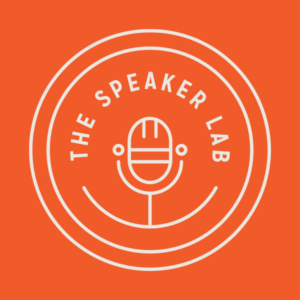
Explore Related Resources
Learn How You Could Get Your First (Or Next) Paid Speaking Gig In 90 Days or Less
We receive thousands of applications every day, but we only work with the top 5% of speakers .
Book a call with our team to get started — you’ll learn why the vast majority of our students get a paid speaking gig within 90 days of finishing our program .
If you’re ready to control your schedule, grow your income, and make an impact in the world – it’s time to take the first step. Book a FREE consulting call and let’s get you Booked and Paid to Speak ® .
About The Speaker Lab
We teach speakers how to consistently get booked and paid to speak. Since 2015, we’ve helped thousands of speakers find clarity, confidence, and a clear path to make an impact.
Get Started
Let's connect.
Copyright ©2023 The Speaker Lab. All rights reserved.

Academic Conference Presentations
A Step-by-Step Guide
- © 2022
- Mark R. Freiermuth 0
Gunma Prefectural Women’s University, Tamamura-machi, Japan
You can also search for this author in PubMed Google Scholar
- Takes the presenter on a journey from initial idea to conference presentation
- Addresses topics such as abstract writing, choosing a conference, posters and online versus face-to-face presentations
- Based on the author's own experiences
2102 Accesses
25 Altmetric
This is a preview of subscription content, log in via an institution to check access.
Access this book
- Available as EPUB and PDF
- Read on any device
- Instant download
- Own it forever
- Durable hardcover edition
- Dispatched in 3 to 5 business days
- Free shipping worldwide - see info
Tax calculation will be finalised at checkout
Other ways to access
Licence this eBook for your library
Institutional subscriptions
About this book
This book provides a step-by-step journey to giving a successful academic conference presentation, taking readers through all of the potential steps along the way—from the initial idea and the abstract submission all the way up to the presentation itself. Drawing on the author's own experiences, the book highlights good and bad practices while explaining each introduced feature in a very accessible style. It provides tips on a wide range of issues such as writing up an abstract, choosing the right conference, negotiating group presentations, giving a poster presentation, what to include in a good presentation, conference proceedings and presenting at virtual or hybrid events. This book will be of particular interest to graduate students, early-career researchers and non-native speakers of English, as well as students and scholars who are interested in English for Academic Purposes, Applied Linguistics, Communication Studies and generally speaking, most of the Social Sciences. With that said, because of the book’s theme, many of the principles included within will appeal to broad spectrum of academic disciplines.
Similar content being viewed by others

Presenting Thesis in Conferences: Oral and Poster Presentation

- English for Academic Purposes
- public speaking
- research presentation
- academic skills
- conferences
- poster presentations
Table of contents (9 chapters)
Front matter, next up on stage….
Mark R. Freiermuth
Conferences: Choose Wisely Grasshopper
Getting started: the precise abstract, after the excitement fades: preparing for the presentation, tea for two or more: the group presentation, conferences: live and in-person, ghosts in the machine: the virtual presentation, the seven deadly sins: what not to do, the top five, back matter.
-Sarah Mercer , Professor for Foreign Language Teaching and the Head of the ELT Research and Methodology Department, University of Graz, Austria
Authors and Affiliations
About the author.
Mark R. Freiermuth is Professor of Applied Linguistics at Gunma Prefectural Women's University, Japan.
Bibliographic Information
Book Title : Academic Conference Presentations
Book Subtitle : A Step-by-Step Guide
Authors : Mark R. Freiermuth
DOI : https://doi.org/10.1007/978-3-031-21124-9
Publisher : Palgrave Macmillan Cham
eBook Packages : Social Sciences , Social Sciences (R0)
Copyright Information : The Editor(s) (if applicable) and The Author(s), under exclusive license to Springer Nature Switzerland AG 2022
Hardcover ISBN : 978-3-031-21123-2 Published: 05 January 2023
eBook ISBN : 978-3-031-21124-9 Published: 04 January 2023
Edition Number : 1
Number of Pages : VII, 159
Number of Illustrations : 45 b/w illustrations
Topics : Applied Linguistics , Research Skills , Career Skills , Sociology of Education
- Publish with us
Policies and ethics
- Find a journal
- Track your research
- Career Blog
Presentation Skills for Career Success: Examples and Tips

As an expert in both writing and subject matter, I understand the importance of effective presentation skills. From delivering a sales pitch to making a dynamic presentation at a conference, presentation skills are an essential aspect of career success.
Definition of Presentation Skills
Presentation skills refer to the ability to effectively and persuasively communicate information to an audience. This involves several different components, including speaking clearly and confidently, engaging with the audience, and using visual aids to illustrate key points.
Importance of Presentation Skills for Career Success
Strong presentation skills can make all the difference in achieving success in your career. Whether you’re pitching an important idea to investors or delivering a report to your team, being able to communicate your message clearly and effectively is critical. Poor presentation skills can undermine a person’s credibility and ultimately hinder their ability to succeed.
Understanding Your Target Audience
When preparing a presentation, it is crucial to understand your target audience. Without knowing who will be sitting in the audience, it can be challenging to effectively communicate your message. To ensure a successful presentation, you need to:
A. Identifying Your Audience
The first step is to identify your audience. Who are you presenting to? Are they co-workers, executives or customers? What is their demographic? What is their level of knowledge about your topic? Understanding your audience’s characteristics will allow you to personalize the presentation and make it more relatable.
B. Knowing Your Audience’s Expectations
After identifying your audience, the next step is to understand their expectations. What are they hoping to learn from your presentation? Are they looking for specific information, or are they coming in with no prior knowledge? By understanding what your audience expects, you can tailor your message accordingly.
C. Tailoring Your Presentation to Your Audience
Now that you understand who your audience is and what they expect to gain from your presentation, the final step is to tailor your presentation to meet their needs. This means adjusting the way you present information, including visuals and language, to ensure that the message resonates with them.
For example, if you’re presenting to a group of executives, you’ll want to use language that speaks to their level of knowledge and experience. On the other hand, if you’re presenting to a group of new employees, you’ll want to simplify your language and provide more background information.
By customizing your presentation to your audience, you will increase their engagement and enhance their understanding of the topic. This will result in a more successful presentation overall.
Understanding your target audience is crucial to delivering a successful presentation. By identifying your audience, knowing their expectations, and tailoring your message to their needs, you can create a presentation that resonates with your audience and delivers the message effectively.
Creating an Effective Presentation
Creating an effective presentation can be a daunting task, but it is necessary for career success. An effective presentation can be the key to closing a business deal, securing new clients, or impressing your bosses.
To make sure your presentation is effective, there are five key steps you must take: defining your objectives, developing a strong message, structuring your presentation, using visual aids and emotional appeals, and rehearsing your presentation.
A. Defining Your Objectives
Before you start creating your presentation, it is important to define your objectives. Ask yourself: What am I trying to achieve with this presentation? Who is my audience? What message do I want to convey? Once you have answered these questions, you can start creating your presentation with a clear goal in mind.
B. Developing a Strong Message
To create a strong message, you need to think about what your audience needs to hear from you. Your message should be clear, concise, and relevant to your audience. Use language and visuals that are easy to understand and memorable.
C. Structuring Your Presentation
A well-structured presentation is key to keeping your audience engaged. Start with a strong opening that grabs their attention, then move into the main body of your presentation where you can delve deeper into your message using clear examples and evidence. Finally, end with a strong closing that leaves a lasting impression.
D. Using Visual Aids and Emotional Appeals
Using visual aids and emotional appeals can make your presentation more engaging and memorable. Visual aids can help illustrate your message and make it easier to understand. Emotional appeals can help you connect with your audience on a more personal level and make your presentation more memorable.
E. Rehearsing Your Presentation
The final step in creating an effective presentation is rehearsing. Practice your presentation multiple times. This will help you feel more confident and prepared when it is time to present. It will also help you identify areas that need improvement.
Creating an effective presentation is an important skill for career success. By defining your objectives, developing a strong message, structuring your presentation, using visual aids and emotional appeals, and rehearsing your presentation, you can deliver a presentation that is engaging, memorable, and effective.
Presentation Delivery Skills
Effective presentation delivery is a crucial aspect for professional success. The way you present yourself, the ideas, and the subject matter can significantly impact the audience’s perception of you and the content you provide. This section discusses some important presentation delivery skills that can help you in your career.
A. Opening and Closing Strategies
The opening and closing of your presentation should be attention-grabbing and leave a lasting impression. Use a powerful opening statement, a thought-provoking question, or an engaging story that relates to the topic. Similarly, end the presentation with a summarized version of the crucial points, a call to action, or an inspiring quote. These strategies can help the audience remember your presentation long after it’s over.
B. Voice and Body Language
Your voice and body language play an essential role in conveying your message effectively. Speak clearly and confidently, and avoid filler words such as “umm” and “ahh.” Use gestures and body movements that complement your words and help emphasize your message.
C. Eye Contact and Interpersonal Communication
Maintaining eye contact with your audience is a powerful way to build rapport and influence. It shows that you are confident and interested in engaging with them. Along with eye contact, focus on interpersonal communication skills, such as active listening, empathy, and adapting your communication style to resonate with the audience.
D. Managing Nervousness
It’s natural to feel nervous before a presentation, but it can negatively affect your performance. Be prepared by rehearsing beforehand, arriving early, and taking deep breaths. Use positive self-talk, affirmations, and visualization techniques to calm your nerves and build confidence.
E. Tips for Virtual and Remote Presentations
Virtual and remote presentations require additional considerations to ensure a successful delivery. Ensure that your technology works correctly, keep your slides simple and easy to read, and avoid multitasking during the presentation. Practice your presentation in front of a camera to get used to the virtual interface.
Mastering presentation delivery skills is an ongoing process of refinement and practice. Paying attention to your opening and closing strategies, voice and body language, eye contact and interpersonal communication, managing nervousness, and tips for virtual and remote presentations can make a significant difference in the impact of your presentation on the audience. By honing these skills, you can enhance your professional brand and take your career to greater heights.
Engaging Your Audience
Engaging your audience is crucial to delivering an effective presentation. The goal is to keep their attention and leave a lasting impression. In this section, we’ll cover four key techniques to engage your audience: storytelling, audience participation, Q&A sessions, and handling difficult audience members.
A. Using Storytelling Techniques
Stories have the power to captivate an audience and make your presentation memorable. Consider opening with a personal anecdote or sharing a relevant story that connects with your topic. Use descriptive language and vivid details to make your story come alive.
Throughout your presentation, sprinkle in relevant stories and examples to help illustrate your points. If you have data or statistics to share, try presenting them in the form of a story. This will make them more interesting and easier to remember.
B. Encouraging Audience Participation
Encouraging audience participation can help to create an interactive and engaging presentation. There are many ways to do this, such as posing thought-provoking questions or inviting volunteers for a demonstration.
Another way to encourage participation is to use interactive tools, such as live polling or Q&A features. These tools allow the audience to engage with you in real-time and can provide valuable insights into their thoughts and opinions.
C. Asking Questions and Managing Q&A Sessions
Asking questions can be an effective way to keep your audience engaged and test their understanding of the material. Be sure to pause at key points in your presentation and ask relevant questions to keep the audience on their toes.
During the Q&A session, it’s important to manage the flow of questions and keep things organized. Encourage people to raise their hands and wait until they are called upon before speaking. If you’re receiving multiple questions at once, try repeating them back to ensure everyone can hear and understand.
D. Tips for Handling Difficult Audience Members
Dealing with difficult audience members can be a challenge, but it’s important to remain professional and respectful. Here are a few tips for handling different types of difficult audience members:
- The interrupter: Politely ask them to wait until you’ve finished speaking before asking their question.
- The skeptic: Acknowledge their concerns and be prepared with evidence or examples to support your position.
- The distractor: Politely redirect their attention back to the topic at hand and keep the presentation moving forward.
Engaging your audience is crucial to delivering an effective presentation. By using storytelling techniques, encouraging audience participation, asking questions, and handling difficult audience members, you can create a memorable and impactful presentation that resonates with your audience.
Presentation Software and Tools
In today’s professional environment, creating and delivering powerful presentations is a requirement for success. Fortunately, there are many tools and technologies available to help presenters bring their ideas to life. This section explores some of the most popular software and techniques for creating and delivering engaging presentations.
A. Overview of Popular Presentation Software
There are many presentation software tools available, but some are more widely used than others. The most popular presentation software tools include:
- Microsoft PowerPoint – A versatile software tool that allows users to create dynamic presentations with a range of text, graphics, and multimedia features.
- Apple Keynote – An alternative to PowerPoint that includes many of the same features and is optimized for use on Apple devices.
- Google Slides – A cloud-based alternative to PowerPoint that allows users to create and share presentations online.
- Prezi – A non-linear presentation tool that uses a canvas rather than slides to tell a story.
B. Techniques for Using PowerPoint Effectively
PowerPoint is a widely used presentation software tool, but there are some key techniques that can be used to present more effectively. Some of these techniques include:
- Simplicity – Avoid cluttering slides with too much content. Keep text to a minimum and use images and graphics to emphasize key points.
- Consistency – Use a consistent font, color scheme, and style throughout the presentation to create a professional-looking deck.
- Storytelling – Use a clear narrative to guide the audience through the presentation and keep them engaged.
- Animation – Use animations and other visual effects sparingly to emphasize key points and keep the audience’s attention.
C. Tips for Creating Engaging Multimedia
Engaging multimedia elements can help bring a presentation to life and make it more memorable. Some tips for creating engaging multimedia include:
- Images – Use high-quality images that are relevant to the topic and can help illustrate key points.
- Graphs and charts – Use graphs and charts to display data in a clear and concise way.
- Video – Include relevant video clips to emphasize key points and break up the presentation.
- Interactive elements – Use interactive elements such as quizzes or polls to engage the audience and encourage participation.
D. Other Presentation Tools and Technologies
In addition to the software tools and techniques mentioned above, there are many other presentation tools and technologies that can be used to make a presentation more engaging. Some of these include:
- Virtual and augmented reality – Virtual and augmented reality can be used to create immersive experiences for the audience and help them better understand complex concepts.
- Audience response systems – Audience response systems allow the audience to participate in the presentation by responding to questions or providing feedback.
- Live streaming – Live streaming allows the presentation to be broadcast online in real-time, allowing a wider audience to view the presentation.
Presentation Skills in Professional Settings
Delivering effective presentations is a crucial skill for career success. In professional settings, presentations are an opportunity to showcase expertise, make persuasive arguments, and establish credibility. Below are some common types of presentations and tips for delivering them successfully.
A. Interview Presentations
Job interviews often include a presentation component, where candidates are asked to deliver a pitch about themselves and their qualifications. To make a strong impression in an interview presentation, consider the following tips:
- Research the company and its values to tailor your message accordingly.
- Practice your presentation in advance and anticipate potential questions or points of discussion.
- Use storytelling techniques to make your presentation engaging and memorable.
- Be confident, enthusiastic, and energetic to convey your passion for the job and demonstrate your communication skills.
B. Business Proposals
In business settings, proposals are often used to pitch new ideas, products, or services to potential clients or stakeholders. To create a persuasive proposal presentation, consider the following tips:
- Understand the needs and interests of your audience to tailor your proposal accordingly.
- Use a clear and concise format that highlights the key benefits and value of your proposal.
- Anticipate potential objections or concerns and address them proactively in your presentation.
- Use visual aids or demonstrations to support your proposal and make it more engaging.
C. Sales Presentations
Sales presentations are a common way to promote products, services, or solutions to potential customers. To make an effective sales presentation, consider the following tips:
- Focus on the needs and pain points of your target audience, and position your product as a solution.
- Use storytelling techniques or case studies to illustrate the benefits and value of your product.
- Be confident and assertive, but also empathetic and responsive to your audience’s feedback and questions.
- Use visual aids or demos to showcase your product in action and make it more tangible.
D. Conference Presentations
Conference presentations are a chance to share research, insights, or expertise with a broader audience. To make a compelling conference presentation, consider the following tips:
- Identify the main message or takeaway of your presentation and structure your content accordingly.
- Use a clear and engaging narrative or story arc to make your presentation more cohesive and memorable.
- Use visual aids or multimedia to support your main points and make your presentation more engaging.
- Rehearse your delivery and timing to ensure that you stay within the allotted time and maintain a good pace.
E. Other Professional Settings
There are many other professional settings where presentation skills can be valuable, such as meetings, training sessions, or public speaking events. To deliver effective presentations in these settings, consider the following tips:
- Understand the purpose and scope of your presentation, and tailor your content and delivery accordingly.
- Use visual aids or other interactive elements to support your presentation and make it more engaging.
- Anticipate potential objections or questions and prepare to respond effectively.
Excellence in Public Speaking and Presentation Skills
Public speaking and presentation skills play a significant role in career success. To achieve excellence in these skills, one needs to develop strategies for growth, continuously work on improving them, and stay current with future trends.
A. Strategies for Growth
Developing strategies for growth involves setting goals and working towards achieving them. Here are some tips for building a strong foundation:
- Identify your audience – Know who you are presenting to and what their goals and interests are.
- Craft a compelling message – Create a clear message that resonates with your audience.
- Practice regularly – Practice speaking and presenting regularly, either in front of a mirror or in front of others.
- Seek feedback – Seek feedback from colleagues or mentors to identify areas for improvement.
B. Tips for Continuous Improvement
Once you have established good strategies, the next step to excellence is to continually work on improving your skills. Here are some tips for continuous improvement:
- Attend workshops or training sessions – Attend workshops or training sessions on public speaking and presentation skills to learn new techniques and best practices.
- Take advantage of technology – Utilize technology to enhance your presentations, such as incorporating multimedia or using presentation software.
- Analyze successful presentations – Analyze successful presentations from others and learn from their techniques.
- Embrace constructive criticism – Listen to feedback from audience members or colleagues and use it to make improvements.
C. Future Trends in Presentation Skills
As technology continues to advance, there are several future trends in presentation skills that professionals should stay current with, such as:
- Interactive presentations – Interactive presentations engage the audience through the use of technology, such as live polling or virtual reality.
- Storytelling – Storytelling is becoming increasingly popular in presentations, as it allows the presenter to connect with the audience on a more personal level.
- Personalization – Personalization involves tailoring the presentation to the individual needs of the audience, such as incorporating their names or organization’s branding.
- Artificial Intelligence – Artificial intelligence is being used to analyze and provide feedback on presentation skills, allowing presenters to make more data-driven improvements.
To achieve excellence in public speaking and presentation skills, individuals need to invest in building a strong foundation, continuously work on improving their skills, and stay current with future trends. By doing so, professionals can enhance their career success and influence their audience to take meaningful action.
Examples of Effective Presentations
A. sample presentation outlines.
Sample presentation outlines are included to give readers an idea of how presentations can be structured. These outlines may include the following sections:
- Introduction
- Main Points
- Supporting Details
- Call to Action
By following these outlines, presenters can organize their ideas and deliver a clear and concise message to their audience.
B. Video Examples of Effective Presentations
Video examples of effective presentations allow readers to see real-life examples of presenters who excel at delivering engaging and informative presentations. These videos may feature live presentations, TED talks, or business pitches. By watching these videos, readers can learn from the delivery techniques, body language, and visual aids used by the presenters.
C. Analysis of What Makes Effective Presentations
In this section, the article delves deeper into what makes a presentation effective. The analysis may cover topics such as:
- Audience Engagement: An effective presentation should keep the audience engaged and interested by using interactive tools, storytelling techniques, and humor.
- Relevance: The presentation should be relevant and deliver useful information that can benefit the audience.
- Structure: Presentations should follow a logical structure and should be easy to follow, with clear transitions between topics.
- Delivery: An effective presentation requires good vocal and nonverbal communication skills, such as eye contact, posture, and tone of voice.
- Visual Aids: The use of visual aids, such as slides, videos, and infographics, can enhance the message and increase engagement.
By understanding these key elements, individuals can improve their presentation skills and build their confidence when presenting in front of an audience.
Related Articles
- Preparing for New Job Orientation: Tips and Tricks
- Event Coordinator Resume: Examples and Tips for 2023
- 22 Best Reasons for Job Exit: A Pro’s Guide for 2023
- 50 Common Interview Mistakes to Avoid in 2023
- Energy Manager Job Description, Duties, & Opportunities
Rate this article
0 / 5. Reviews: 0
More from ResumeHead


- Event Website Publish a modern and mobile friendly event website.
- Registration & Payments Collect registrations & online payments for your event.
- Abstract Management Collect and manage all your abstract submissions.
- Peer Reviews Easily distribute and manage your peer reviews.
- Conference Program Effortlessly build & publish your event program.
- Virtual Poster Sessions Host engaging virtual poster sessions.
- Customer Success Stories
- Wall of Love ❤️
15 Best Tips for Presenting at a Conference

Published on 18 Nov 2021
Presenting at a conference is an important part of a researcher’s life: it allows you to share all the work you’ve been doing for months or years.
At the same time, it also exposes some intimate aspects of yourself to the outside world, like your thought process, your level of knowledge on a topic, or your ability to structure ideas.
I personally found myself frightened about presenting on multiple occasions. I remember my first seminar at the beginning of my master's degree in biochemistry. Coming from a bachelor in ecology, I felt like an imposter in the new department and was scared others would judge my level of knowledge or the quality of my presentation. Of course, these were only negative projections I was making in my mind, but they reflect the stressful vibe one can feel when preparing to give a talk.
On the positive side, a successful presentation leads to a better understanding of your work by the audience. This generates insightful discussions that can provide ideas about what the next steps of your research should be or clues to solve roadblocks.
It also leaves a good impression on the work done at your lab which can attract new collaborators. Also, getting your work noticed, especially at large conferences, can lead to your publications being more cited. If you’re a student, you can be rewarded with a presentation prize that will boost your curriculum when applying for scholarships.
Above all, learning to communicate, especially to the general public, is a valued skill.
So how can you nail your next presentation? There are no magic pills, but in this article, we’ll share some important tips to help you deliver the best presentation at your next event.
1- Do not start by working on your slides
It is very easy to get lost in your slides if you do not plan first. That is why you need to outline your key ideas and the order in which you want to present them BEFORE jumping into building slides in PowerPoint (or another platform).
You can start with bullet points, a flowchart, or something similar. The crucial part here is to make sure you are laying out the information and not just throwing it on the slides as they come to your mind. It is easy to get lost if you just keep adding slide after slide without any concern for length and/or connections between the information.
You can use sticky notes, paper planners, online flowchart generators, or other tools to help you in the layout phase.
Then, equally important to the key ideas is how you tie all of that content together. You should plan a logical transition and a progression between each idea. This will help you define a common thread and establish the flow of your presentation. Ultimately, it will help the audience capture the message you’re sharing.
In summary, knowing what you want to talk about is key. So before working on your slide deck and your handouts, develop this layout that highlights and connects the information you want to share.
2- Have a duration in mind
You’ll have a limited amount of time to get your message across, so you have to plan your presentation around that time frame. If you have 15 minutes to present your work, plan a presentation that lasts slightly less than that time limit.
Another tip for presentations is to use a timer while presenting to ensure you don’t go overtime.
A lot of people do not plan their time wisely and end up skipping slides in their presentation or going overtime. And guess what? Your audience knows when you skip content because you ran out of time. It comes off as unprofessional and may affect the way people see your work. So take your time preparing your presentation around your time constraints.
If your initial mockup is longer than what it should be, start by analyzing what information could be deleted or ways to get the information across using fewer words.
It’s often just a matter of focusing on the details that matter the most. Don’t explain all the details of the methodology or the results if it doesn’t add to the story. Keep that for smaller group discussions or during the Q&A period.

3- Use visuals to your advantage
Visuals are a must in any presentation. Whether it is an image, a chart, a graphic, or a video, visuals help with interpretation and can be an effective way to get your message across or grab the audience's attention.
Just because you’re presenting at an academic conference, it doesn’t mean you can’t use images, videos, or even gifs to help get the message across.
Most people deal better with visuals than words , especially when the information is heavy with data and numbers. But even with visuals, remember to keep it simple. The whole purpose of using visual aids is to help your audience understand the message and not to confuse them with too much information.
If you’re presenting figures or graphs, remember to use the pointer to highlight the key points while you explain your slide. This is something that is easy to forget when the stress level is high, but it can be a good way to stay grounded and focused on the presentation.
4- Know your audience
In any academic conference, knowing your audience puts you one step closer to delivering an effective presentation. Do your research when starting to prepare your presentation.
Skimming the proceedings of past editions of a conference can reveal past participant lists and their profile. Different conferences have different proportions of undergraduate and graduate students, postdocs, or principal investigators. Knowing the proportions of each category can indicate the level of knowledge on certain topics and if you need to spend time explaining certain areas so they understand the rest of the presentation or not.
If you find the abstracts, the Powerpoints, or the recordings of talks from previous editions, it can also help you adjust the depth in which you can go when explaining certain concepts.
Do not fall under the trap of assuming your audience knows nothing about your research subject. If they are at your research conference, it is most likely that they possess knowledge of (and interest in) what you are talking about. So, skip the basics that everyone knows if you feel you can.
Use jargon that is easily understood by the community at large and make sure you define less common abbreviations.
Knowing your audience is not always an easy task. If you’re not sure if your audience is familiar with a specific topic, don't be afraid to ask them! It will make everyone feel more involved and you will get their attention for the rest of the presentation. The bottom line, adapt your message to the audience.
5- Practice, practice, and practice again
No one should know your presentation better than you. When preparing for a particular conference, rehearse your talking points out loud and make sure you feel 100% comfortable with the information laid out on your slides.
In addition, make sure the key ideas and the logical transition between them are crystal clear. One of the worst things that can happen to presenters is getting lost in their own presentation.
You should practice your speech out loud to become familiar with the words as this will help your tone and confidence. When you sound confident, people are keener to listen to what you are saying.
One additional common but useful tip is to record yourself while practicing. It will help you know where you're lacking and what needs to be improved.
For example, some people tend to talk really fast or jump on sentences while others tend to ignore full stops. No matter what the issues are, recording yourself is a great tactic to find and address them.

6- Present it to a friend or colleague
Outside of practicing it out loud on your own, practice it in front of your colleagues. It will give you an experience that will resemble the real presentation the most.
While you present, notice their facial expressions. They can reveal parts of your presentation that are unclear. Tell them not to interrupt you during the presentation, but tell them to note down their suggestions or questions for the end. Make sure to use a timer to measure how you’re doing on time.
Some people like to present to someone completely detached from the topic. The idea is that if people who are not completely familiar with the subject can follow your presentation, people in the field should be able to easily follow it as well.
No matter which option you choose, this exercise will help if you have difficulties speaking in public. Do not be afraid of doing these multiple times before your presentation and always ask for honest feedback. The more you practice, the more confident and more fluent you will be.
During my Ph.D., we often presented to our lab members and went through a Q&A section. Not only was it a good opportunity to practice the presenting skills, but it was also a moment to discuss specific aspects and prepare for potential questions. I remember in some instances, the feedback led to reshuffling the ideas completely in a way that made more sense.
7- Appearances matter
Even though people are coming to your presentation because they are interested in your research, appearances matter. The way you speak, how you interact with your audience, and even what you wear, make an impact. Make sure you wear comfortable clothes.
If you’re presenting at an online event, make sure the lighting comes from in front of you and not from behind or it will make your face appear darker. Not seeing a presenter clearly can distract the audience and decrease attention.
Also make sure there isn’t anything distracting in the background, like television or someone walking. The best background is usually solid-colored walls.
8- Sleep and eat well before the event
Get a good night of sleep the night before the event. You will feel well-rested and ready to tackle the presentation. It can be tempting to practice your slides and go over your presentation late at night, but it is sometimes better to get a good night's sleep.
In addition, make sure to eat well. You don’t want to feel dizzy or be occupied thinking about food when you should be thinking about the presentation.
Lastly, have a bottle of water close to you while you’re presenting. That will allow you to take pauses when needed and give your audience time to absorb the information after you jump into the next slide or argument.
9- Have a backup
If you have your presentation stored on a hard drive, make sure to have an extra copy on the cloud and vice-versa. Hard drives can break and technical difficulties can occur with cloud storage, so always have a backup just in case.
Depending on the guidelines of the event, you can also send a copy of your presentation to the organizer and/or colleague. Send yourself a copy of the presentation by email as well.
A lot of people also have a paper copy of their presentation. That’s the last case alternative but also nice to have. If you are in a poster presentation, this may be harder to achieve.
If you have videos in your presentation, check out if the platform and/or venue can display that, especially the audio (if it’s important). Not all software or places have the necessary (or compatible) technology to display your presentation as they should.

10- Use body language
Body language has an essential role in presentations, especially online ones. Make sure you use body language the right way, otherwise it can be distracting for your audience. That includes fidgeting, repeatedly fixing your hair or clothes, among other things.
In academic conferences, the presentations are usually heavy on the information and data side, so it is important that presenters take advantage of tone of voice, gestures, and other body language resources to get their point across.
It is best to keep eye contact with people in the audience. This way, they will feel you are talking TO them and not AT them. But make sure to alternate and not stare at one single person throughout the whole presentation.
Be aware of your posture and if you have any notes, make sure to either hold them or have them at eyesight. It is common to have notecards during a conference talk, but it is important to know your presentation and not depend on the notes.
11- Encourage your audience to interact with you
A big part of your presentation is for you to talk about your research. People are there to listen to you and absorb information, but they are also there to make the most out of the experience, and that includes engaging and asking questions.
Prepare yourself to answer questions from the audience. It is impossible to cover everything in a short presentation, so try to cover as much as possible and if there are questions you think will arise from the audience, prepare to answer them.
Depending on the type of presentation and what’s expected, you can keep questions for the end or allow questions during the presentation.
If there is a question that you do not have the answer to, it’s ok to say it. It’s better to offer to look more into it and get back to them rather than trying to improvise an answer. Provide your contact information in the final slide or at the end of your presentation. Some participants can reach out to you if they have any questions, suggestions, or opportunities that could be beneficial to you.
If you are giving an online presentation, invite participants to ask a question through the conference platform or website. For example, Fourwaves has a built-in Q&A section on each presentation page where presenters and participants can interact.

12- Structure your presentation and let your audience know
Let your audience know what you will be covering in your presentation. Have a clear outline of the topics and make sure to have this journey clear so the audience understands where you are taking them.
You can start the presentation by highlighting the key messages, but don’t forget to have a summary at the end (your conclusion), where you reiterate the main points of your presentation.
13- Pay attention to design
Adhere to the following basic design principles when building your slides. Avoid distracting colors and mixing more than 2 colors in each slide. If you use a light background, you should use a dark font and vice-versa. Make sure the font size is also big enough and that you are not stuffing too much information into a slide.
A good rule of thumb for your slides is to have about 5 bullet points on each one and give enough time for people to read through them if they need to. Most of the information should be coming out of your mouth and not described in the slides. The slides are just a summary (the bullet points) of what you will cover.
If you are adding visuals, make sure they are big enough so people can see them and they are not covering any information.
14- Take other presentations as an example
You have probably been part of dozens and dozens of presentations in a lifetime. Is there something you liked a lot in those or something you hated? If yes, write it down. If it is positive, strive to replicate that in your presentation. If it is negative, discard it.
If you are taking part in an annual event, you may be able to access presentations from the years before and draw conclusions from there. You can also look for similar poster presentations or templates and get inspiration from those.
Keep in mind that every person has a presentation style. Learn the basic guidelines and find what works best for you.
15- Rely on storytelling
Storytelling is relying on stories (narrative) to talk about something (e.g. personal anecdotes, metaphors, comparisons, etc.). People rely on stories for mnemonic purposes and most of the time, it is easier to remember a story or an analogy than it is to remember a specific situation.
No matter what the topic is, analogies make it easier for people to understand facts. Whenever possible, try to use a metaphor or a comparison
Bonus tip - Remember to stop and breathe during your presentation
It’s normal to feel stressed even if you’re super well prepared and that you know your topic inside out.
Make sure to take the time to pause in between slides and to take a good slow deep breath. It will help you stay focused throughout the presentation.
Practice this during your rehearsals. Not talking for 3-4 seconds can seem long for you, but your audience will appreciate it and it will help you feel calmer.
At the core, preparing for a conference presentation is no different than preparing for any type of public speaking assignment. You need to understand the topic very well, research and practice what you are going to say, and know your audience, among other things.
Most of all, remember: no one is born with great presentation skills, so give yourself room to improve.
5 Best Event Registration Platforms for Your Next Conference
By having one software to organize registrations and submissions, a pediatric health center runs aro...
5 Essential Conference Apps for Your Event
In today’s digital age, the success of any conference hinges not just on the content and speakers bu...

Presentation skills you need for conferences

Did you know that most of the added value of your events comes from the quality of the presentations?
The success of your conference events is directly a result of the effort that you devote. The machinery of conference organisation is well oiled in Brussels. Your team are well versed in coordinating the venue, logistics and marketing to make your events memorable. These are the presentation skills you need for conferences.

At Communicating Europe+ we train teams and individuals to prepare and deliver clear, engaging presentations with confidence and clarity.
Our Presentation Skills training includes:
- Public speaking – use your voice effectively: warming up exercises and vocal techniques used by actors
- Body language – posture, facial gestures and what to do with your hands
- How to frame clear and meaningful messages
- Easy tips to design clear PowerPoint slides that help your performance
- Techniques to manage nerves – on the day
Video analysis and feedback
You learn by doing. We film you and give you feedback to help you present with clarity and confidence. If these are the presentation skills you need for conferences then call us.
Communicating Europe+ builds the confidence of hundreds of people from a wide variety of Brussels based associations, institutions and companies.
If you would like to rehearse and refresh your presentations contact us at [email protected]
Let’s see what we can do to help you.
Proceedings of the 20th International Conference of the Asia Association of Computer-Assisted Language Learning (AsiaCALL 2023)
Using Video-based Learning to Improve Presentation Skills for fourth -year English Majors at Hanoi Open University
The purpose of the study is to investigate the fourth-year English majors’ perceptions of using video-based learning and their practices in learning presentation skills at the Faculty of English, Hanoi Open University. A questionnaire survey was employed to gather the data for the study. The structured questionnaire was administered to 261 participants from class K27. The survey results revealed that almost all students were aware of the importance of presentation skills and video-based learning. The findings also showed the problems faced by the fourth-year students in learning Presentation Skills. Most students agreed they were not confident because of the anxiety of making mistakes when giving presentations. In addition, the results indicated that video-based learning would bring several benefits to improve teaching and learning processes. As can be seen from the quantitative data, the students’ opinions about using video-based learning to enhance presentation skills were positive. As a result, some suggestions were provided in this study to help the teachers apply video-based learning in their lectures and motivate the students to improve their learner autonomy effectively.
Download article (PDF)
Cite this article
👀 Turn any prompt into captivating visuals in seconds with our AI-powered design generator ✨ Try Piktochart AI!
- Piktochart Visual
- Video Editor
- AI Design Generator
- Infographic Maker
- Banner Maker
- Brochure Maker
- Diagram Maker
- Flowchart Maker
- Flyer Maker
- Graph Maker
- Invitation Maker
- Pitch Deck Creator
- Poster Maker
- Presentation Maker
- Report Maker
- Resume Maker
- Social Media Graphic Maker
- Timeline Maker
- Venn Diagram Maker
- Screen Recorder
- Social Media Video Maker
- Video Cropper
- Video to Text Converter
- Video Views Calculator
- AI Brochure Maker
- AI Document Generator
- AI Flyer Generator
- AI Image Generator
- AI Infographic
- AI Instagram Post Generator
- AI Newsletter Generator
- AI Report Generator
- AI Timeline Generator
- For Communications
- For Education
- For eLearning
- For Financial Services
- For Healthcare
- For Human Resources
- For Marketing
- For Nonprofits
- Brochure Templates
- Flyer Templates
- Infographic Templates
- Newsletter Templates
- Presentation Templates
- Resume Templates
- Business Infographics
- Business Proposals
- Education Templates
- Health Posters
- HR Templates
- Sales Presentations
- Community Template
- Explore all free templates on Piktochart
- Course: What is Visual Storytelling?
- The Business Storyteller Podcast
- User Stories
- Video Tutorials
- Need help? Check out our Help Center
- Earn money as a Piktochart Affiliate Partner
- Compare prices and features across Free, Pro, and Enterprise plans.
- For professionals and small teams looking for better brand management.
- For organizations seeking enterprise-grade onboarding, support, and SSO.
- Discounted plan for students, teachers, and education staff.
- Great causes deserve great pricing. Registered nonprofits pay less.
AI-Powered Poster Generator
With the Piktochart AI poster generator, you can turn any prompt into a gorgeous poster in seconds. No design skills? No problem. Just tweak it as you wish, then share your poster.
The new way of creating posters
Create in a Flash
Prompt to poster in 10 seconds
Say goodbye to complicated design steps. Simply type in your theme and watch as our AI poster maker transforms it into reality.
AI Image Generation
Bring your vision to life
Go stock photos and generate images that are contextualized to your needs with our advanced AI image generator. Put your creativity to the test and generate highly realistic images that make you stand out.
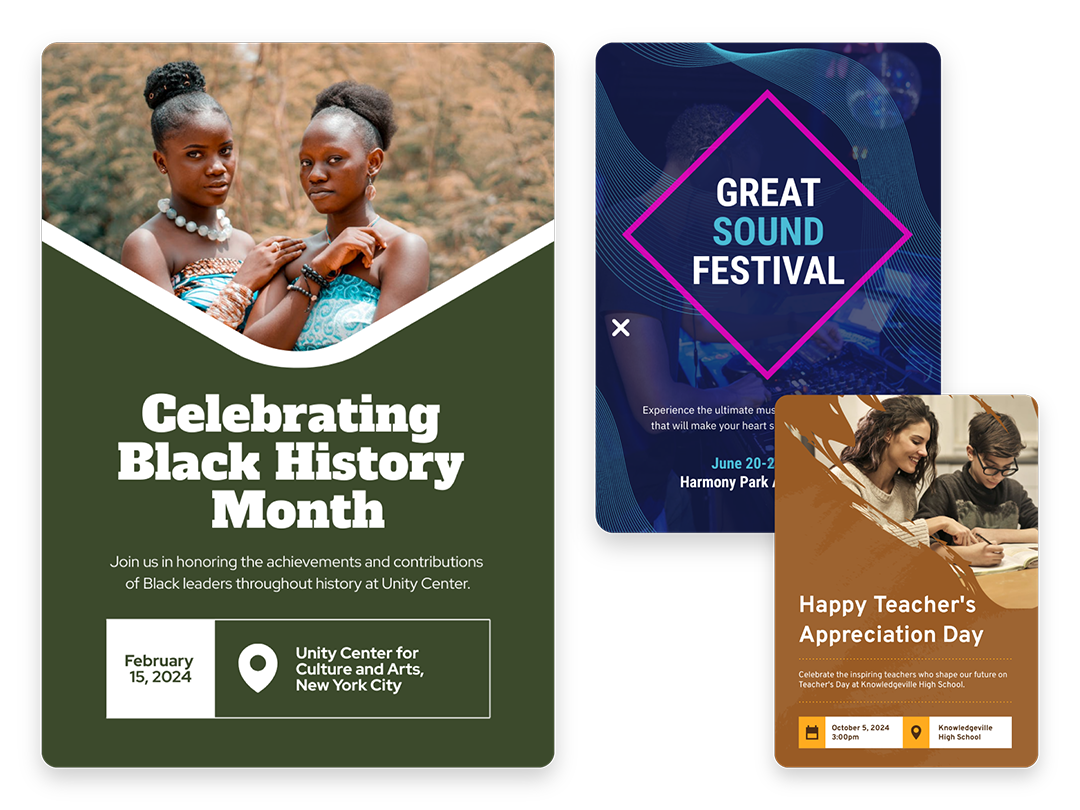
Create Without Limits
Where every idea finds its canvas
For events, marketing, learning, or personal creations, Piktochart AI delivers captivating poster designs for every need. Dive into a universe of impressive imagery tailored to suit any subject.

Create Your Vision
Piktochart starts, you put the finishing touches
Our AI sets the stage with a professionally crafted poster, then passes control to you, allowing you to modify and refine each detail to amplify your visual impact while keeping true to your brand.
Posters created using Piktochart’s AI-powered poster maker
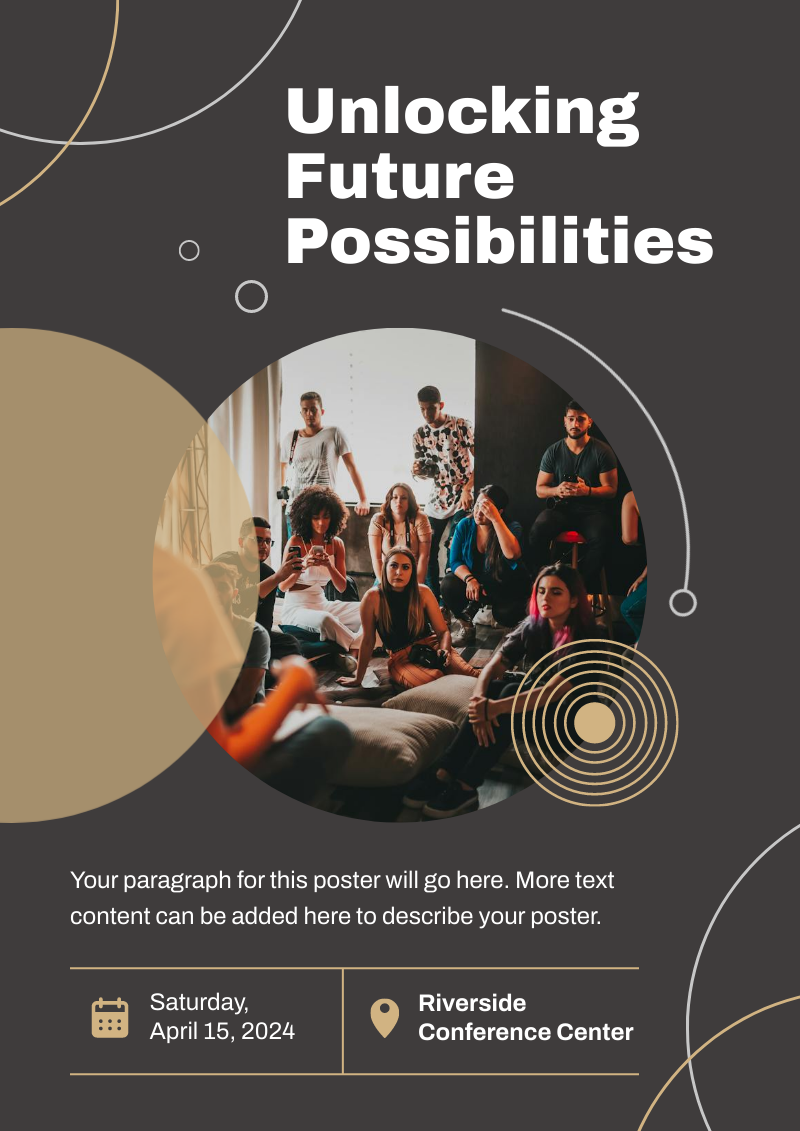
Professionals like you use Piktochart’s free online poster maker to:

- Create eye-catching promotional materials that align with brand identity, ideal for advertising campaigns, product launches, and trade shows.
- Design captivating posters for corporate events, webinars, and conferences.
- Communicate new offers, services, or store openings.

HR & Internal Comms
- Internal announcements, motivational quotes, or event notifications.
- Job advertisements and onboarding materials to attract and welcome new employees.
- Convey important company policies and reminders through clear, engaging posters, ensuring better compliance and awareness.

NGOs and Government Organizations
- Develop impactful posters for awareness drives, fundraising events, and community outreach programs.
- Attract volunteers, highlighting the roles, benefits, and the difference they can make.
- Announce charity events, workshops, and seminars.

- Create informative posters on health topics, wellness tips, and medical advisories.
- Showcase healthcare services, specialist departments, and new medical technologies available at healthcare facilities.
- Display important health and safety protocols within healthcare settings.
How to Make a Digital Poster
1. Define Your Story
Briefly describe (within 120 characters) the purpose behind your poster. Whether it’s for promotion, making an announcement, driving awareness, or sharing health information.
2. Select from Our Varied Poster Designs
Jumpstart your project with our array of ready-to-use poster templates, perfect for shining a spotlight on any subject. After picking your preferred design, you’ll find yourself in our editing suite.
3. Tweak the Design with Piktochart Editor
With your template chosen, hitting the “Edit” button grants you entry into the Piktochart editor. This is your playground to adjust, alter, and align the design to reflect your personal touch and message.
4. Enhance with Visual Elements
Piktochart’s user-friendly drag-and-drop editor makes personalization a breeze. Tap into our rich collection of complimentary photos, icons, illustrations, and text options to craft a poster that stands out. Enhancing and tailoring colors is just a click away with our versatile design tool.
5. Publish and Promote
Once your poster is exactly as you envisioned, it’s time to save and share your work. Export in various formats like JPG, PNG, or PDF, catering to both digital platforms and print materials.
AI-Powered Visualization for Any Topic
What kinds of posters can be generated using this AI tool?
Navigating design elements and finding the right visual style can be daunting. With Piktochart AI, it’s easy to transform data into high-quality posters . Excellence made simple, just for you.
Event posters
Drum up buzz and awareness for an upcoming event. Piktochart AI transform dense data and information into engaging invitational posters for your events.
Advertising posters
Spark emotions that incite action – whether it is to make a purchase, improve brand opinion, donate to a cause, or make a lifestyle change. With Piktochart AI, it’s achievable at the click of a button.
Conference posters
Inform your audience with a glance about an upcoming conference. Whether it’s for a medical conference, marketing conference, or any conferences, Piktochart AI’s user-friendly poster maker helps you catch the attention of your audience effortlessly.
Ready to use AI to design posters like a pro?
Join more than 11 million people who already use Piktochart to create stunning posters.
Is it possible to personalize my poster with my own photos and diagrams?
What’s the limit on poster creation, how do i enhance the quality of my posters, is signing up mandatory to use piktochart, poster resources.

How to Make a Poster in 6 Easy Steps [2023 Guide With Templates]

25 Poster Ideas, Templates, and Tips for Creative Inspiration

Communications
7 Types of Posters and What Makes Them Stand Out
What else can you create with piktochart ai.

IMAGES
VIDEO
COMMENTS
Presentation skills are the abilities and qualities necessary for creating and delivering a compelling presentation that effectively communicates information and ideas. They encompass what you say, how you structure it, and the materials you include to support what you say, such as slides, videos, or images. You'll make presentations at various ...
Read more on Business communication or related topics Power and influence, Presentation skills and Public speaking Carmine Gallo is a Harvard University instructor, keynote speaker, and author of ...
Tip #1: Build a narrative. One memorable way to guarantee presentation success is by writing a story of all the points you desire to cover. This statement is based on the logic behind storytelling and its power to connect with people. Don't waste time memorizing slides or reading your presentation to the audience.
For more than 30 years, the TED conference series has presented enlightening talks that people enjoy watching. In this article, Anderson, TED's curator, shares five keys to great presentations ...
The secret structure of great talks. From the "I have a dream" speech to Steve Jobs' iPhone launch, many great talks have a common structure that helps their message resonate with listeners. In this talk, presentation expert Nancy Duarte shares practical lessons on how to make a powerful call-to-action. 18:00.
This is not surprising. Effective communications skills are a powerful career activator, and most of us are called upon to communicate in some type of formal presentation mode at some point along the way. For instance, you might be asked to brief management on market research results, walk your team through a new process, lay out the new budget ...
Effective conference speakers possess a combination of skills that contribute to engaging and impactful presentations. Here are some essential conference speaker skills: 1. Communication Skills: Clarity: Clearly articulate ideas and concepts, avoiding jargon that might be confusing to the audience.
Think phrases and bullets, not sentences. As an intern or early career professional, chances are that you'll be tasked with making or giving a presentation in the near future. Whether you're ...
Present to Succeed is the largest premium presentation skills conference for business professionals in the world. Each year we gather on our stage some of the best experts in Storytelling, Public Speaking, Presentation Design & Data Viz, and the people behind your favourite presentation tools.
To fully understand the impact these skills have on creating a successful presentation, it's helpful to look at each one individually. Here are six valuable skills you can develop: 1. Active listening. Active listening is an excellent communication skill for any professional to hone.
1. Communication Mastery. Presentation skills are at the forefront of effective communication. It's not just about what you say; it's how you say it. A well-delivered presentation ensures your message is heard and understood, fostering clear and meaningful communication. 2. Professional Credibility.
4. Be Standing. Even though your audience cannot see you, stand when you present. This allows you to stay focused and use good presentation delivery skills such as belly breathing, vocal variety, and pausing. 5. Be Prepared. Practice delivering your presentation with your technology in advance of your talk.
9 top tips for improving your presentation skills: Practice speaking in front of others. Use less text and more visuals in your presentation. Leverage your personality. Welcome questions and comments during. Be passionate and engaging. Maintain eye contact with your audience. Obsess over your listeners. Focus on confident body language.
Presenting or making a speech at a conference or event. Objecting to a planning proposal at a council meeting. Making a speech at a wedding. Proposing a vote of thanks to someone at a club or society. On behalf of a team, saying goodbye and presenting a gift to a colleague who is leaving.
Crafting an unforgettable presentation requires more than just compelling content. The way you deliver your message is just as important. No matter your role—CEO, entrepreneur, author, professor, coach, or consultant—honing your presentation skills is key to effectively communicating your ideas and making a memorable impact on your audience.
All you need to know about presentation skills, from how to improve presentation skills to skill examples and tips for adding them to your resume. Tools. Resume Builder Create a resume in 5 minutes. Get the job you want. ... 2017-09-18 Astrophysics Conference, Taking Advantage of Quantum Dilation to Boil Potatoes. Brandywine Theater, Brooklyn, NY.
About this book. This book provides a step-by-step journey to giving a successful academic conference presentation, taking readers through all of the potential steps along the way—from the initial idea and the abstract submission all the way up to the presentation itself. Drawing on the author's own experiences, the book highlights good and ...
There are 7 presentation delivery skills that you need to work on and continue to improve (more on that later). 1. Stand with a strong core. Effective presentation skills start with posture. And the good news is, this is simple. Feet flat on the ground, space between them, your weight equally distributed.
Tip #4: Focus on your presentation design. Tip #5: Visualize boring numbers and data. Tip #6: Practice in front of a live audience. Tip #7: Meet your audience before presenting. Tip #8: Channel nervous energy into enthusiastic energy. Tip #9: Use proper and confident body language.
As an expert in both writing and subject matter, I understand the importance of effective presentation skills. From delivering a sales pitch to making a dynamic presentation at a conference, presentation skills are an essential aspect of career success. Definition of Presentation Skills Presentation skills refer to the ability to effectively and persuasively communicate information to an ...
Presenting at a conference is an important part of a researcher's life: it allows you to share all the work you've been doing for months or years. ... Most of all, remember: no one is born with great presentation skills, so give yourself room to improve. Next up 5 Best Event Registration Platforms for Your Next Conference By having one ...
Try to incorporate some of their effective speaking strategies into your own presentation. 3. Learn it without notes. While you can choose to have cue cards available, try to memorize your presentation. Rather than remembering every single line or a script, however, try to give your presentation using a loose outline.
Learn how to ace your next conference presentation with these 6 tips on audience research, content creation, slide design, delivery practice, audience engagement, and challenge handling.
Our Presentation Skills training includes: Public speaking - use your voice effectively: warming up exercises and vocal techniques used by actors. Body language - posture, facial gestures and what to do with your hands. How to frame clear and meaningful messages. Easy tips to design clear PowerPoint slides that help your performance.
The purpose of the study is to investigate the fourth-year English majors' perceptions of using video-based learning and their practices in learning presentation skills at the Faculty of English, Hanoi Open University. A questionnaire survey was employed to gather the data for the study. The structured questionnaire was administered to 261 participants...
4. Enhance with Visual Elements. Piktochart's user-friendly drag-and-drop editor makes personalization a breeze. Tap into our rich collection of complimentary photos, icons, illustrations, and text options to craft a poster that stands out. Enhancing and tailoring colors is just a click away with our versatile design tool. 5.